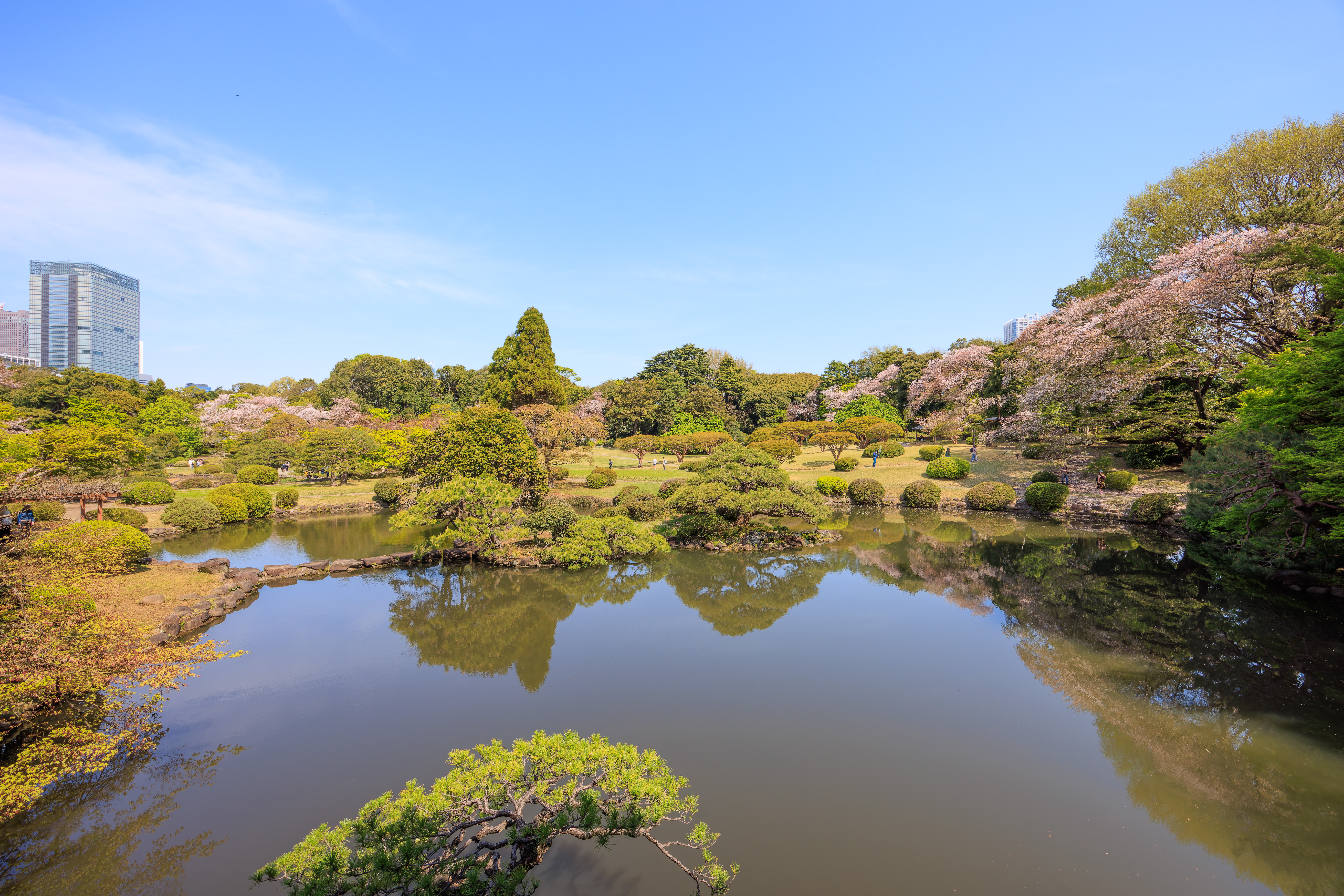After waking up at the Conrad, we had breakfast and ventured out to Shinjuku Gyoen. We were hoping to see some sakura but it was well past peak in the park. We spent the remainder of the day with cousins here and there in Tokyo.
Morning
After waking up at the Conrad, we got ready to go downstairs for breakfast at opening time, around 6:30am.
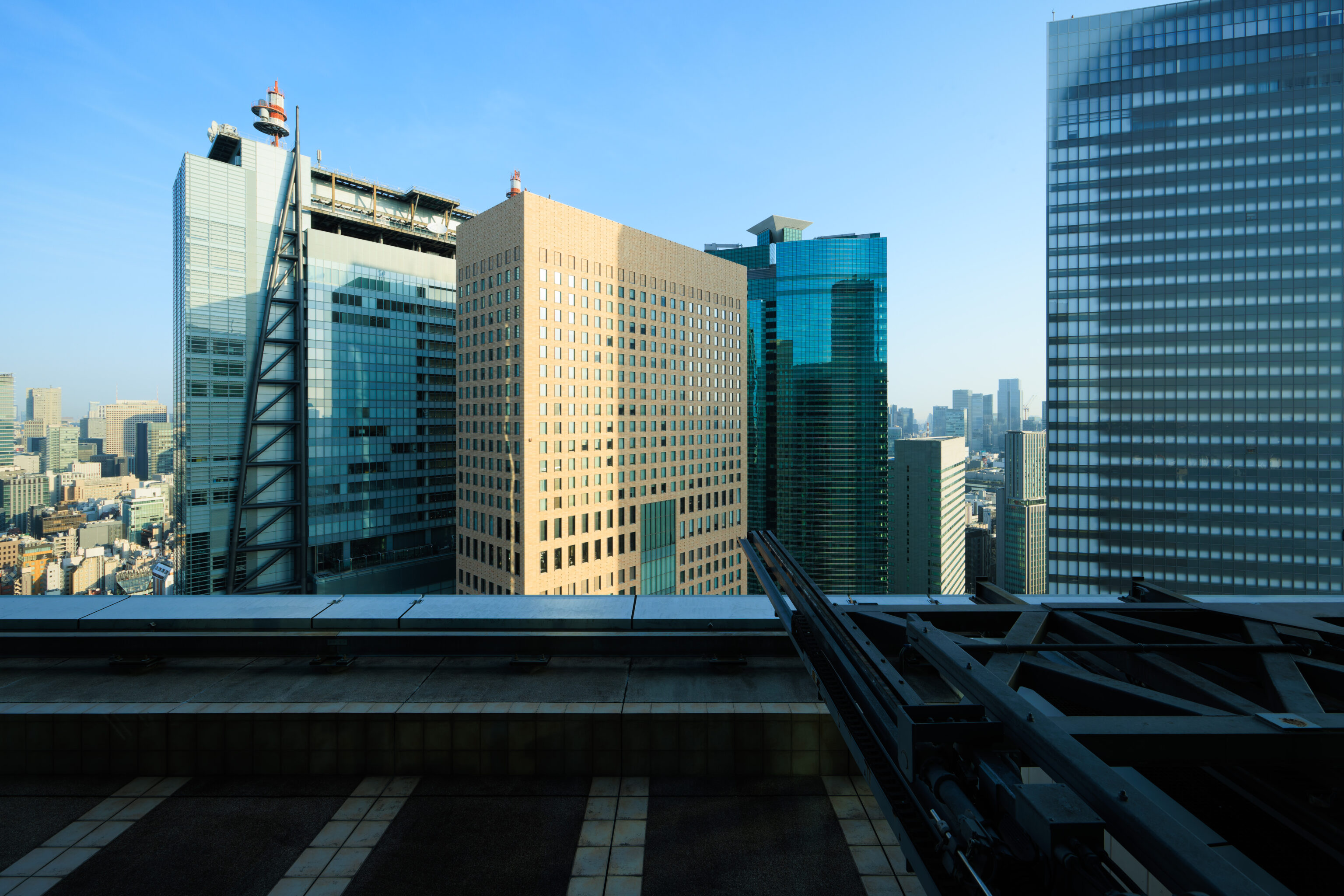
Our room faced north so there wasn’t much of a view as the skyline was obscured by the other office towers nearby.
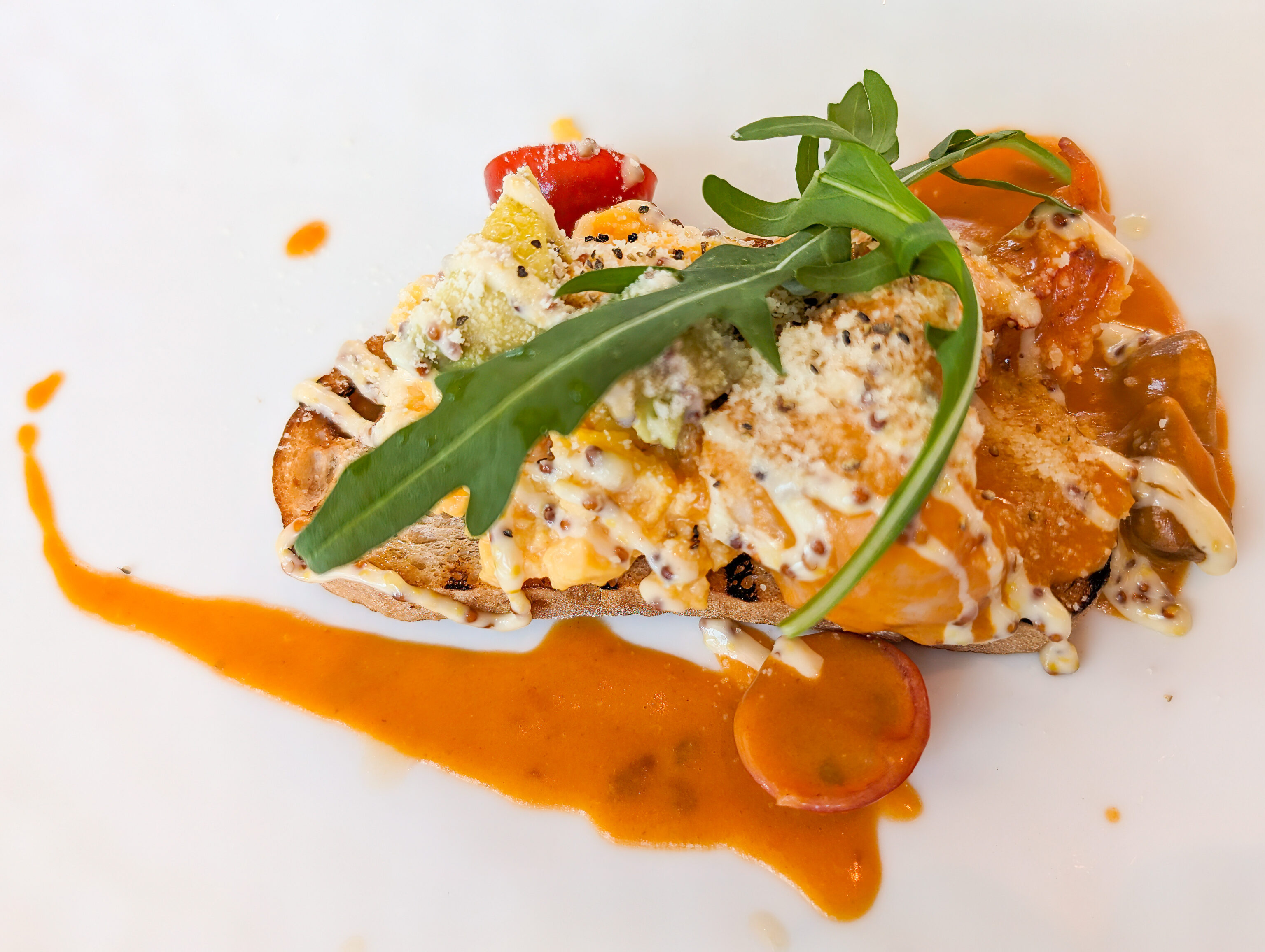
Pain de seigle, lobster, scrambled egg, tomatoes, avocado, mushrooms, parmesan cheese
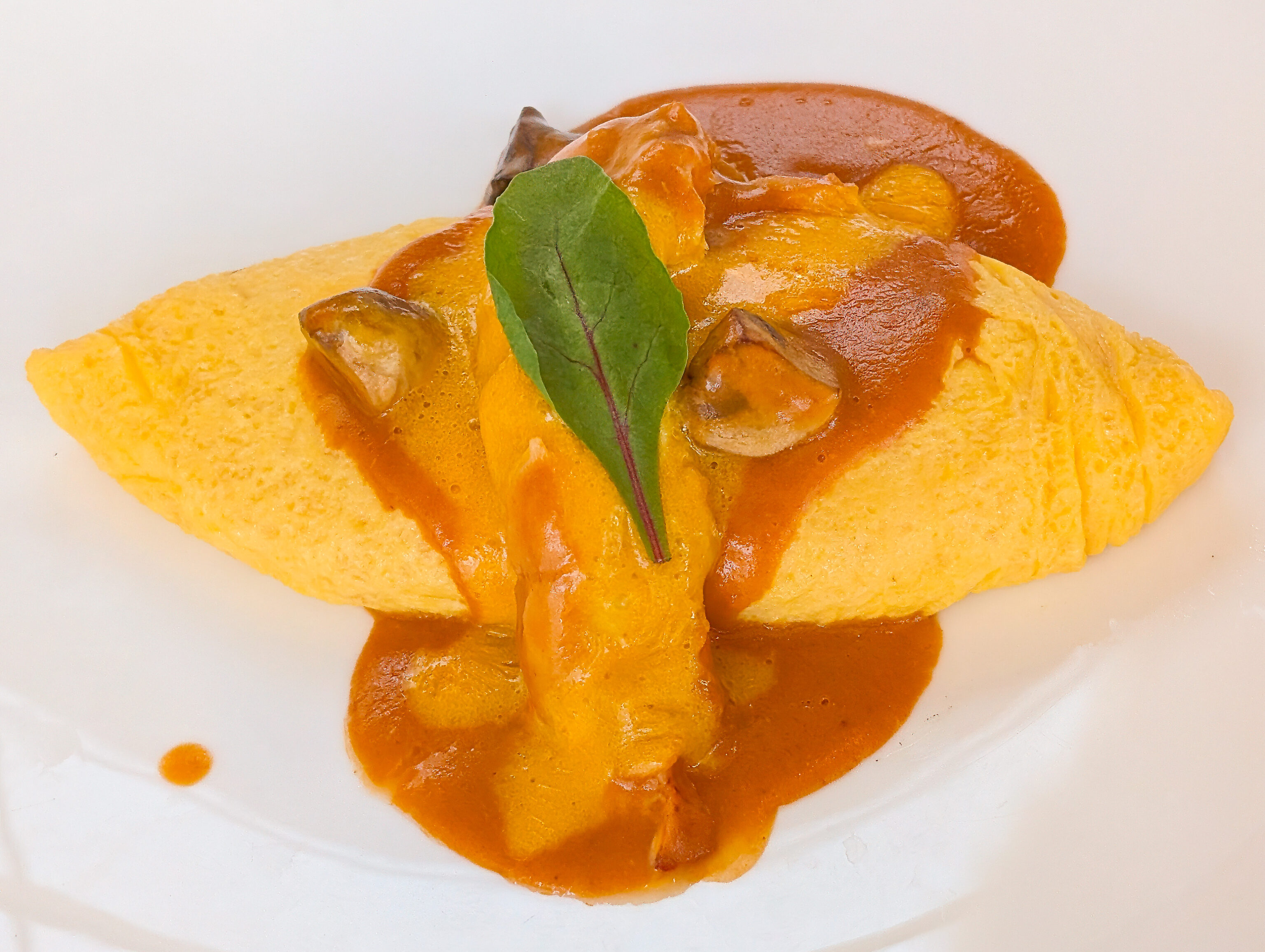
Lobster, mushroom fricassee, bisque sauce
The breakfast at lobby level, on the 28th floor, is buffet style but with the option of one menu item per person. We ordered the two lobster items on the menu. They felt a bit like they were trying to be too fancy with the menu.
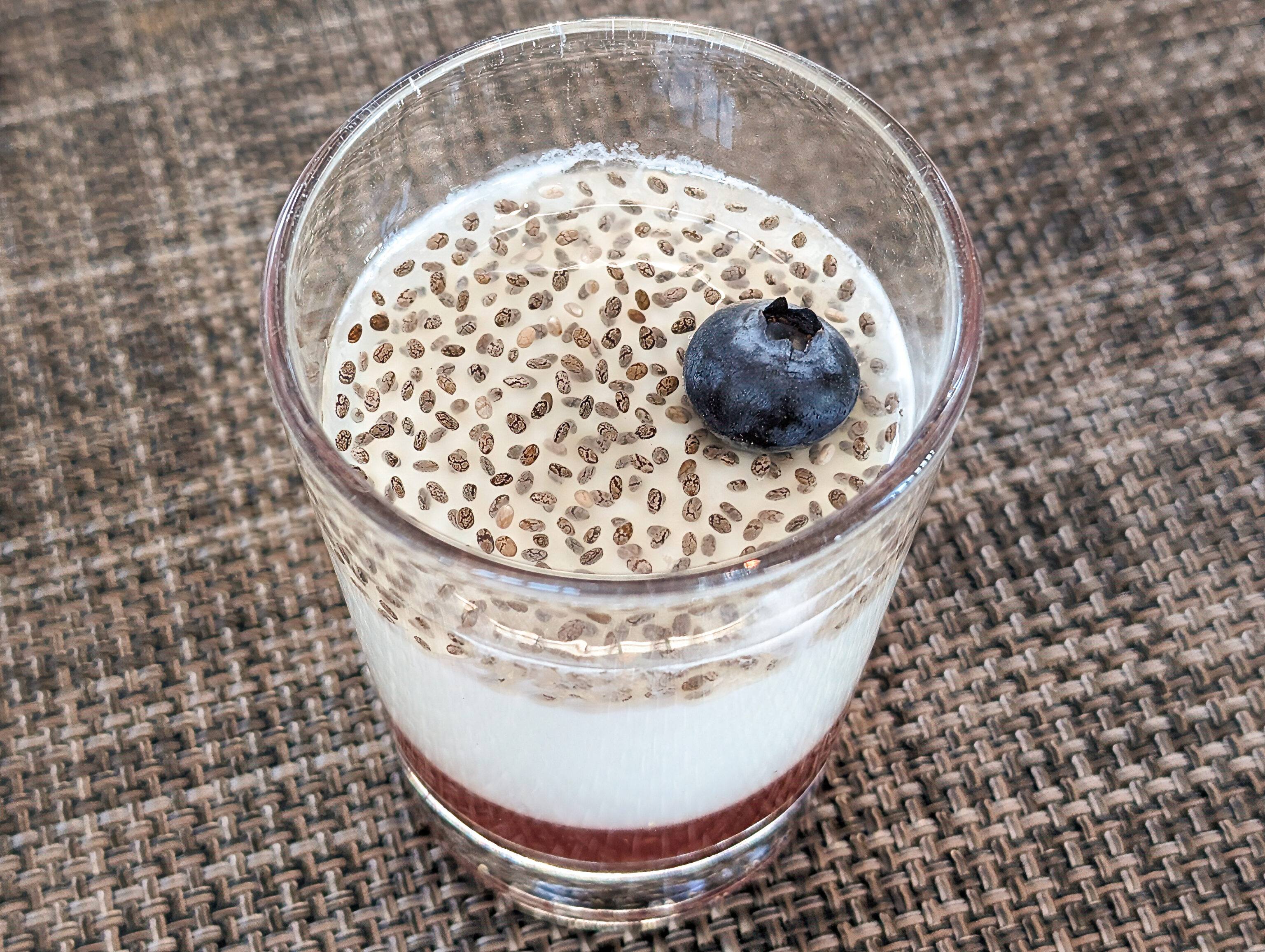
These reminded us of our recent trip to Munich! The Le Méridien Munich had them every morning at breakfast near the entrance.
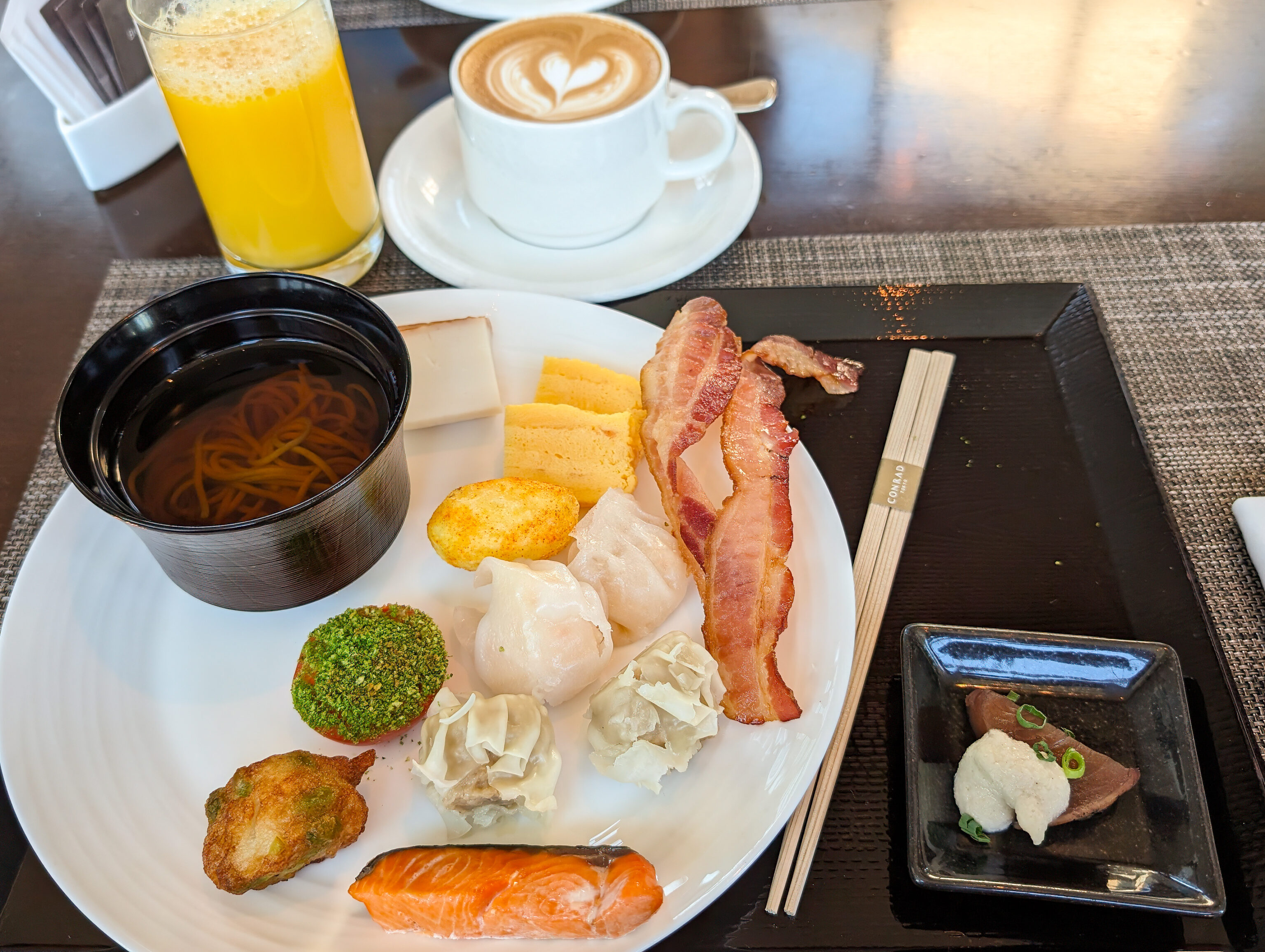
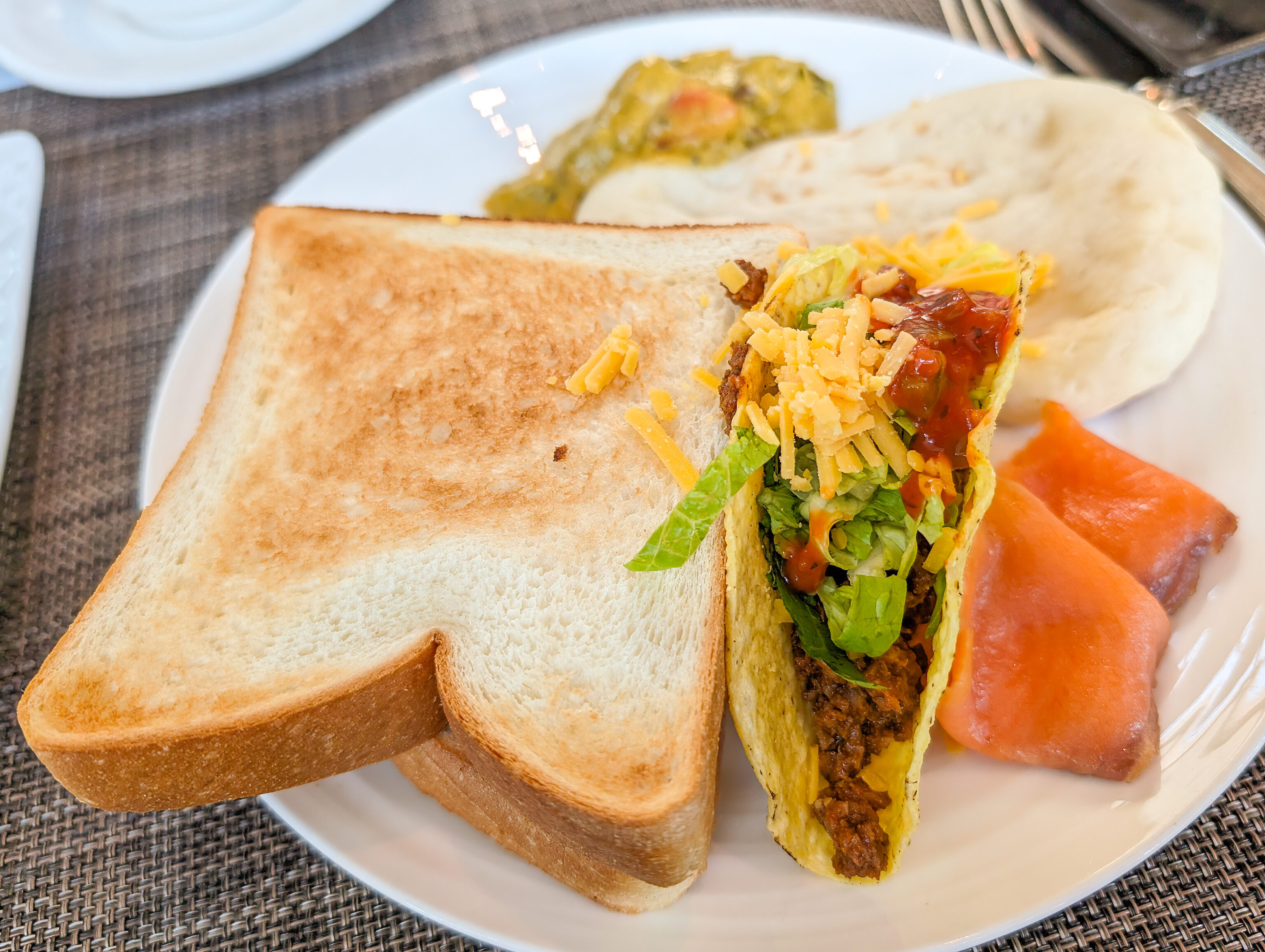
The buffet had a decent selection of items, but unfortunately some of the dishes were poorly executed. The dim sum items in particular were terrible. The tacos were a pretty authentic rendition of Taco Bell, though, I’m not sure that is something to be applauded!
Overall, we weren’t too impressed. We felt the breakfast at Mesm was substantially better. As we are Titanium with Marriott and Diamond with Hilton, both breakfasts were complimentary. However, the Conrad’s would have cost 6,500 JPY (~$42 USD) per person while the Mesm’s would have been 5,700 JPY (~$37 USD).
Shinjuku Gyoen
After breakfast, we headed over to visit Shinjuku Gyoen, a very large garden to the east of Shinjuku Station. We took the Oedo Line from Shiodome Station, right next to the Conrad, over to 国立競技場駅 Kokuritsu-Kyogijo Station.
We ended up walking in the wrong direction as the entrance to the east that looked like an entrance wasn’t actually an entrance! We backtracked to the actual entrance at the south side of the park.
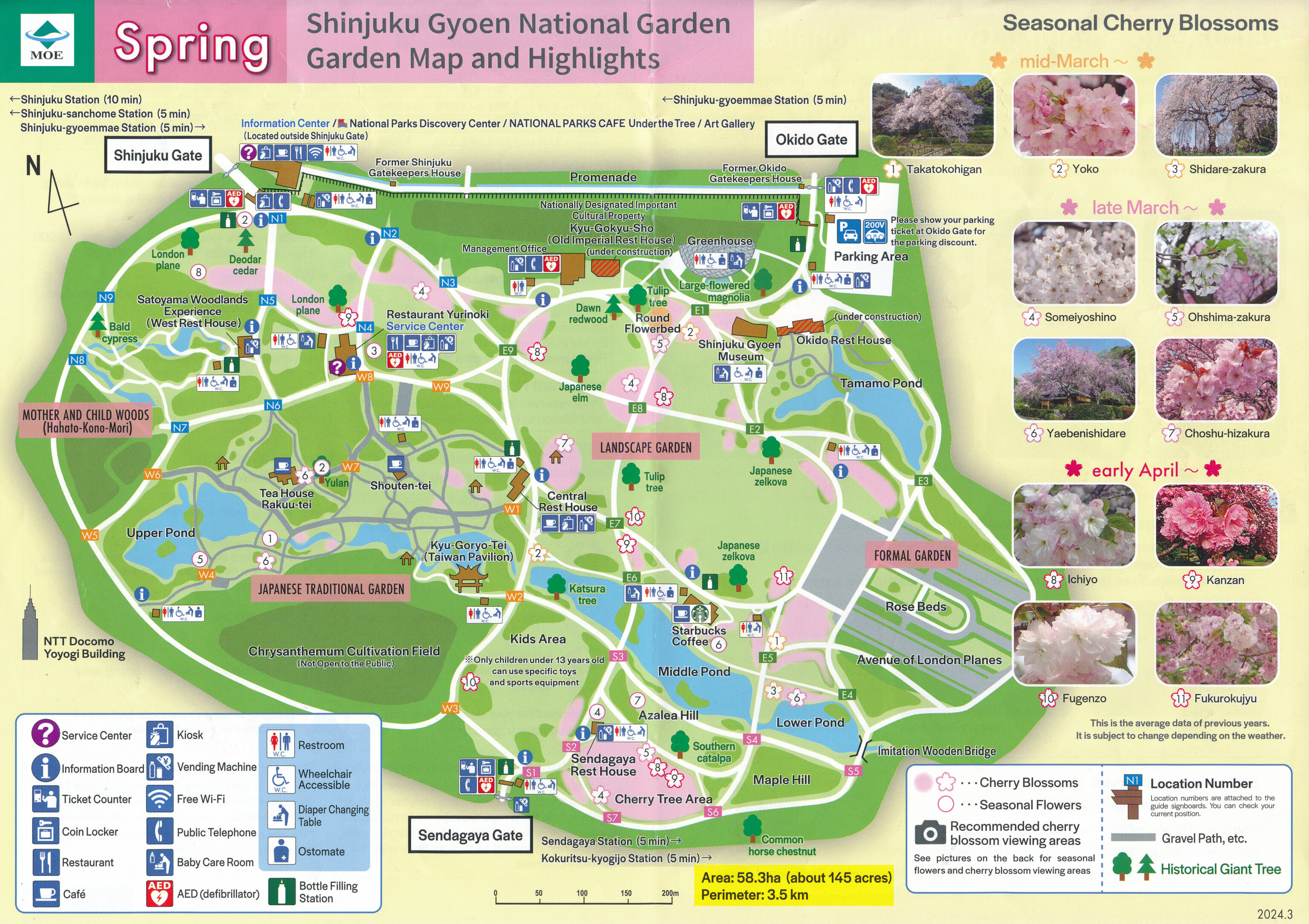
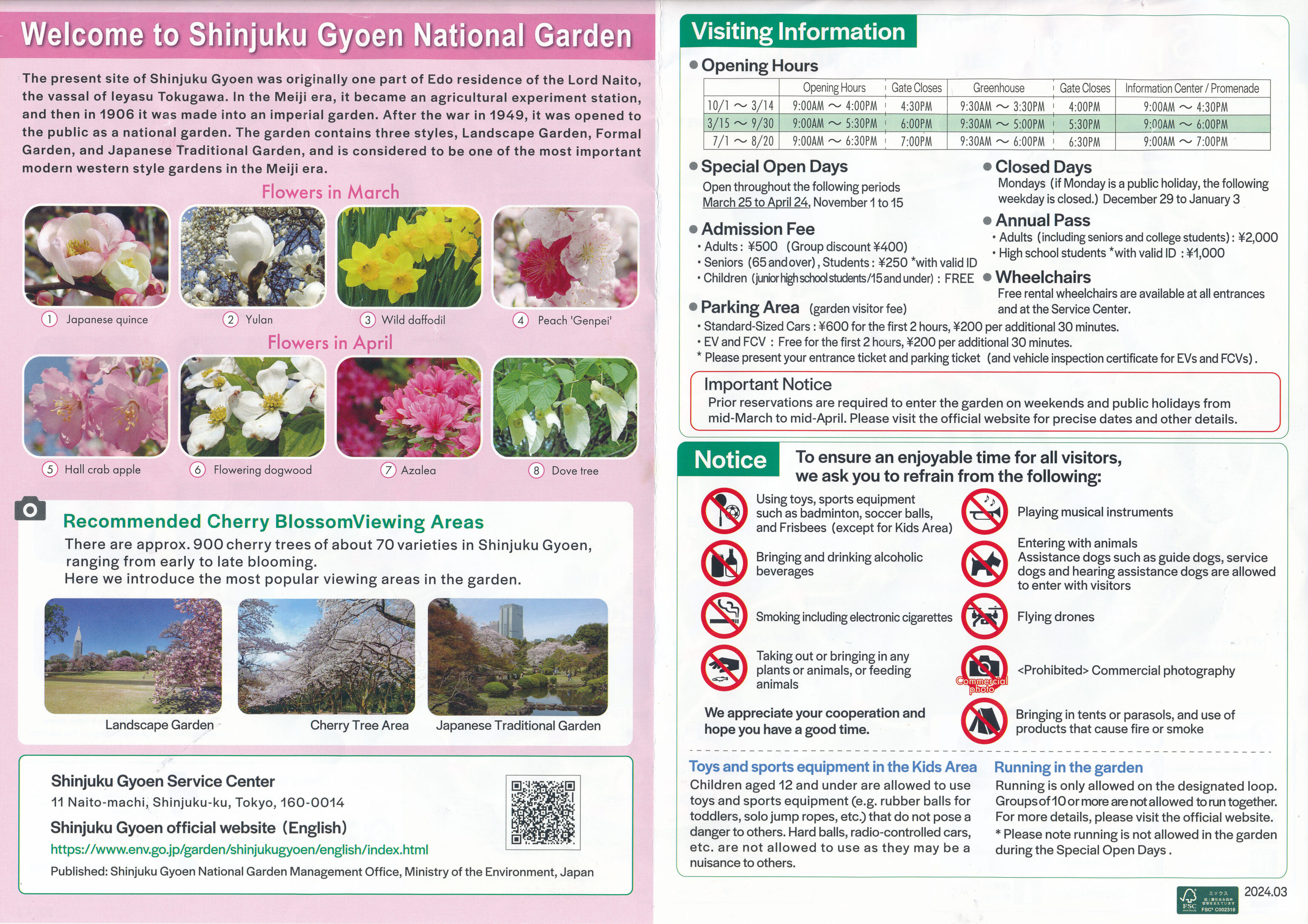
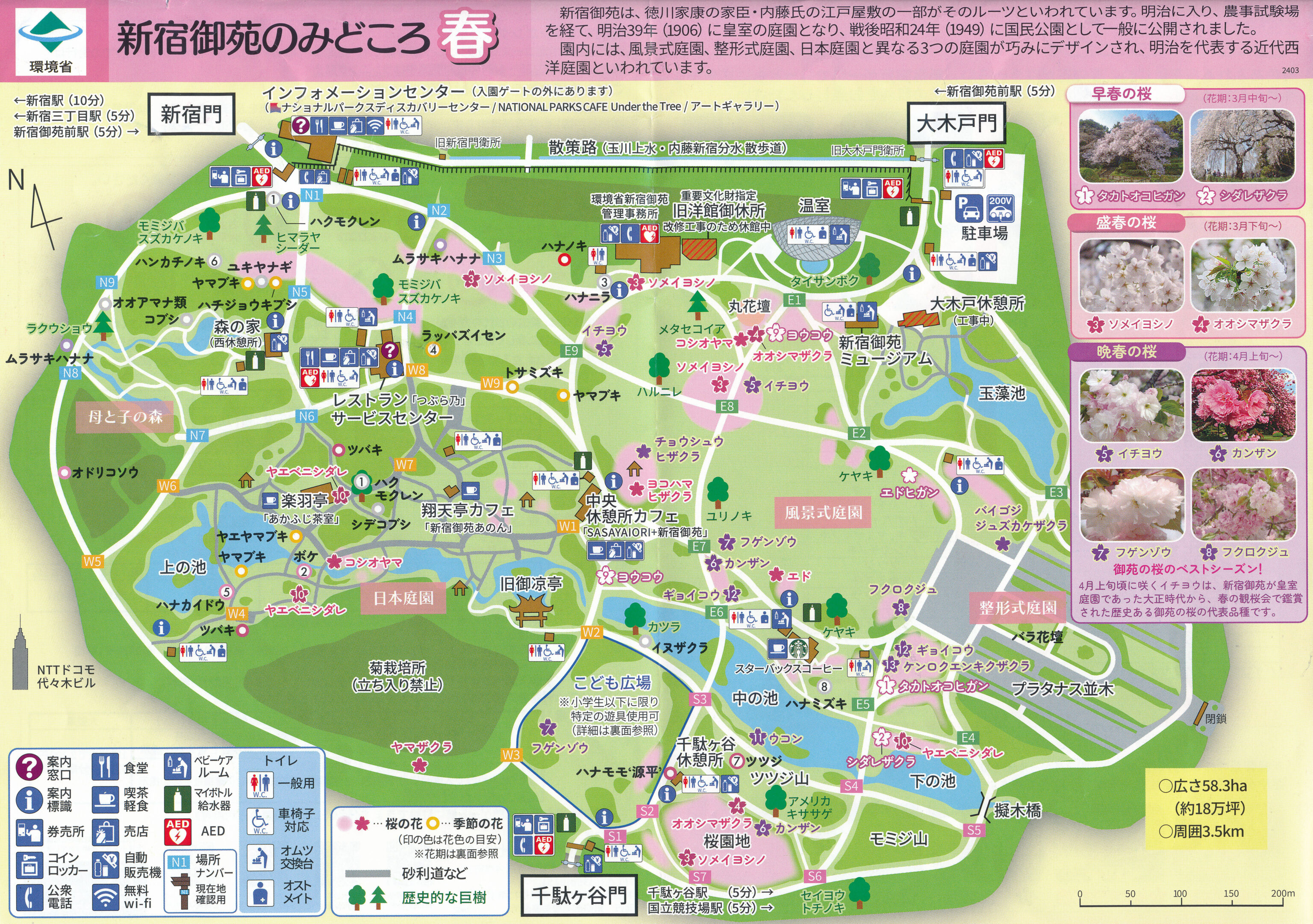
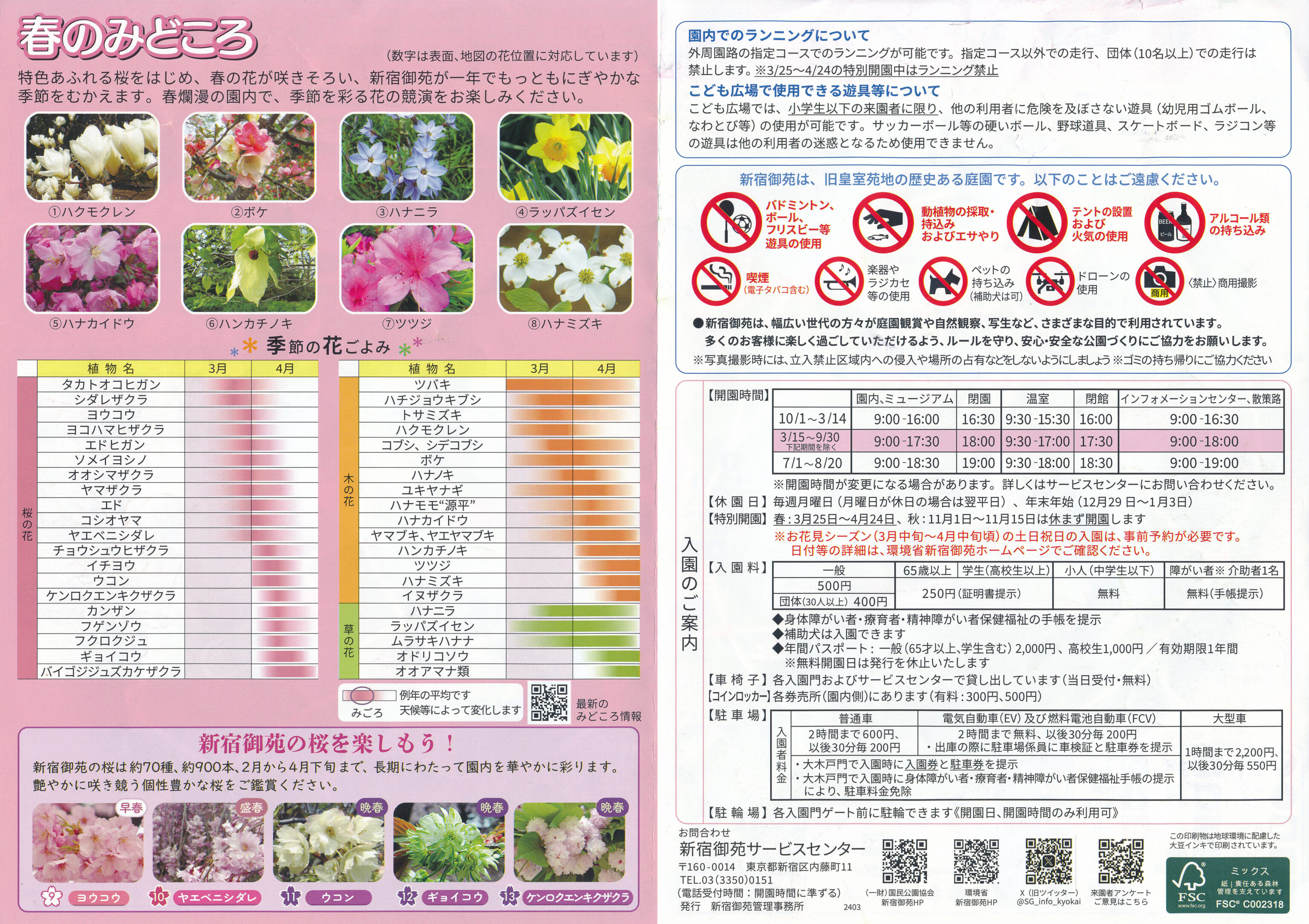
The ticket office provided maps in various languages. We picked up both English and Japanese copies. The maps were not quite the same, identifying different flowers that would be in bloom and providing different information on the back.
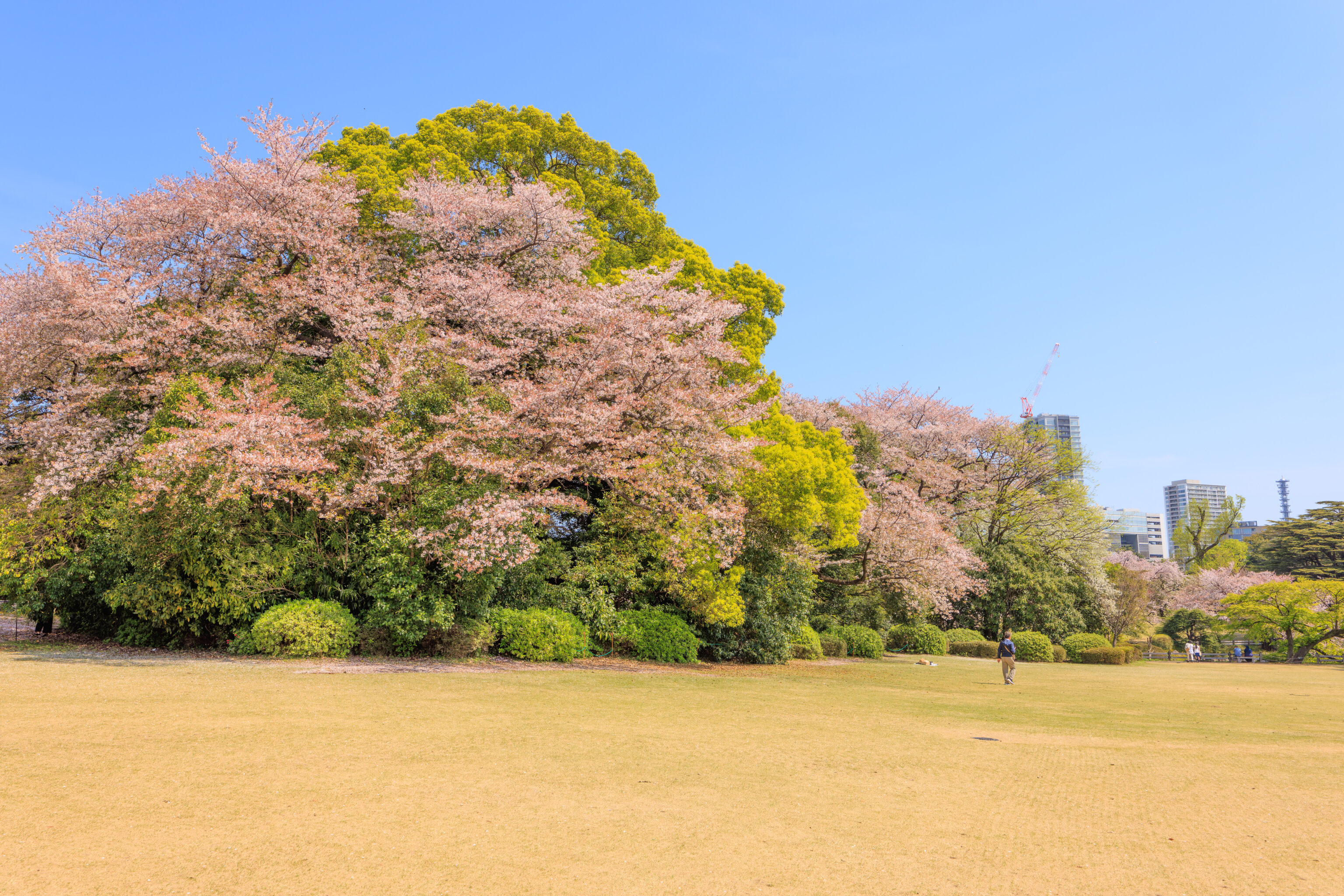
After entering the park, we headed left, to the west. We walked by the Kids Area, which seemed to be mostly a large open field. There were a few large cherry trees that were well past peak, though they didn’t look too bad from afar.
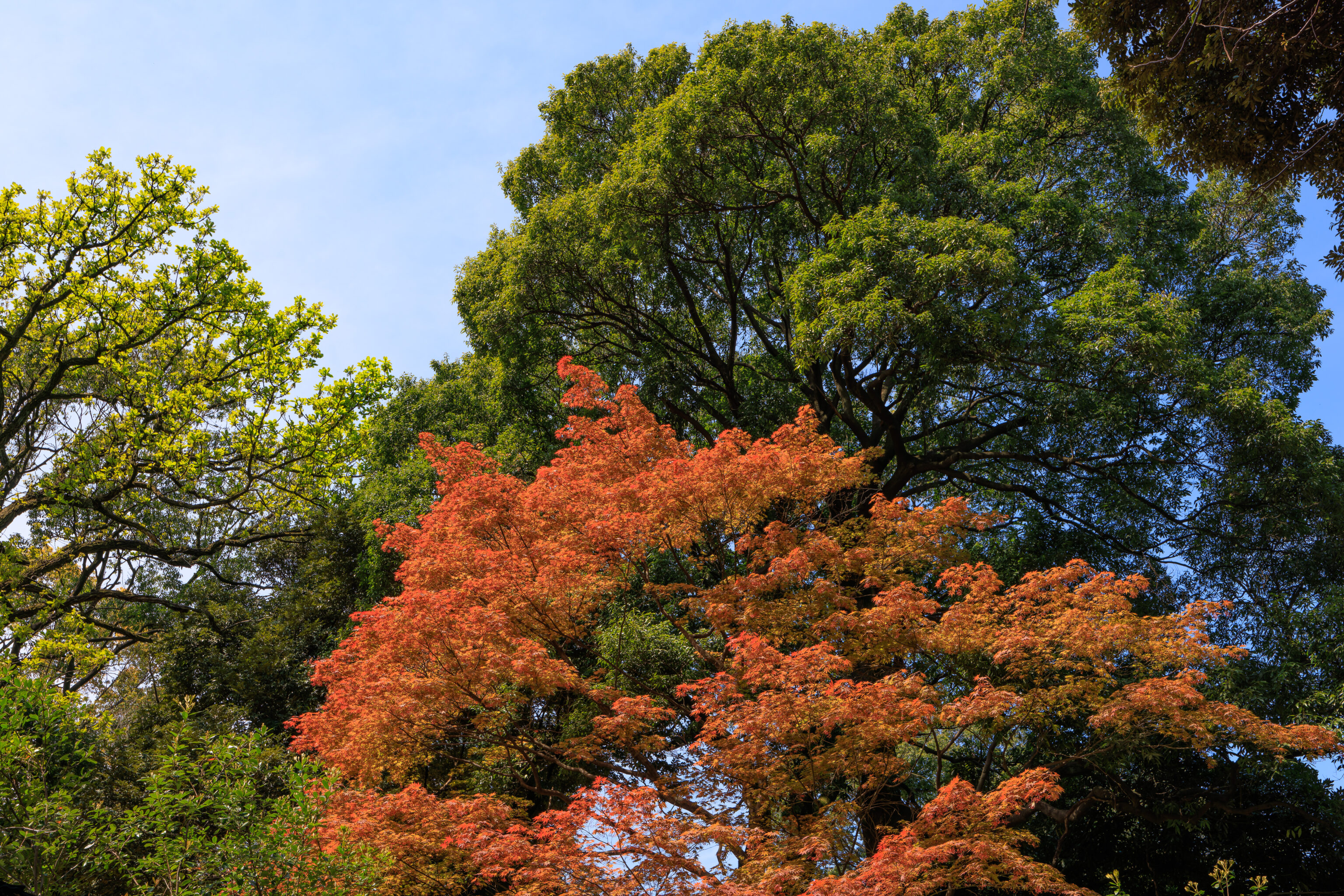
We started heading north, passing by this tree which reminded us of the fall foliage in Kyoto.
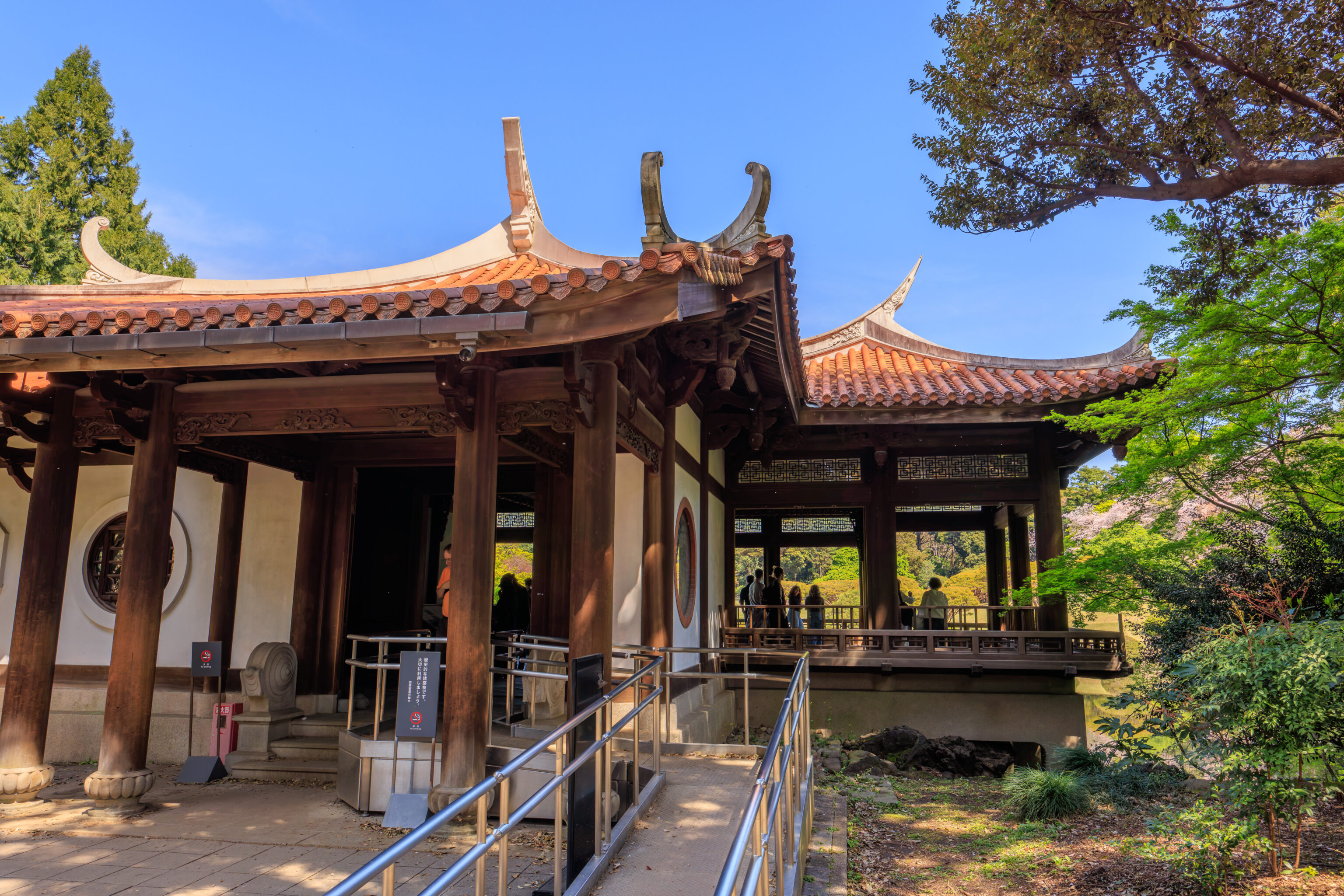
We came upon this building, the Kyu-Goryo-Tei, referred to as the Taiwan Pavilion. A sign outside helpfully provided some information in English:
Kyu-Goryo-Tei (Taiwan Pavilion)
Kyu-Goryo-Tei is also known as the Taiwan Pavilion. The building was a gift from Japanese people in Taiwan, a region that was then a part of the Japanese empire. The building was given to commemorate the 1924 wedding of Crown Prince Hirohito (1901-1989), who became emperor in 1926. Construction began in 1927.
The Relaxation Room of the Taiwan Pavilion is a large, open space with a panoramic view of the Japanese Garden beyond. Newspapers of the time referred to it as "A relaxing place above a tranquil pond... An ideal location to enjoy the cool breezes of a summer stroll."
This building is a rare example of authentic Chinese-style architecture in Japan, and it is highly prized for the color and shape of the roof, the style of the windows, the interior design, and other features. The architectural style is called Binnan, from China' s southern Fujian Province, and was popular in Taiwan from the early nineteenth century.
The inversion of the eaves and the stucco swallowtail structure, the color of the roof tiles, the shape of the supports for the pillars, and the decorative stones of the porte-cochère, as well as the ornamental interior design, are all typical features of the Binnan style. Many of the construction materials were brought from Taiwan. Taiwan cedars were used for the pillars, and Taiwan cypress was used in the ceiling panels.
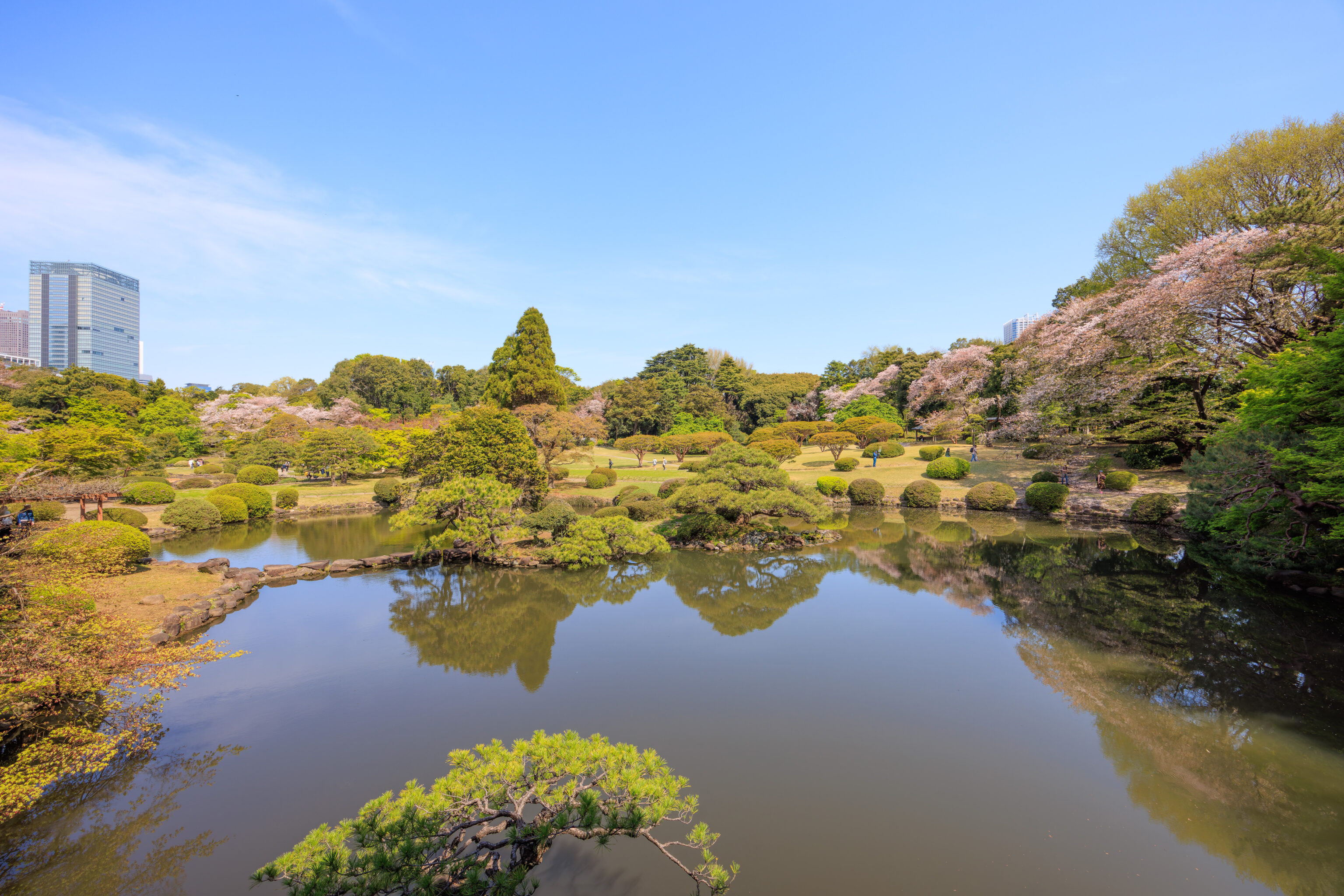
The pavilion had a beautiful view of the adjacent pond to the north. We saw what may be more sakura in the distance.
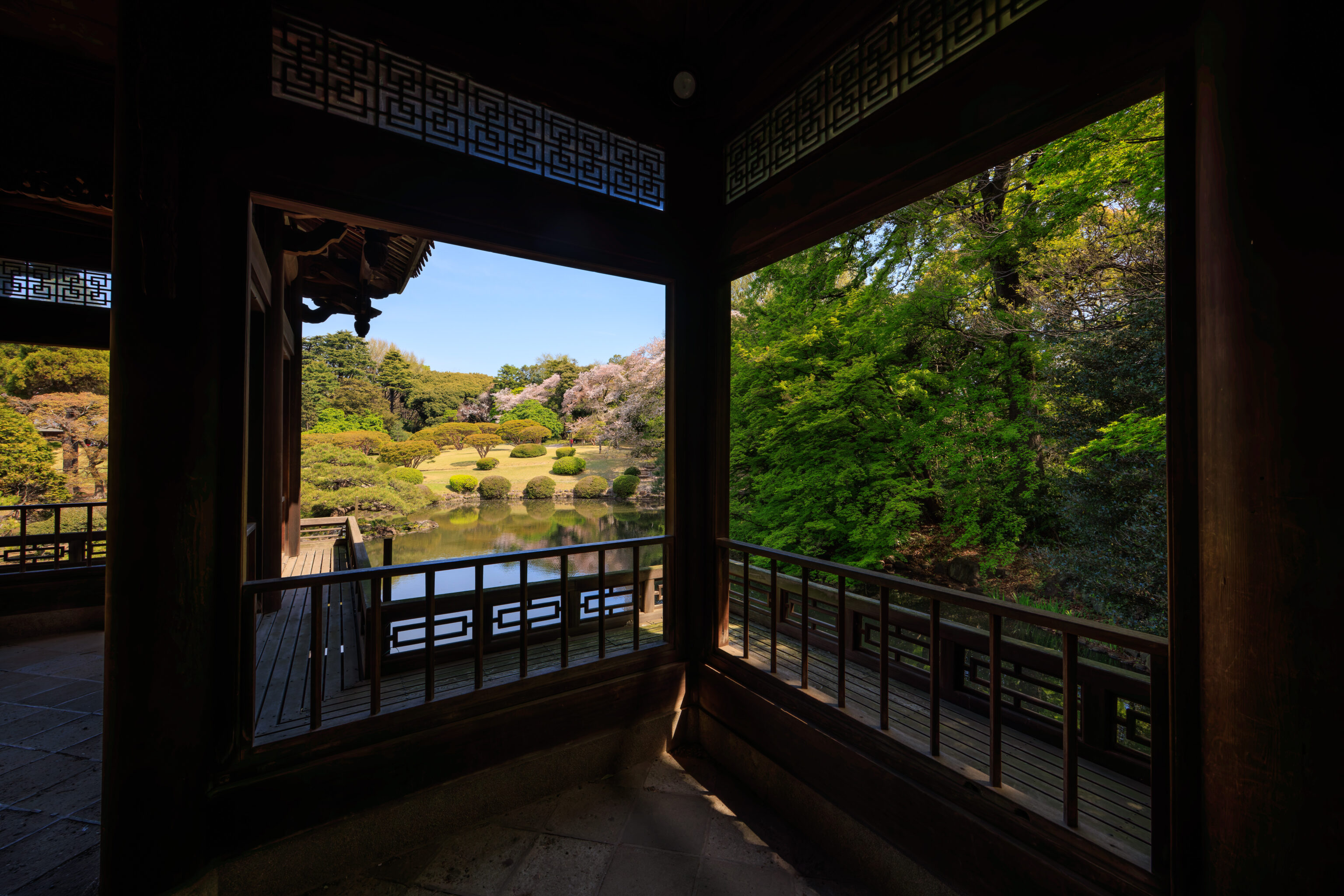
The view from the east side of the main room in the pavilion.
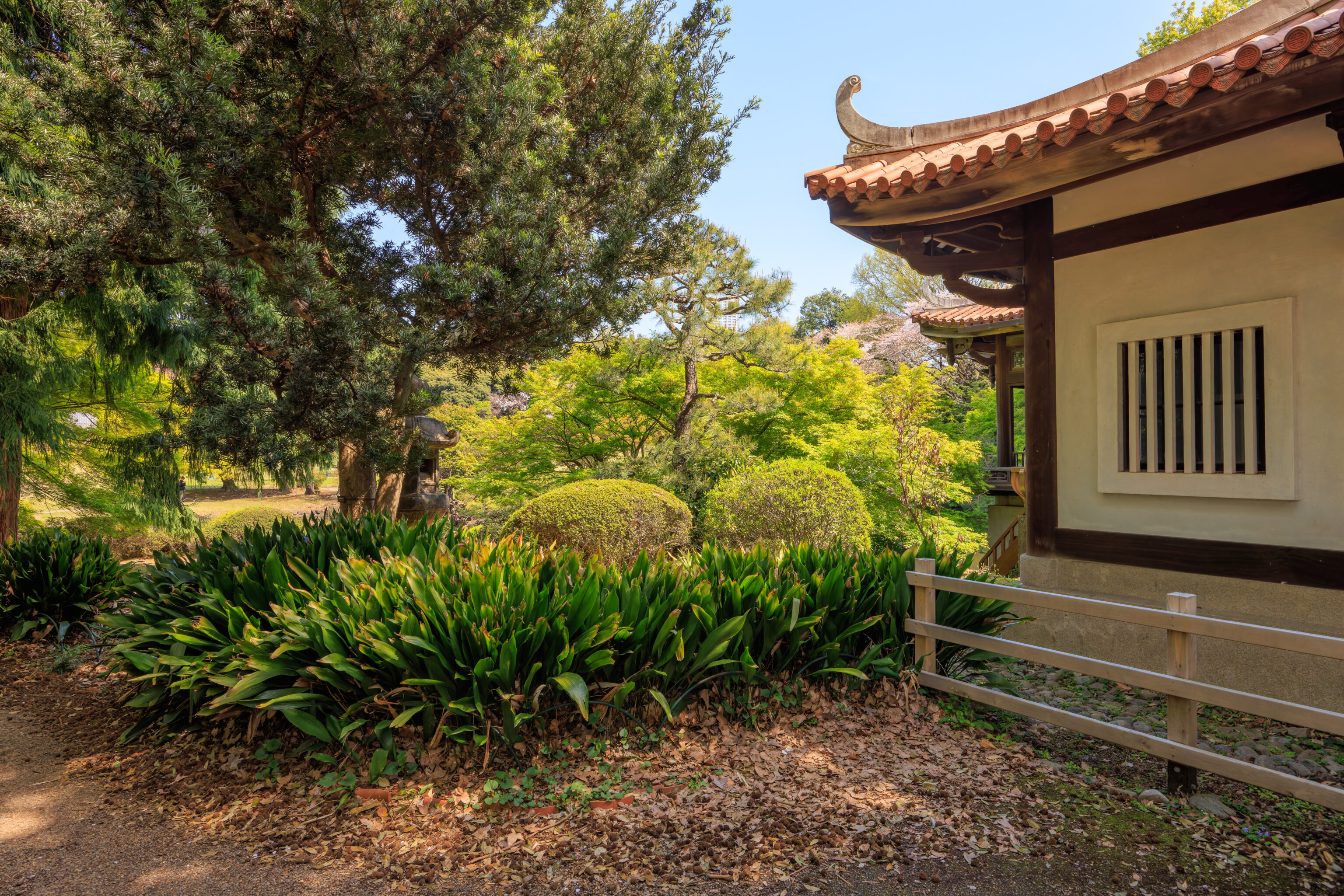
After a taking a quick look inside, we headed back out and continued walking to the west.
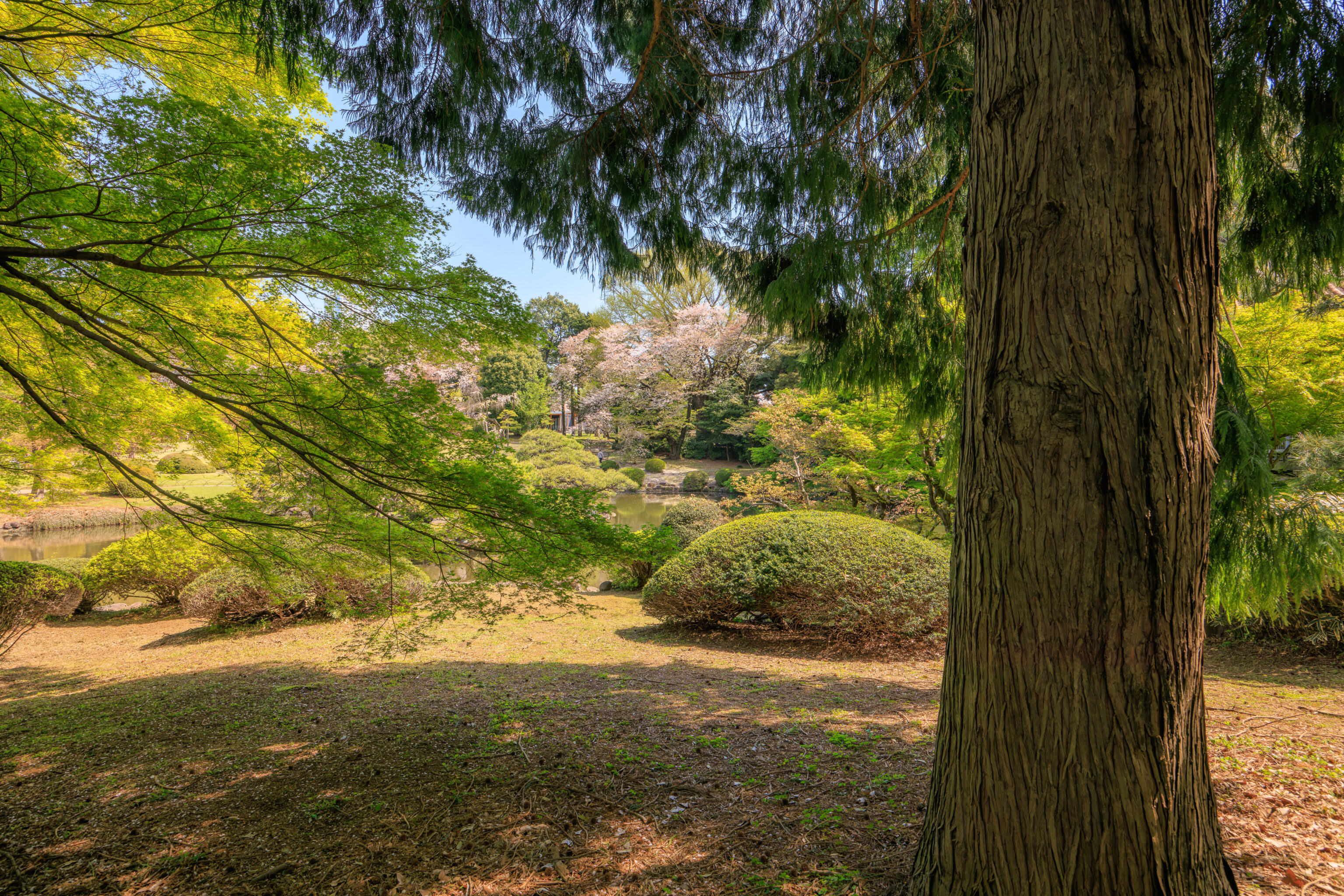
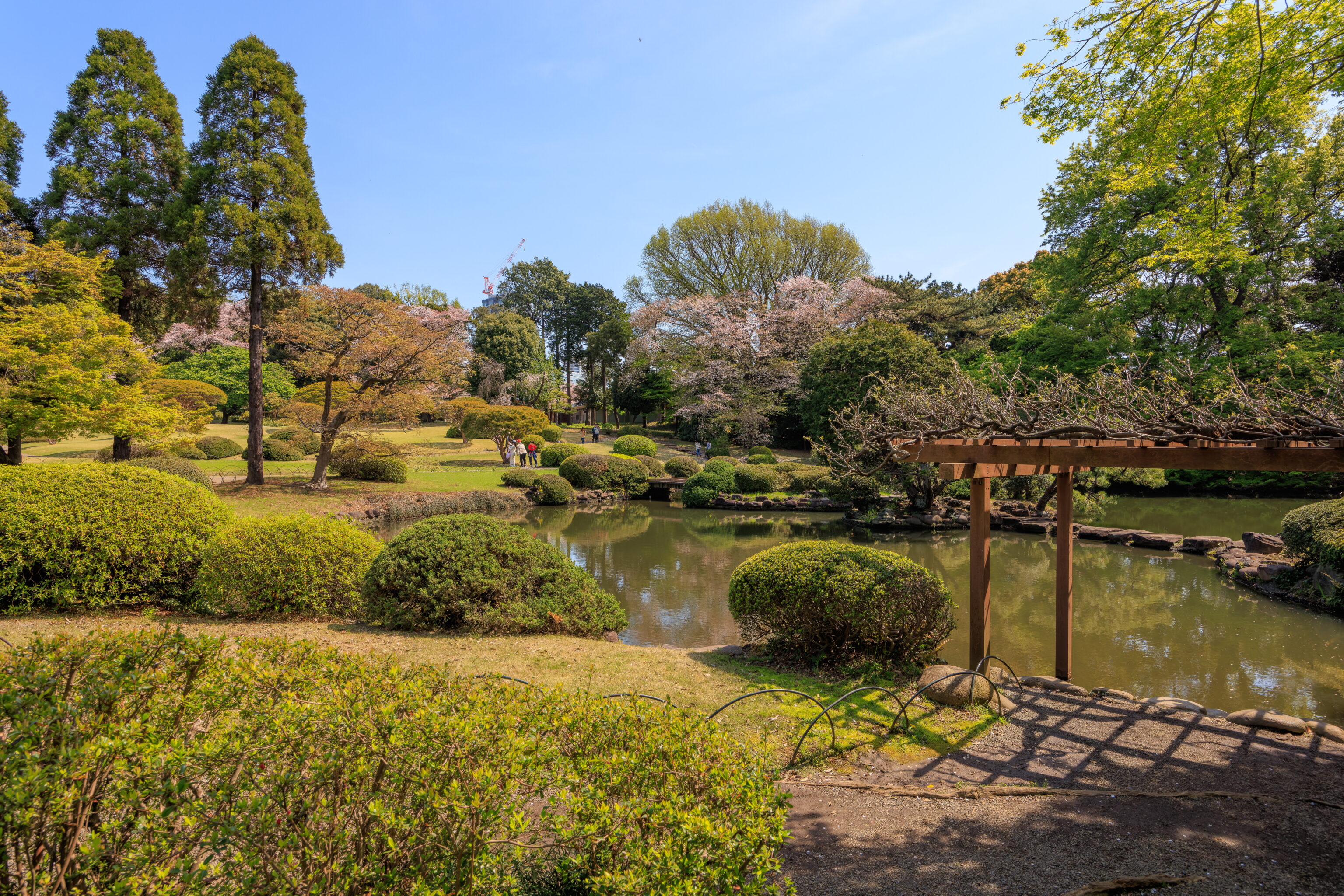
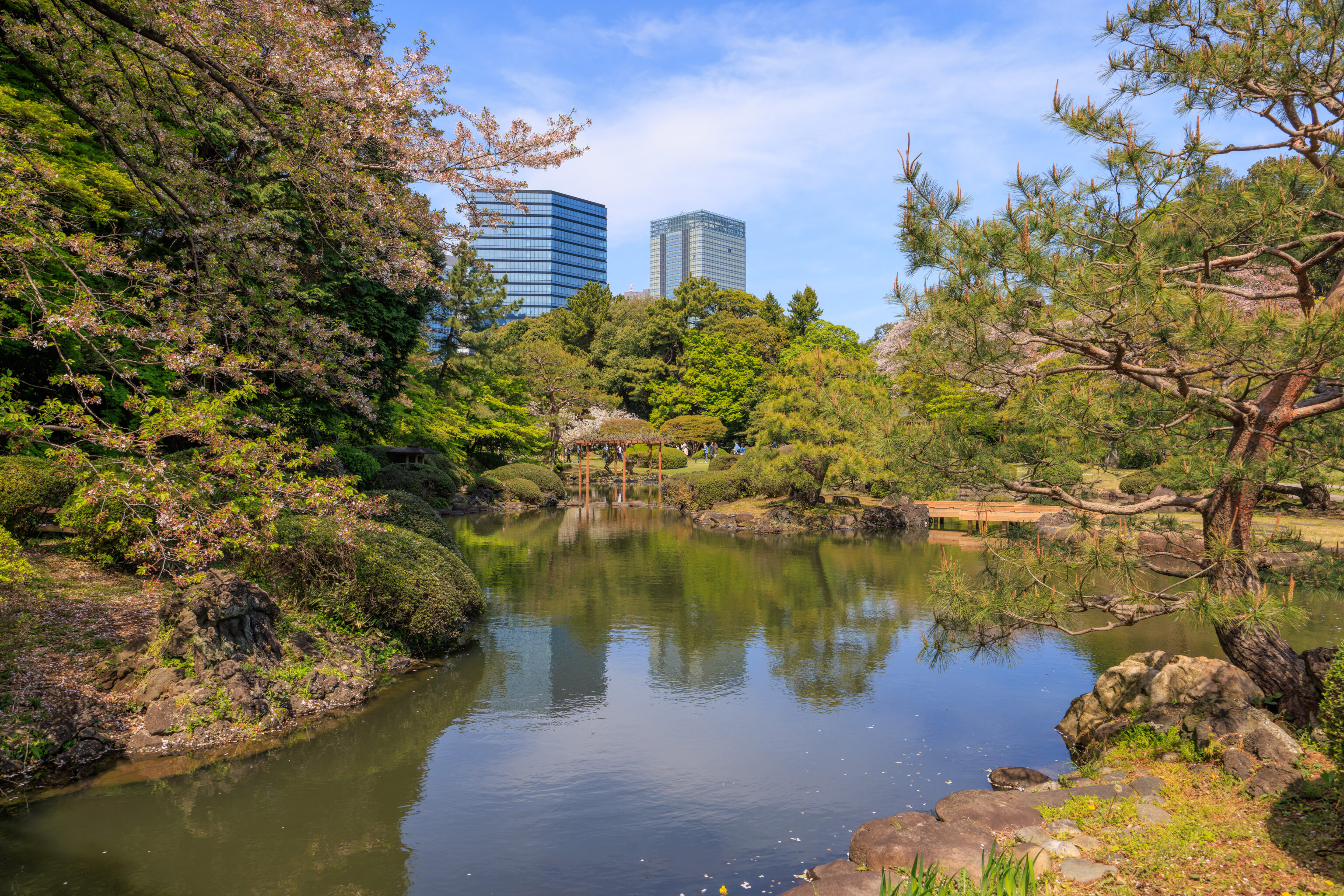
We walked just a little bit before reaching the next pond to the west.
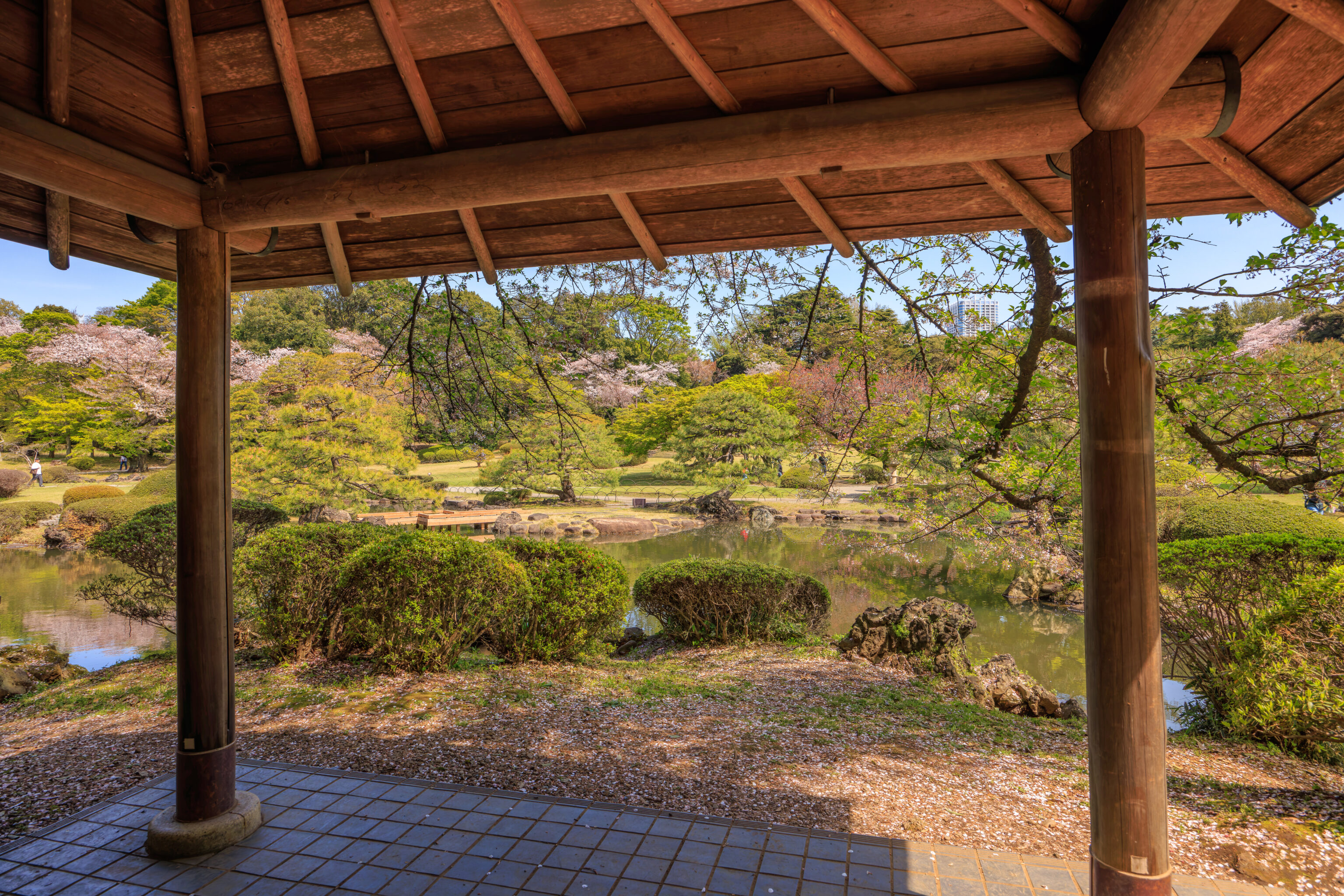
There was a nice little open pavilion to rest under.
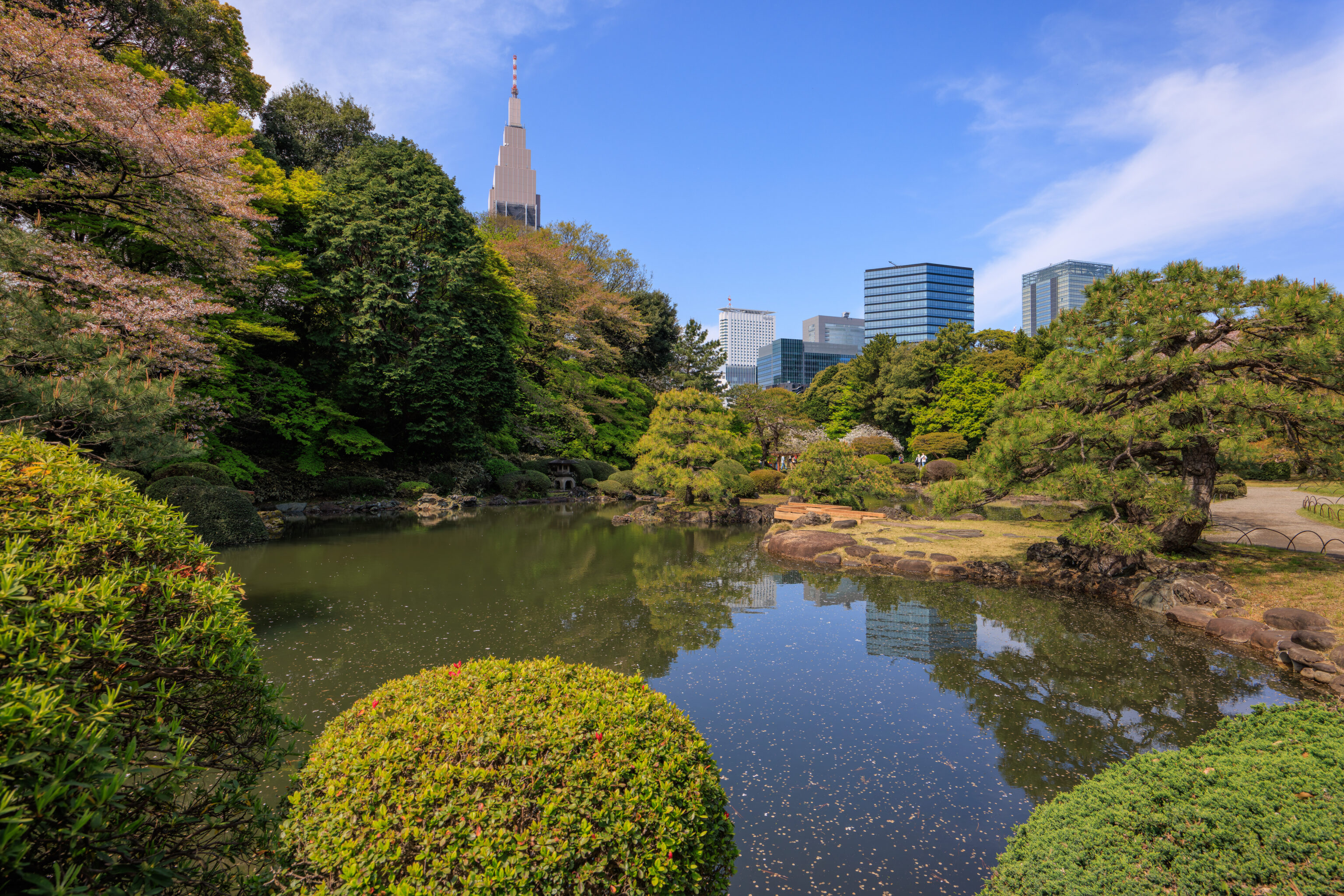
We started to walk around the pond via its north side. Looking to the west, we could see some of the taller buildings in Shinjuku. The pointy topped building on the left is the NTT Docomo Yoyogi Building. We know this because it is identified on the map!
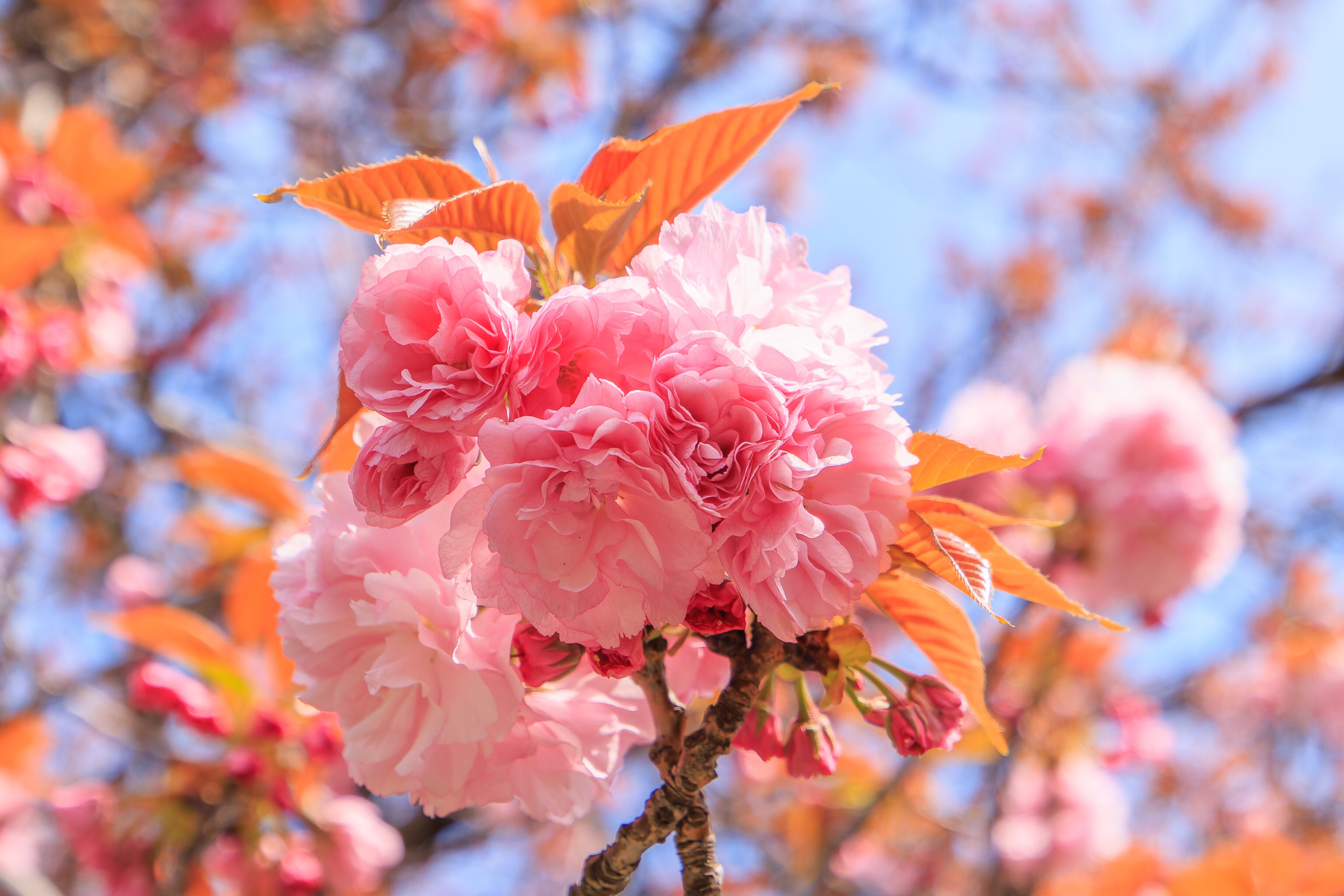
These flowers, on the north side of the pond, seem to be Kanzan, identified as cherry blossom #9 on the English map. They are supposed to bloom in early April, so its more or less the right time for them to be in bloom.
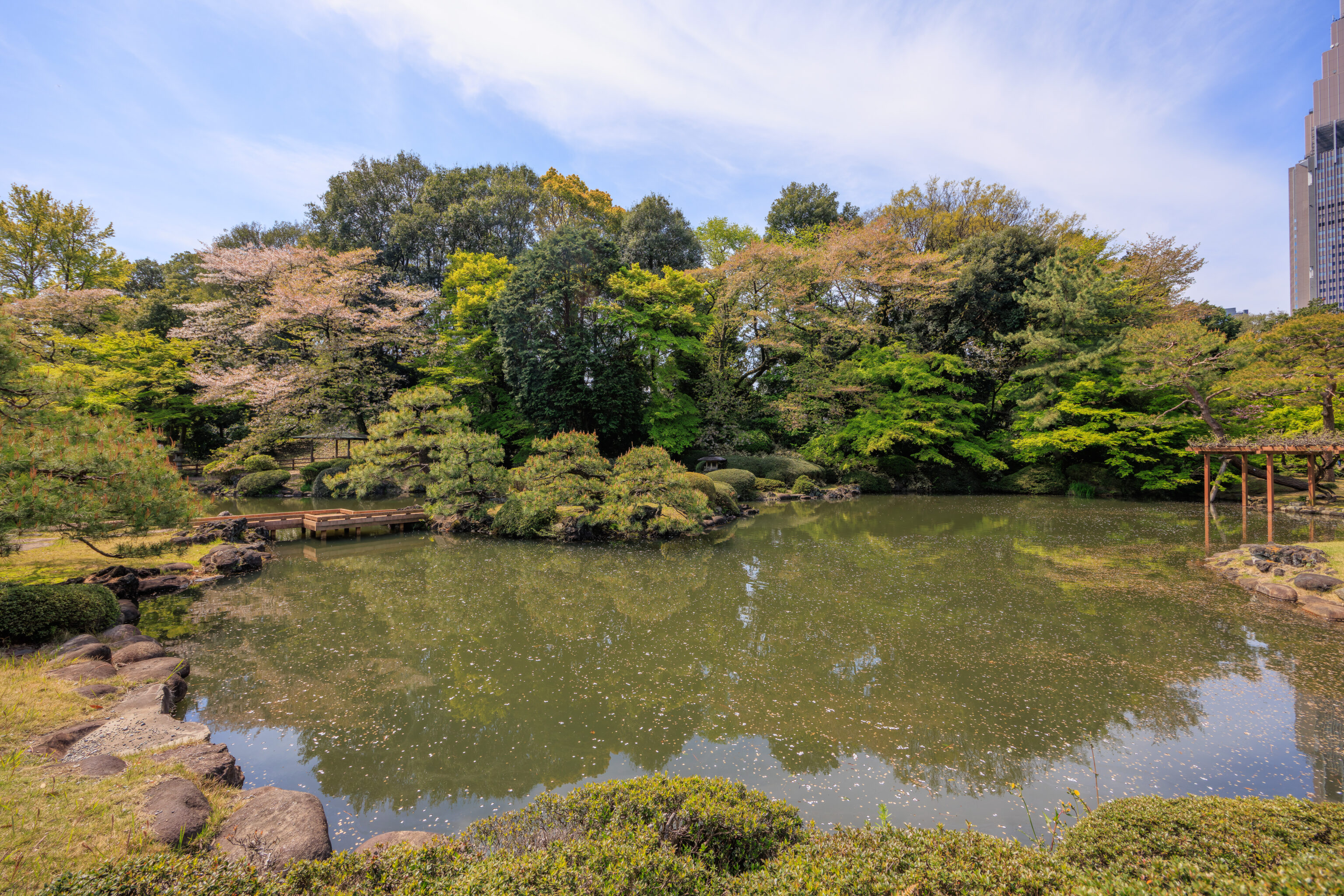
The little pavilion we were at is visible here on the left. The bridge on the left is, unfortunately, not a 八橋 Yatsuhashi.
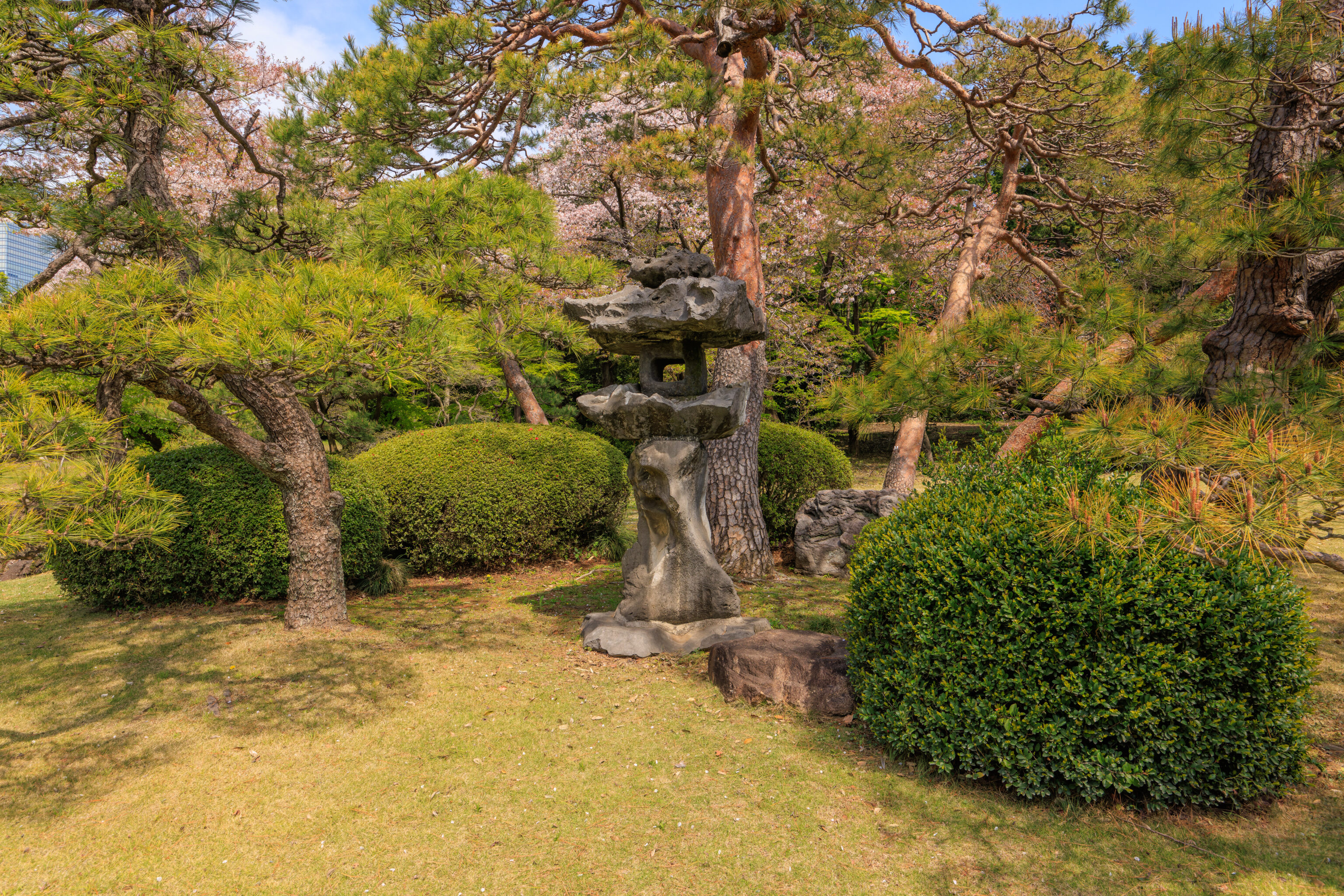
An interesting stone lantern! We’ve never seen one like this before.
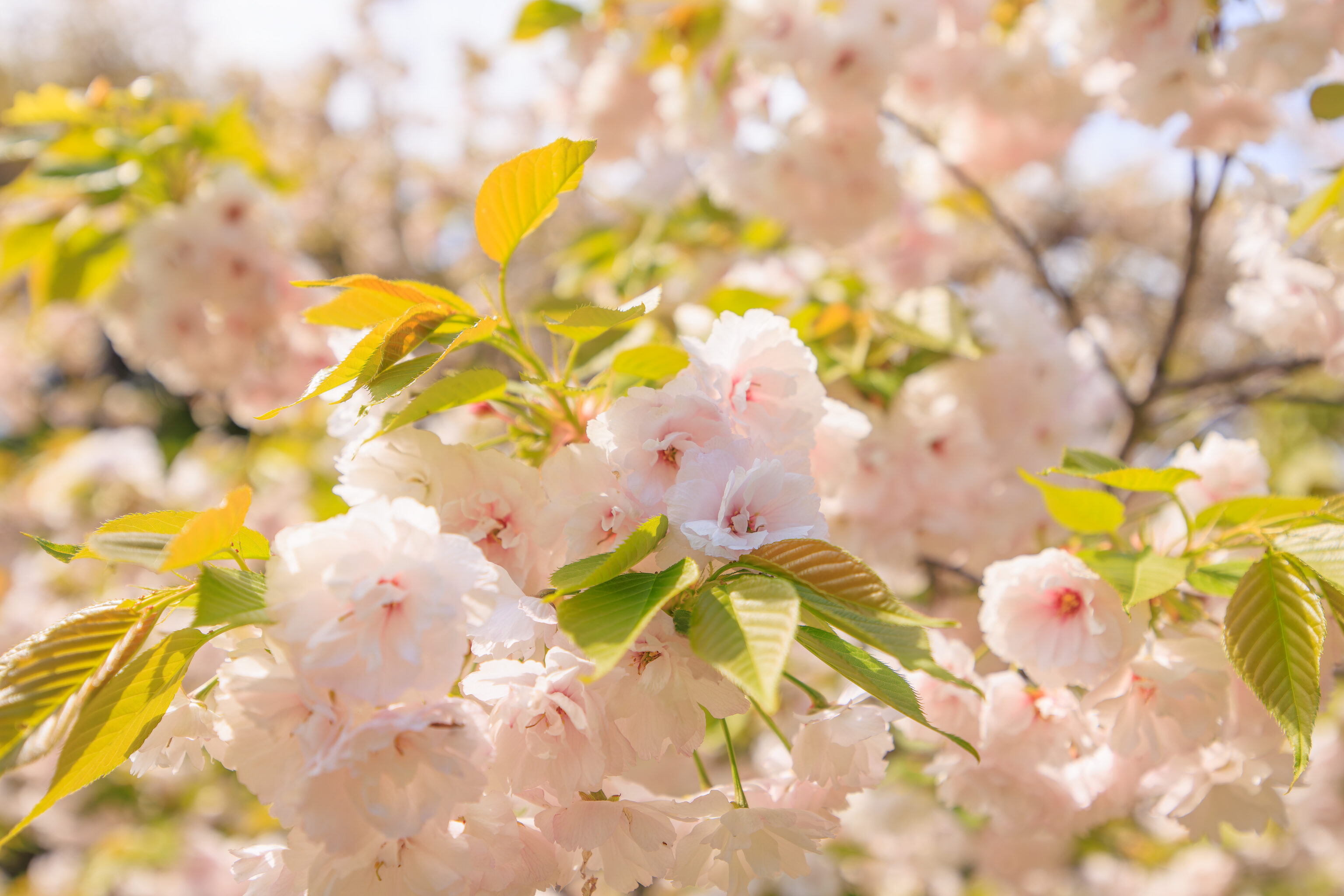
These might be Fugenzo, another type of cherry blossom identified as #10 on the English map.
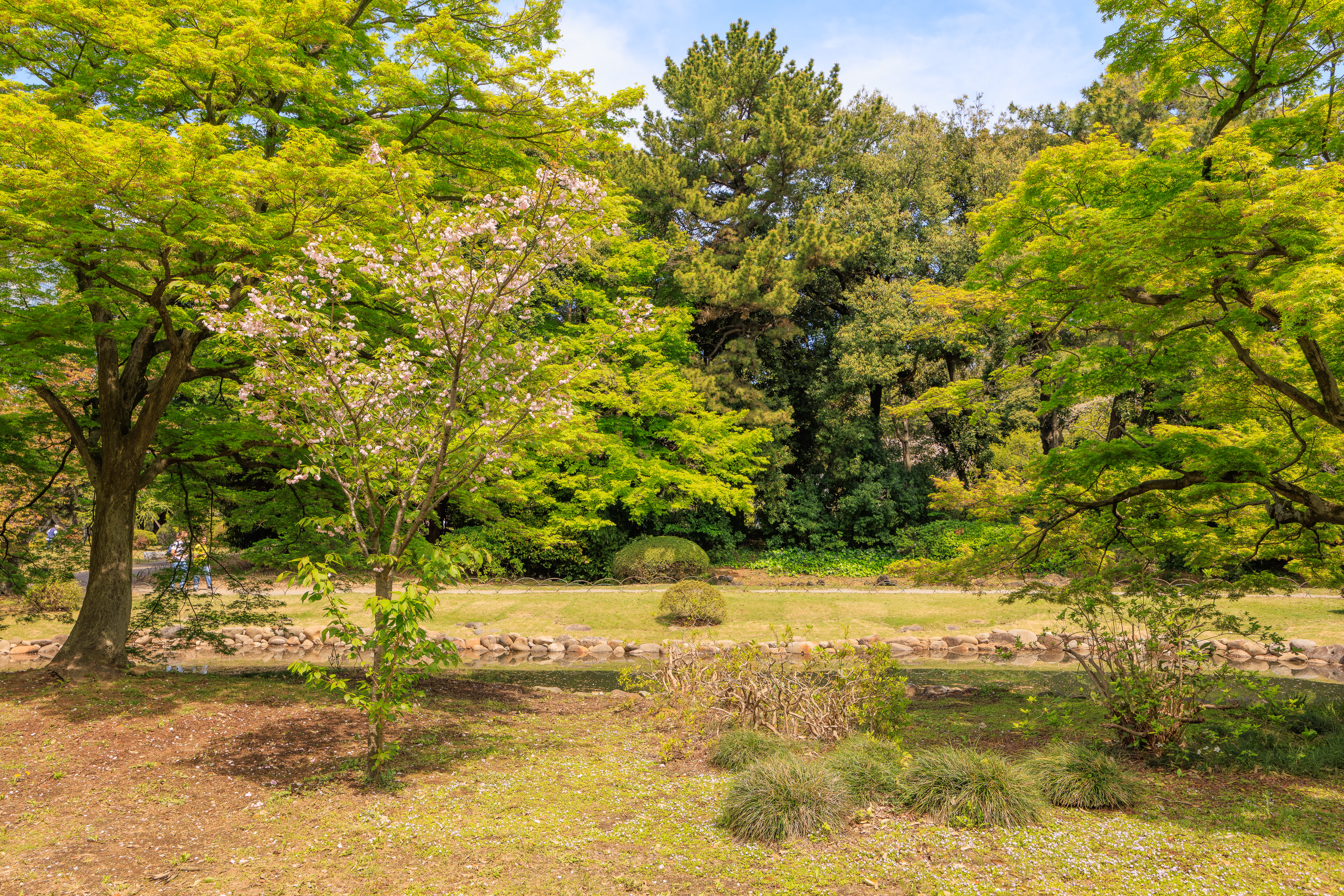
The view to the north as we continued walking to the west, next to a small stream that links the ponds together.
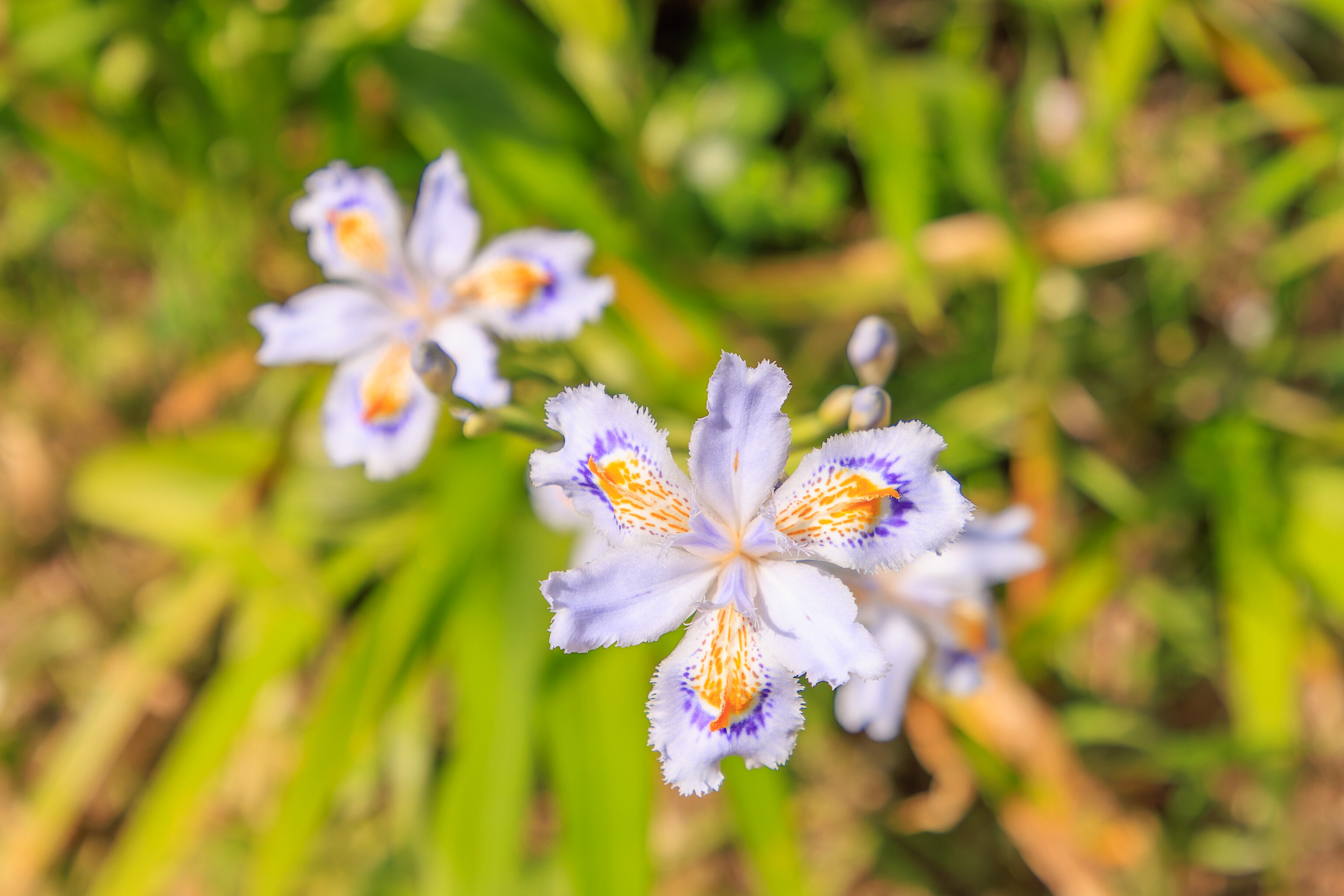
We walked by a few Iris Japonica! We just saw some yesterday at Kamakura! Apparently, Japanese Iris refers to a different plant species rather than Iris Japonica, which is rather confusing.
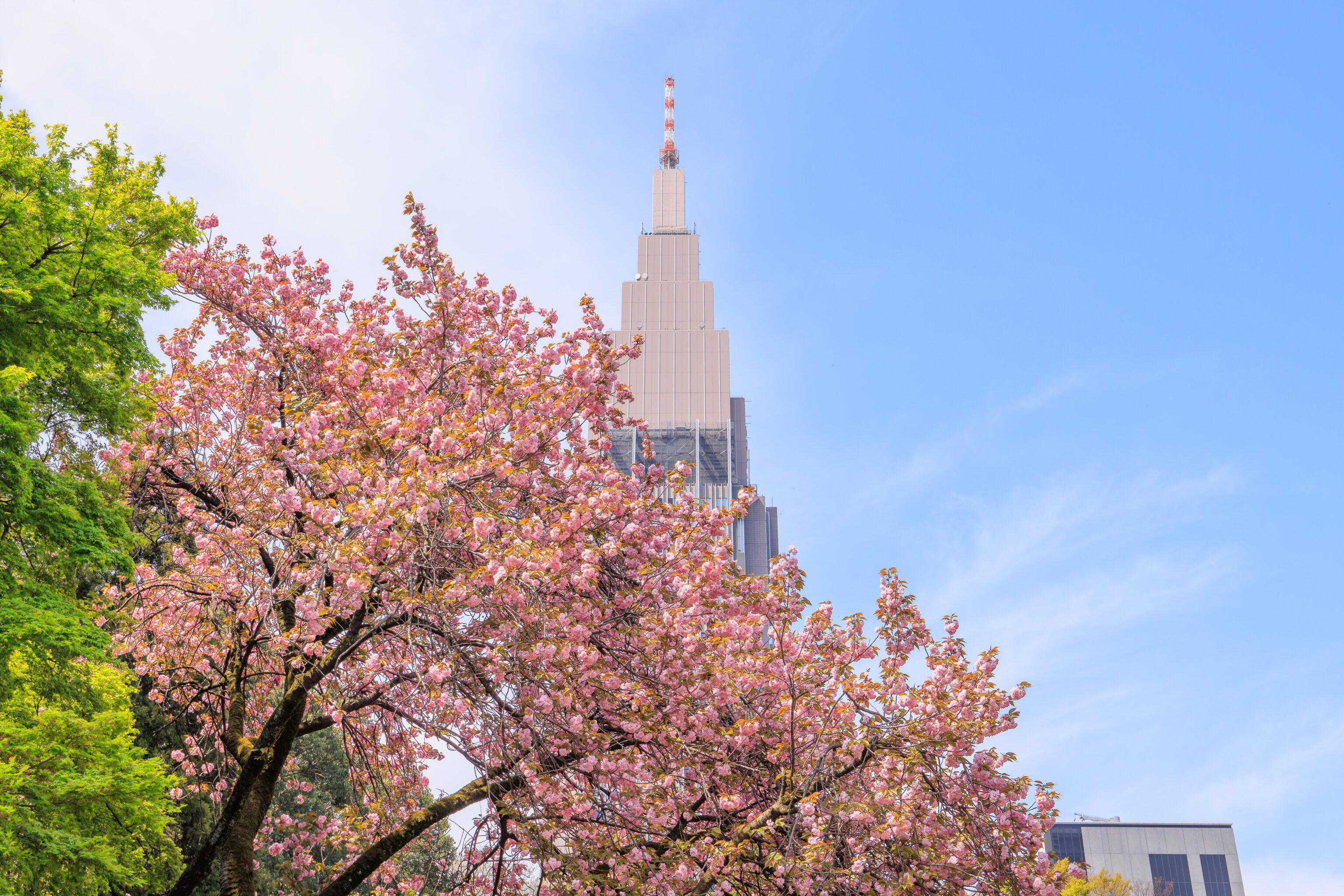
This tree, near the eastern edge of the western pond, seems to be another Kanzan.
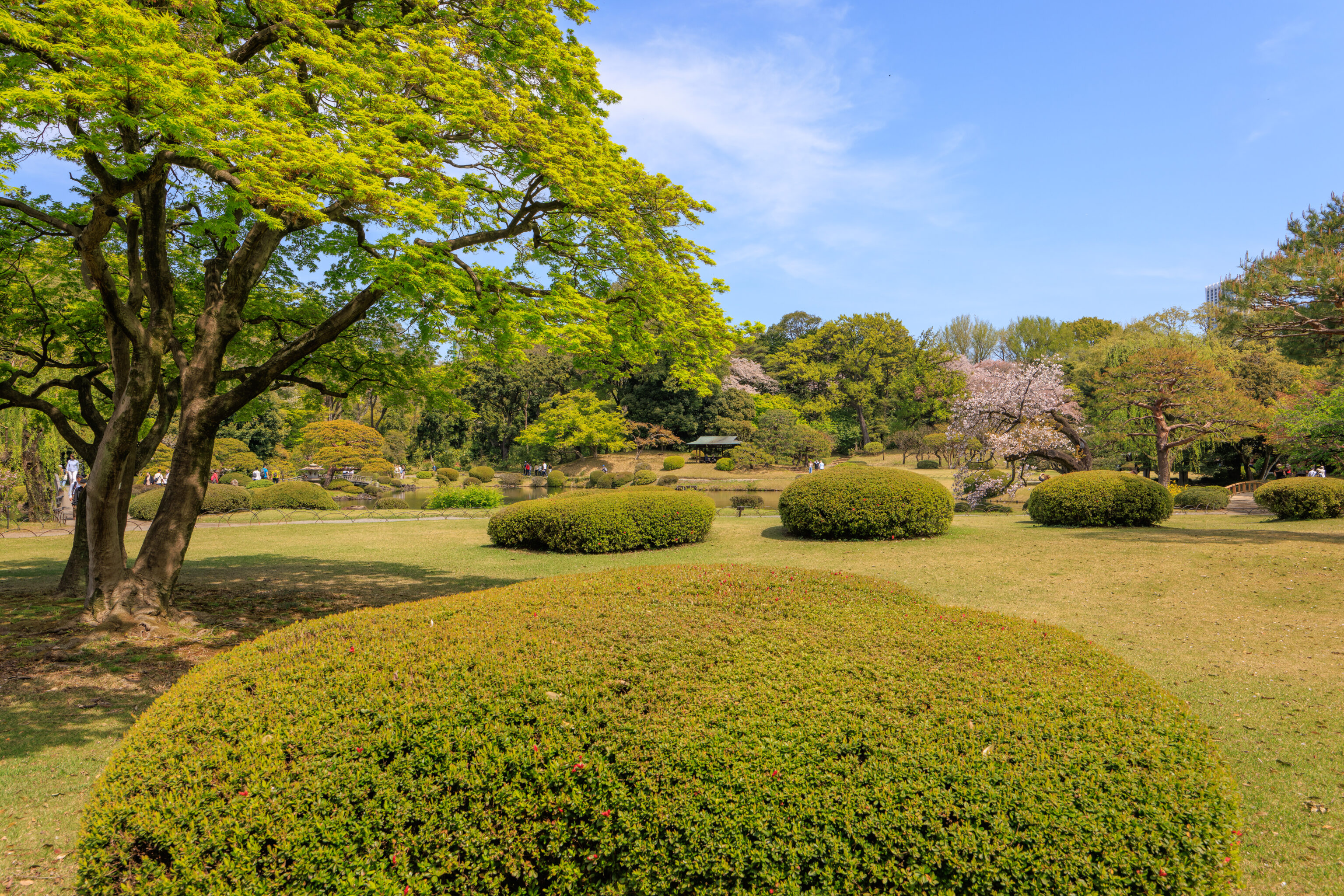
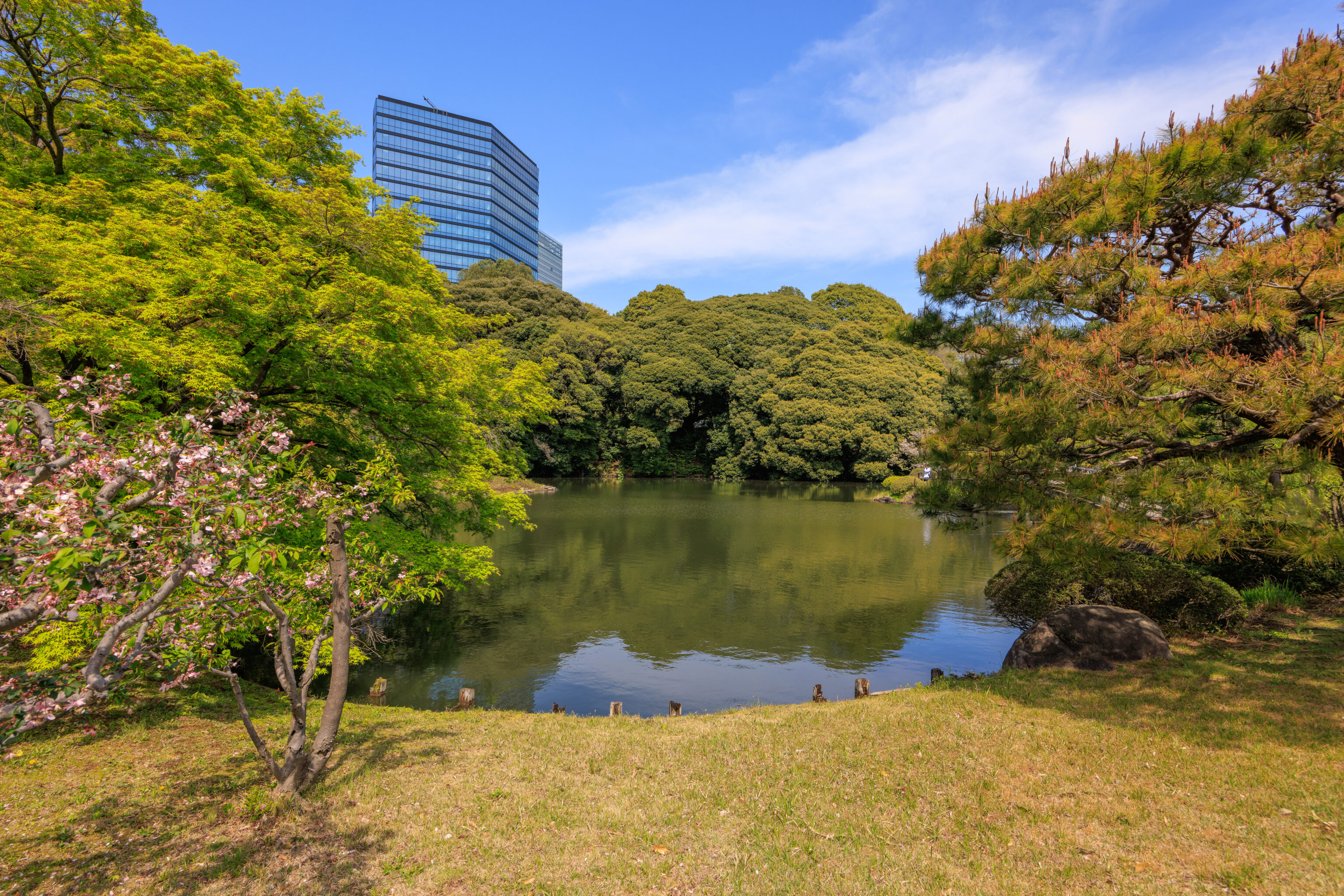
We started walking to the north to cross over the pond via bridges in the middle.
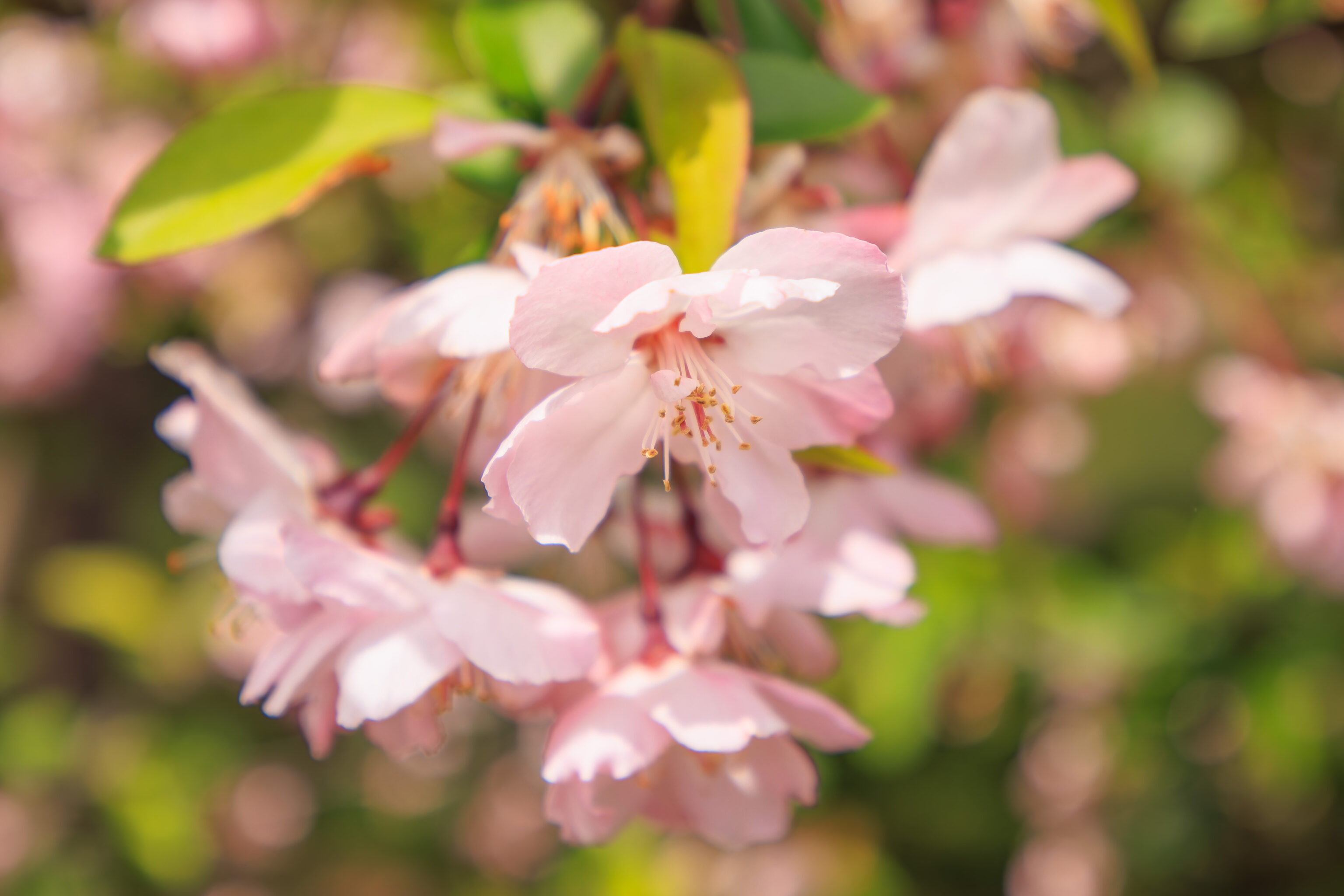
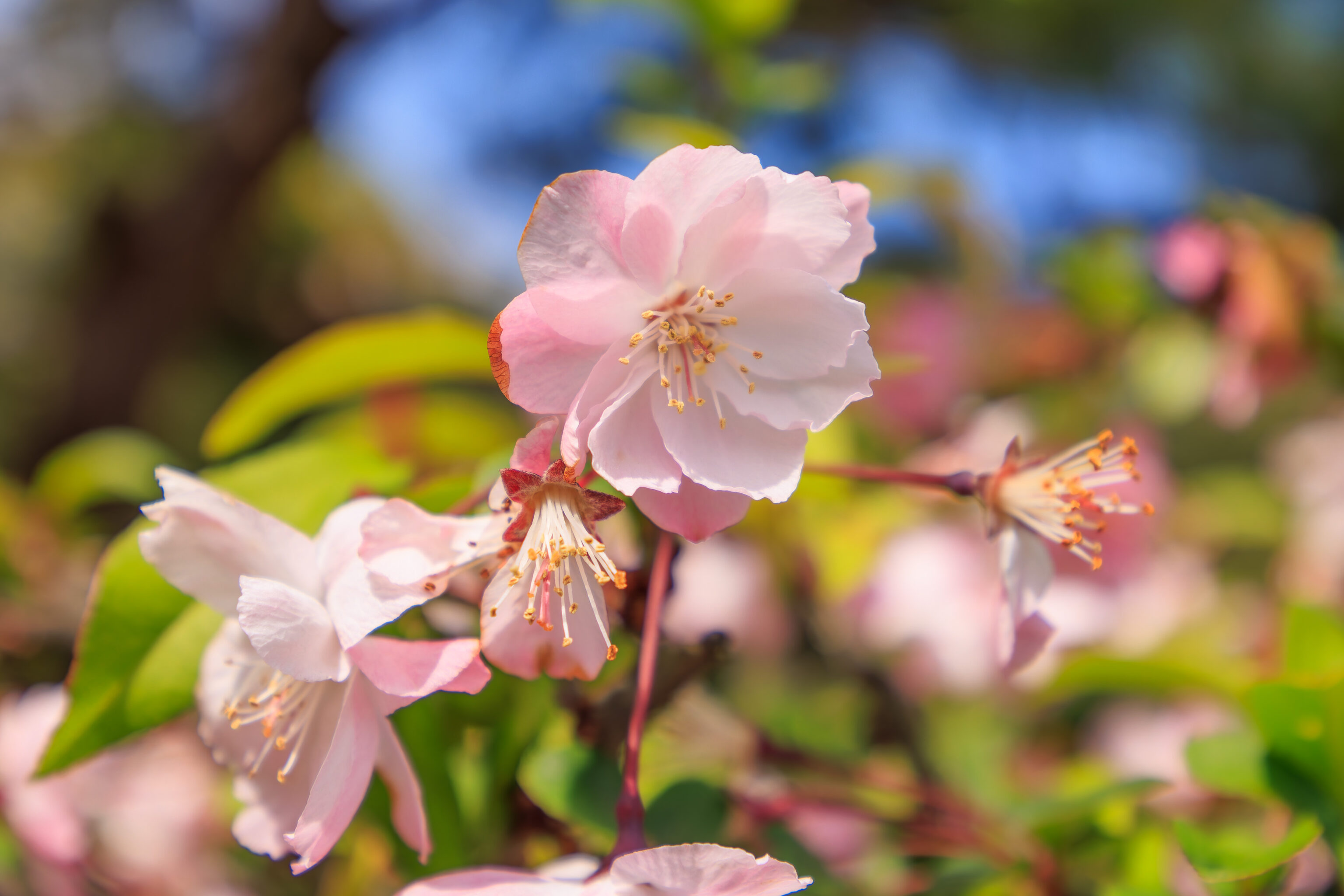
While this looks like a big cherry blossom, it seems to be marked on the map as seasonal flower #5, Hall Crabapple.
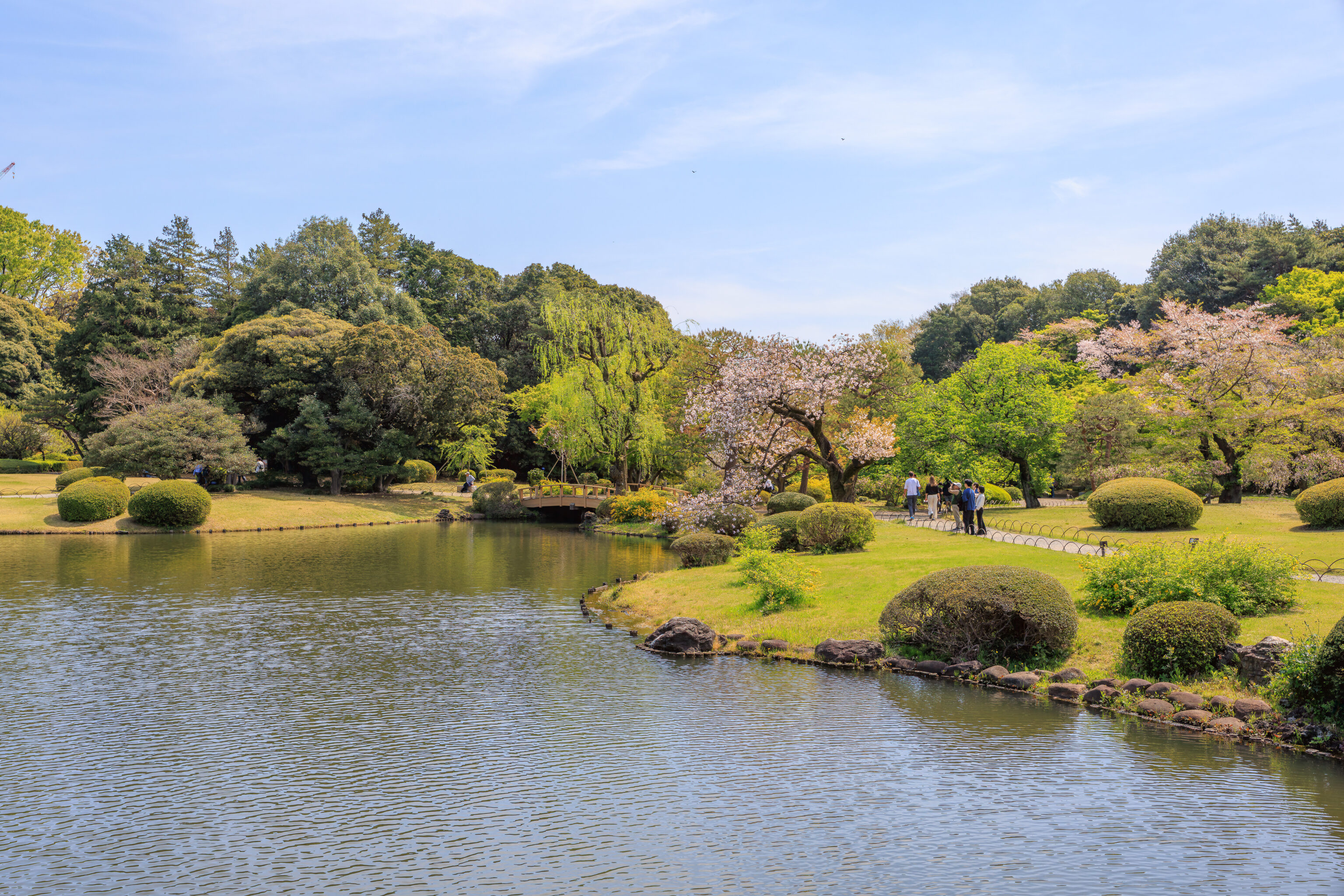
We crossed a bridge, leading to a small island in the middle of the pond. This was the view to the east, more or less where we walked from.
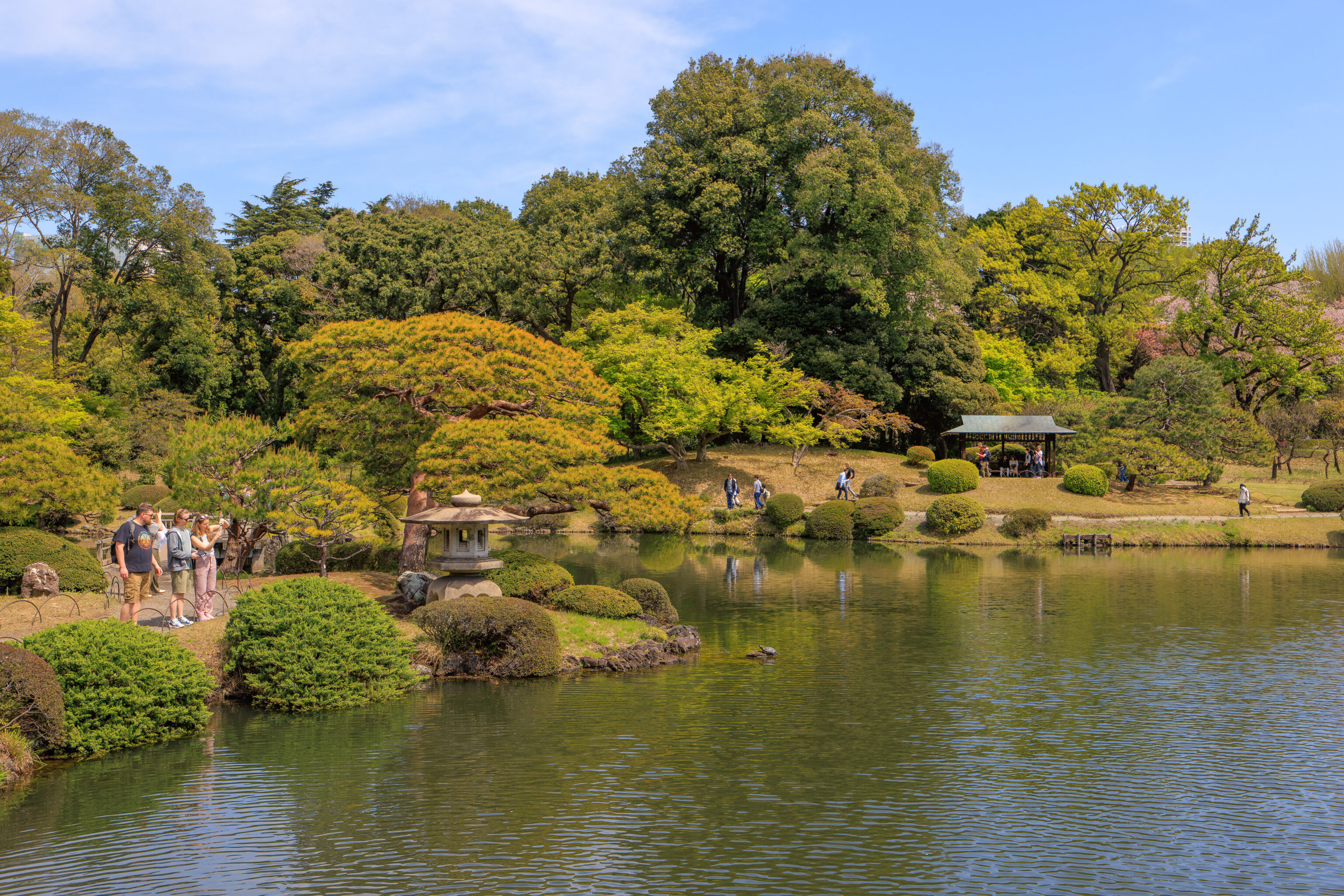
This was the view to the north, where we are headed. The stone lantern on the left is on the small island we are on, with another bridge beyond leading to the northern side of the pond.
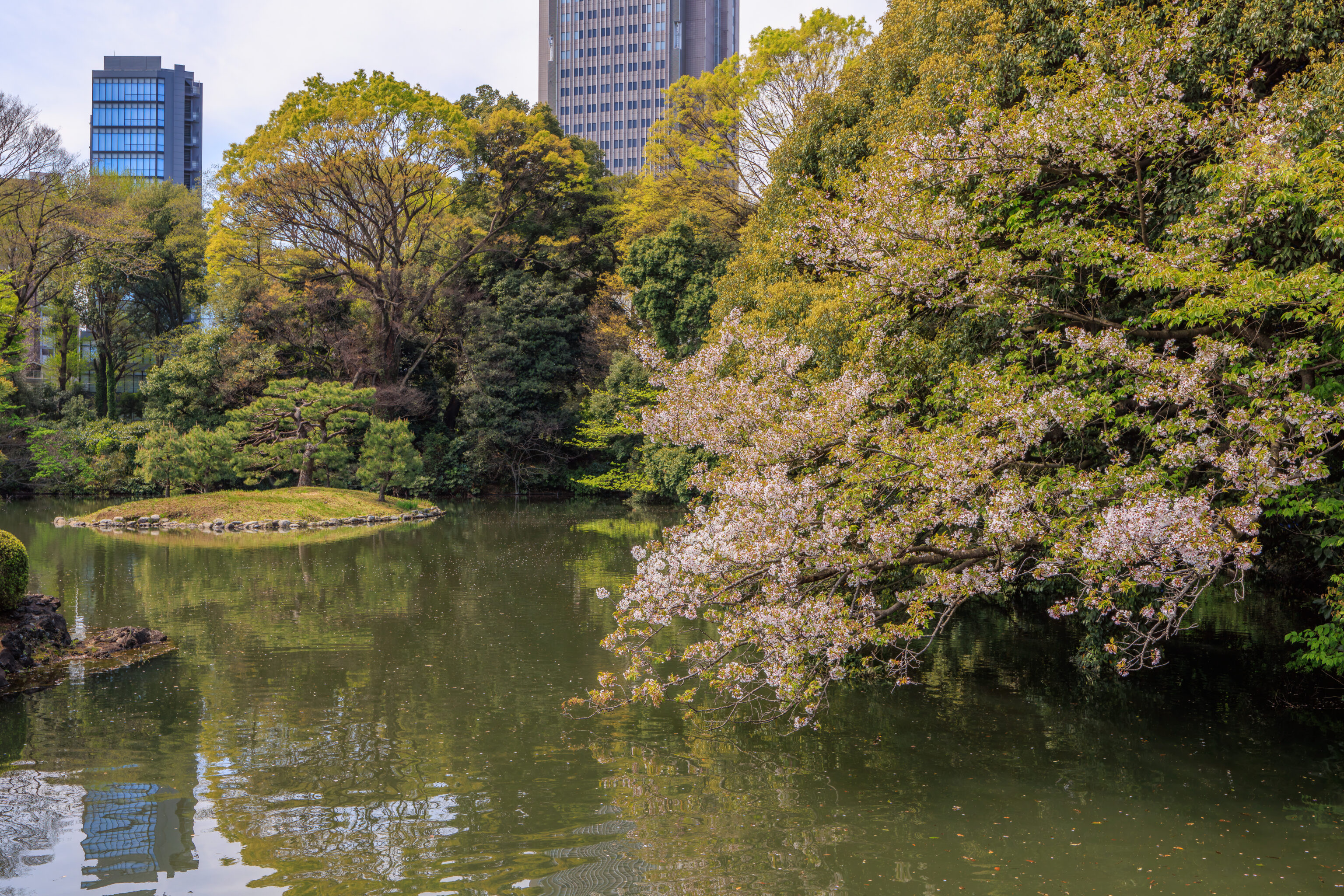
This sakura, just to the west of the northern end of the northern bridge across the pond, has dropped most of its flower petals.
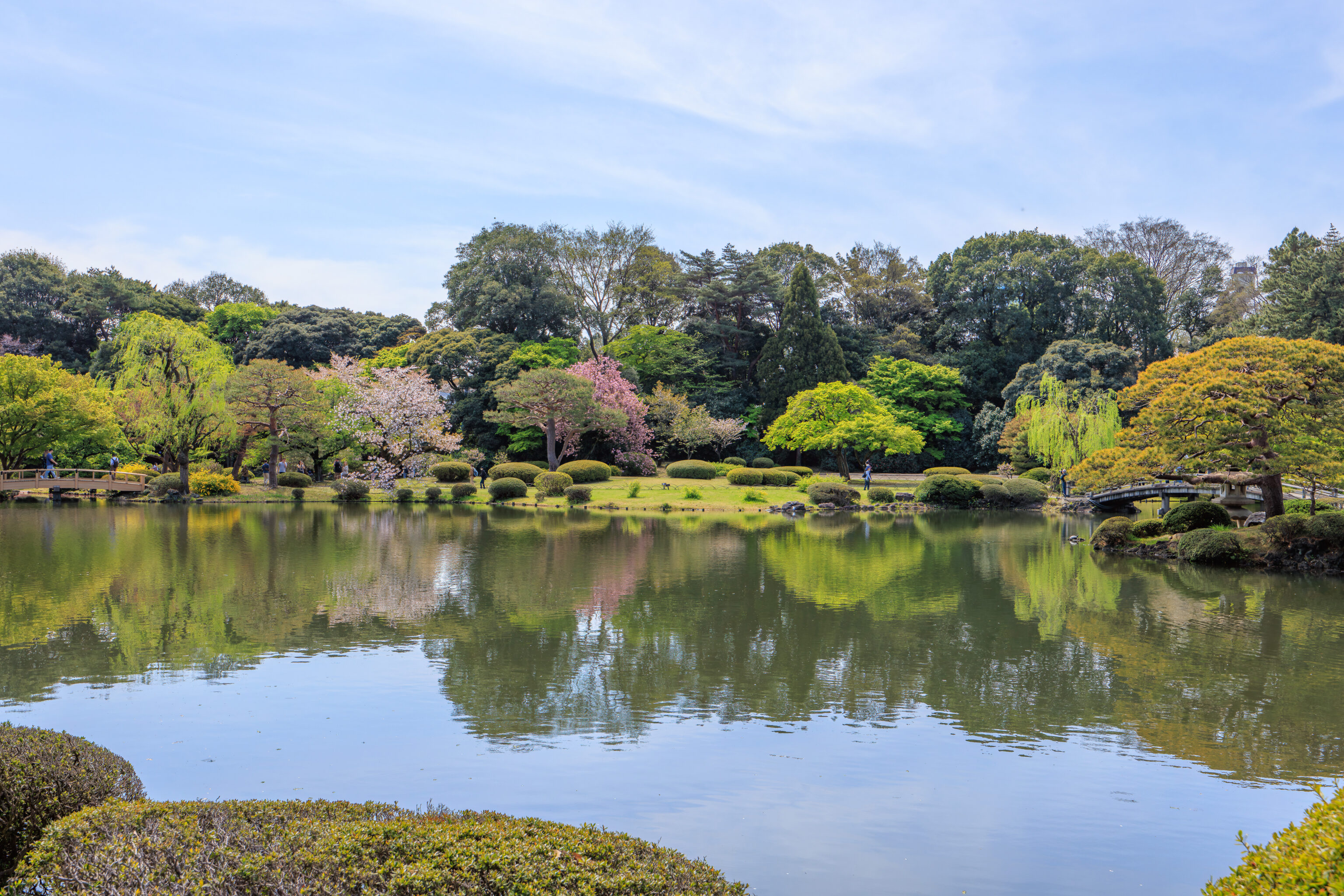
We sat near here for awhile, on the northern side of the pond, while waiting for our cousin to arrive. It was a nice spot!
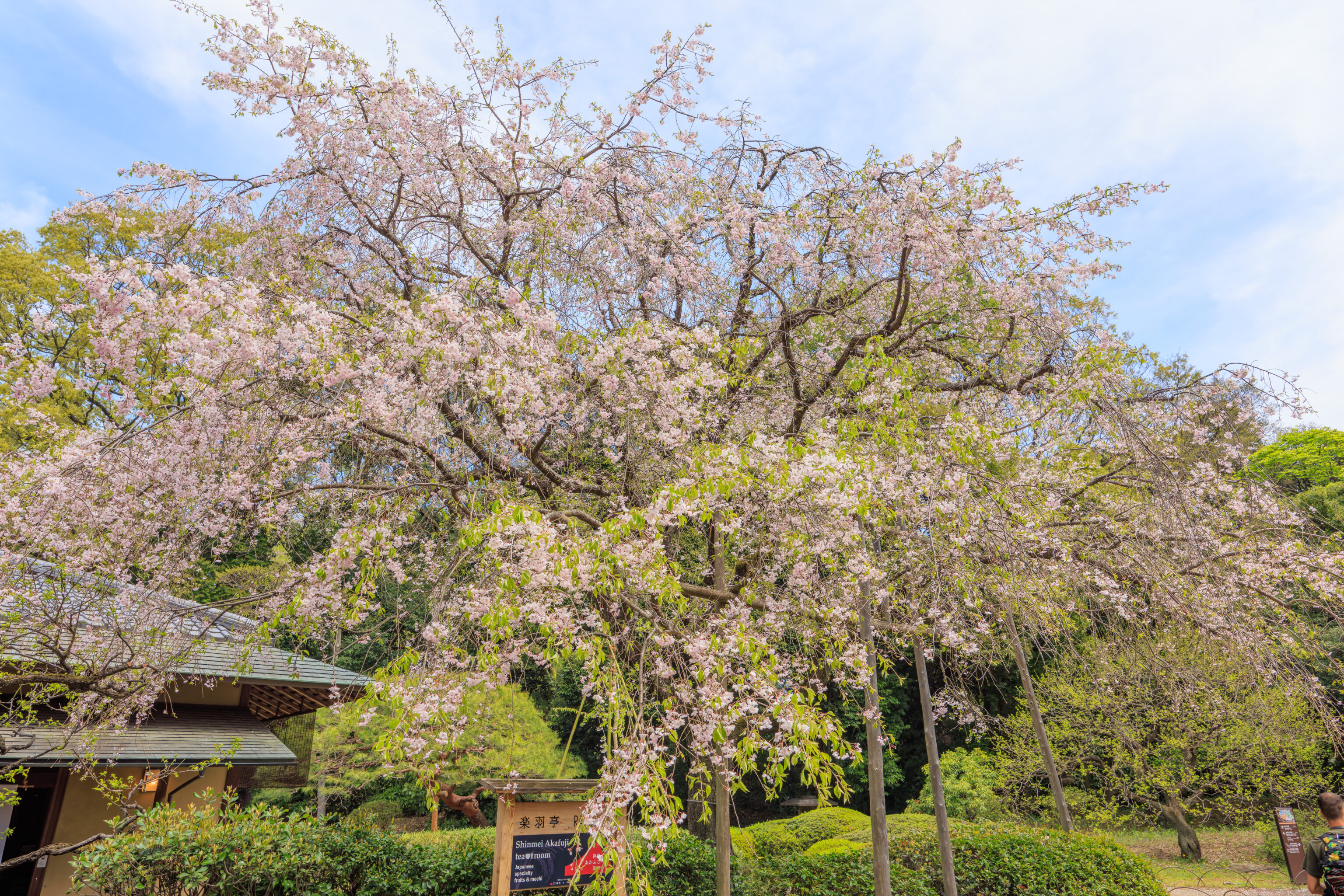
We continued walking to the east, reaching the Rakuu-tei, a tea house. This large cherry blossom tree was on the east side by the entrance. It seems to be labeled as cherry blossom #6 on the English map, identifying it as a Yaebenishidare.
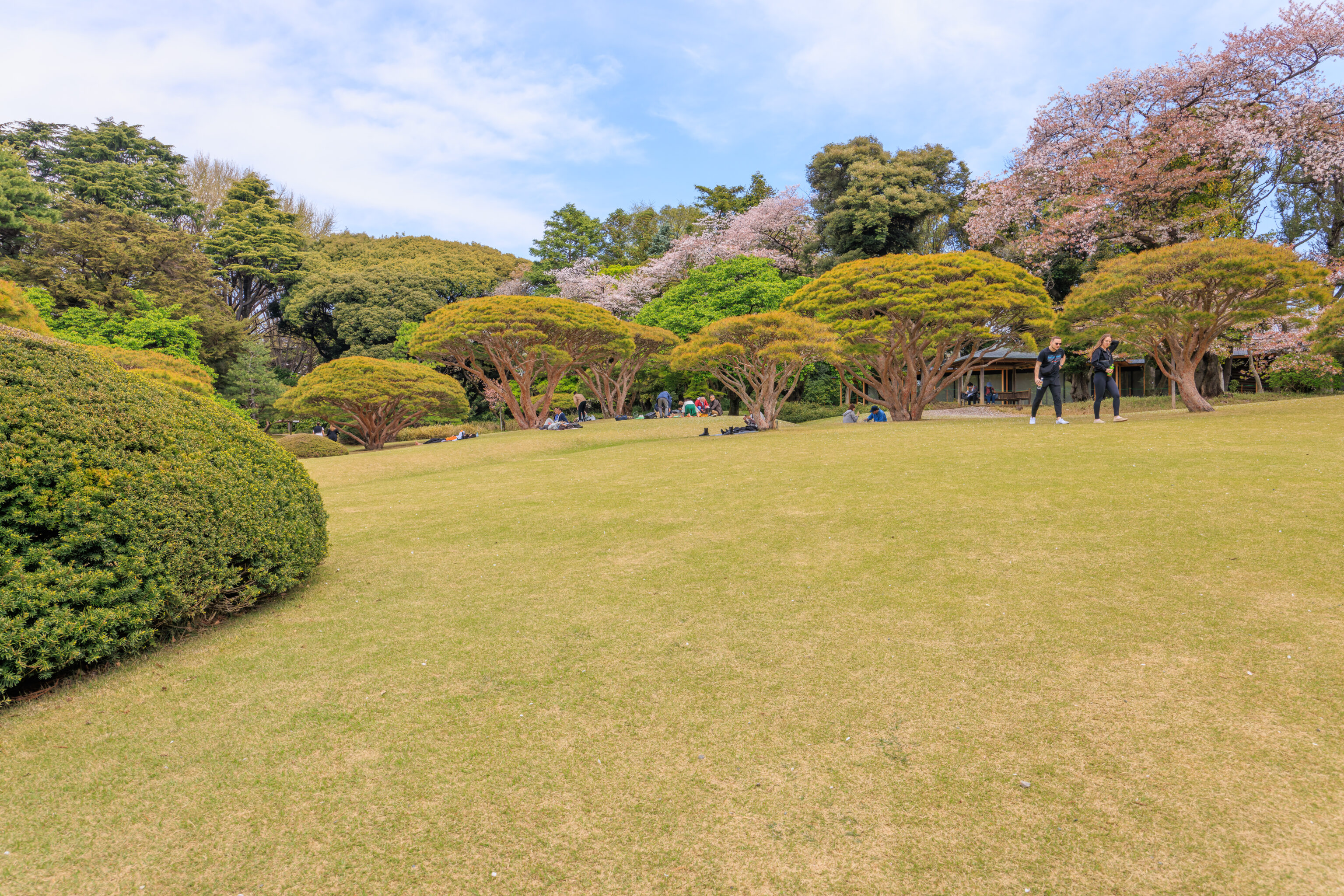
We kept on going until we were around the first pond that we saw earlier today. Looking away, to the north, the ground continued to slope upwards.
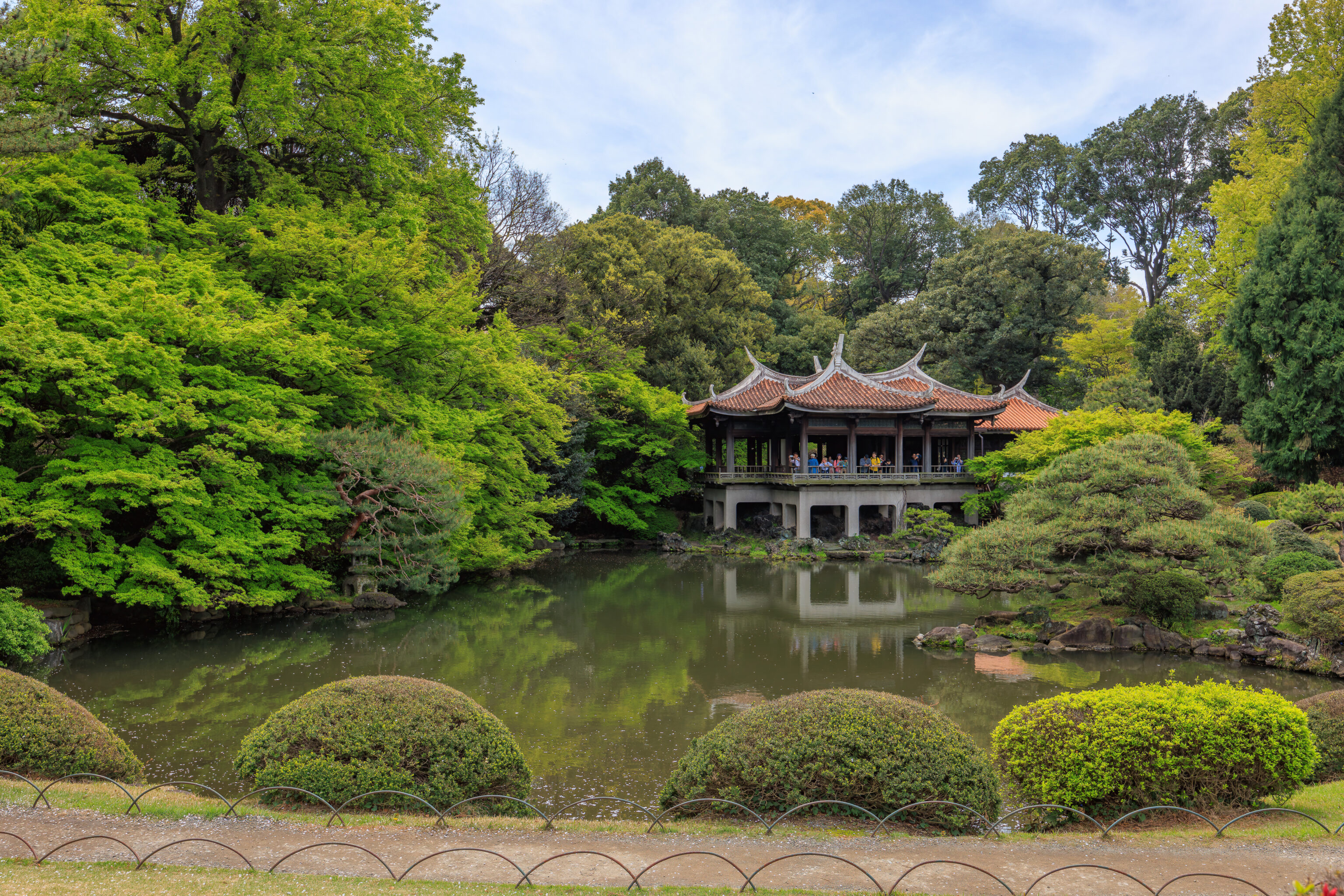
Looking to the south, we could see the Taiwan Pavilion on the other side of the pond.
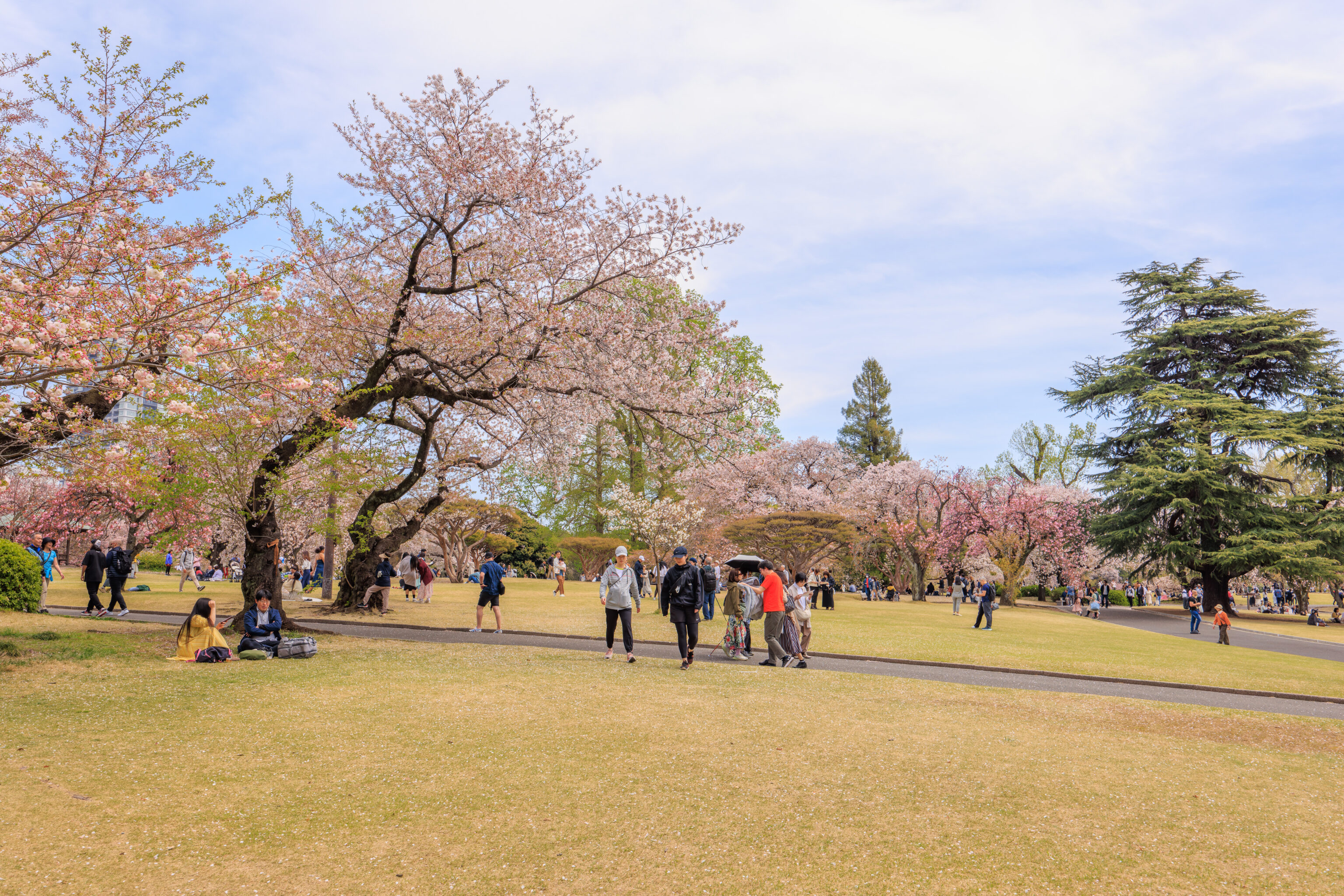
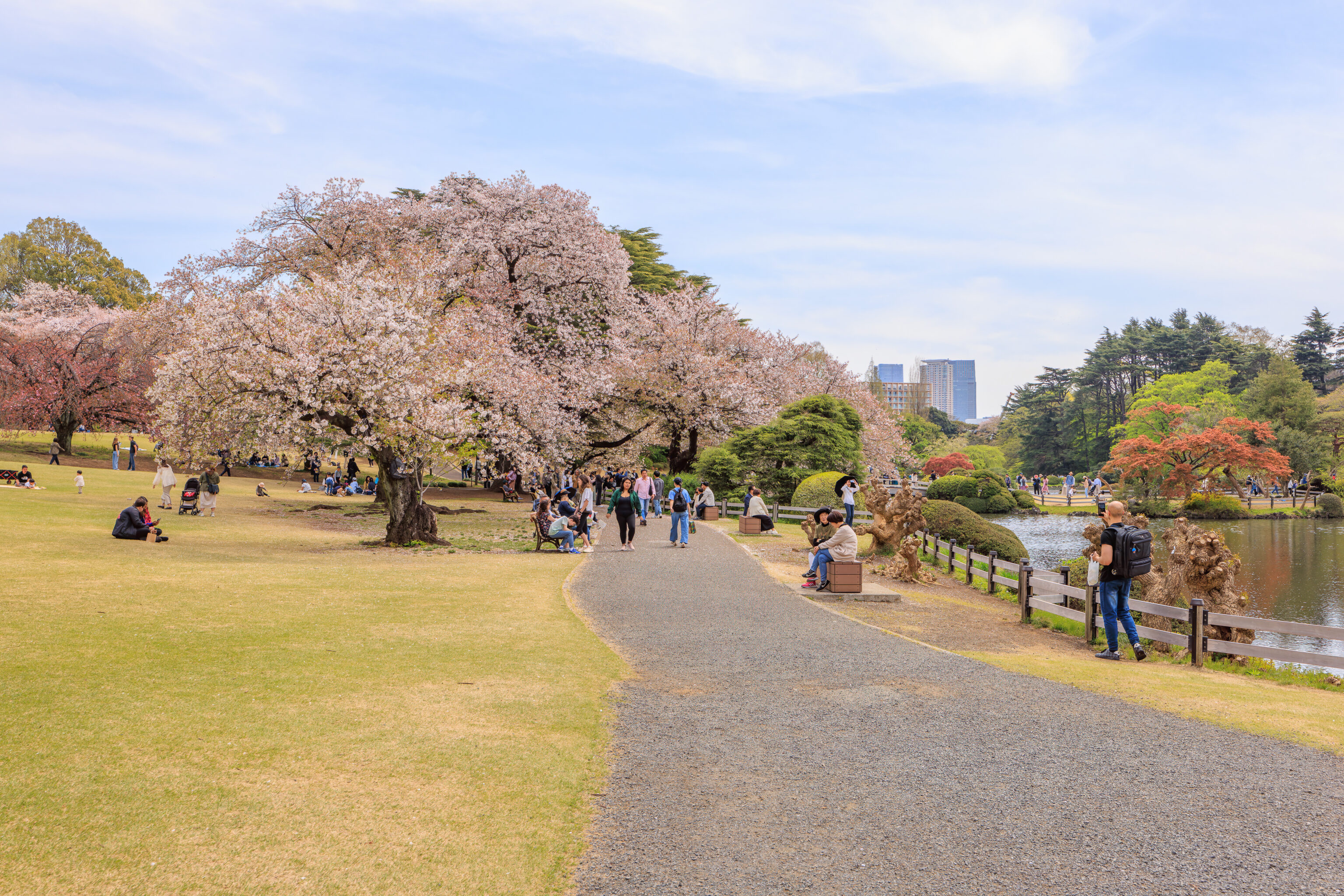
It seemed to get busier as we continued walking to the east. We saw various cherry blossom trees up ahead.
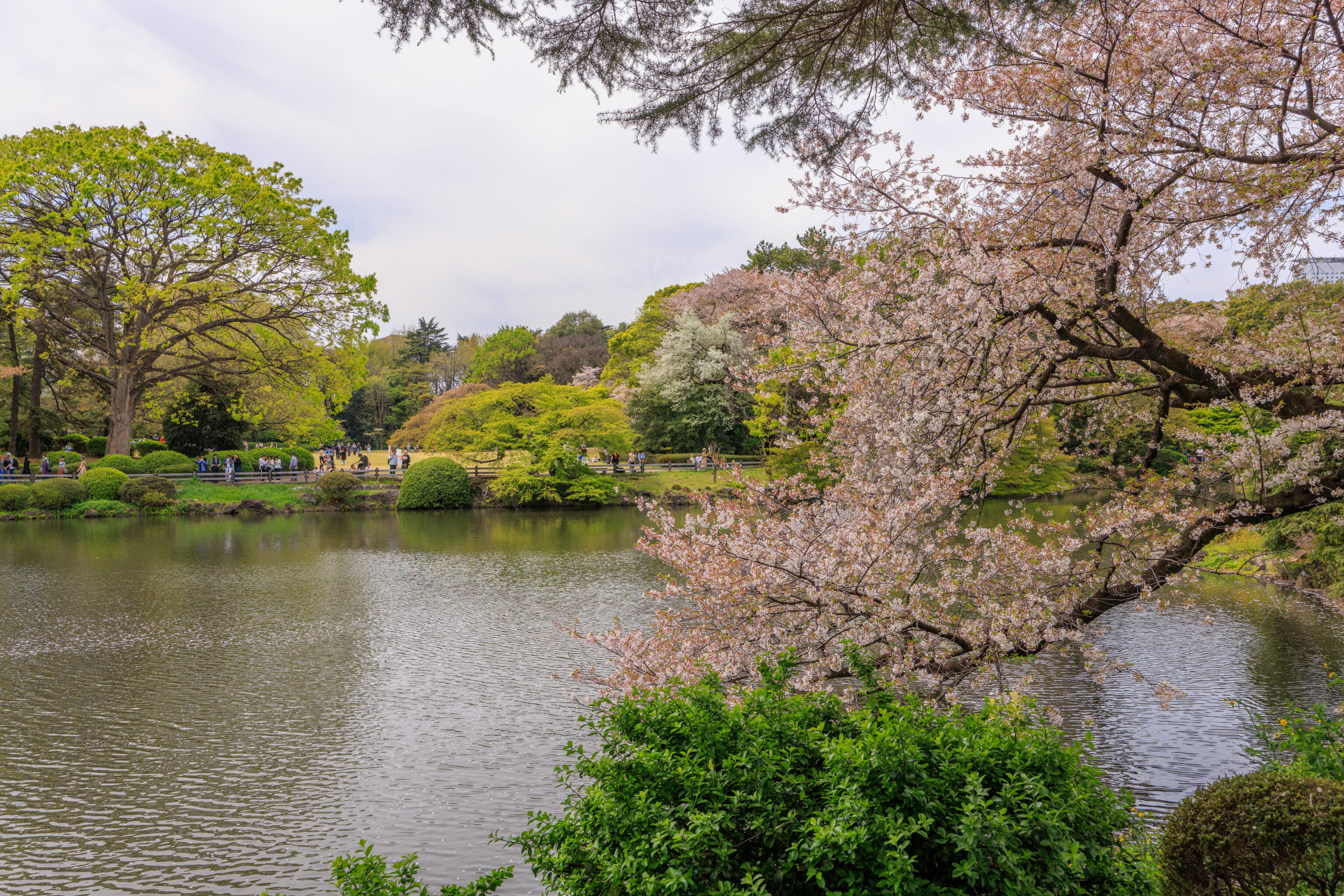
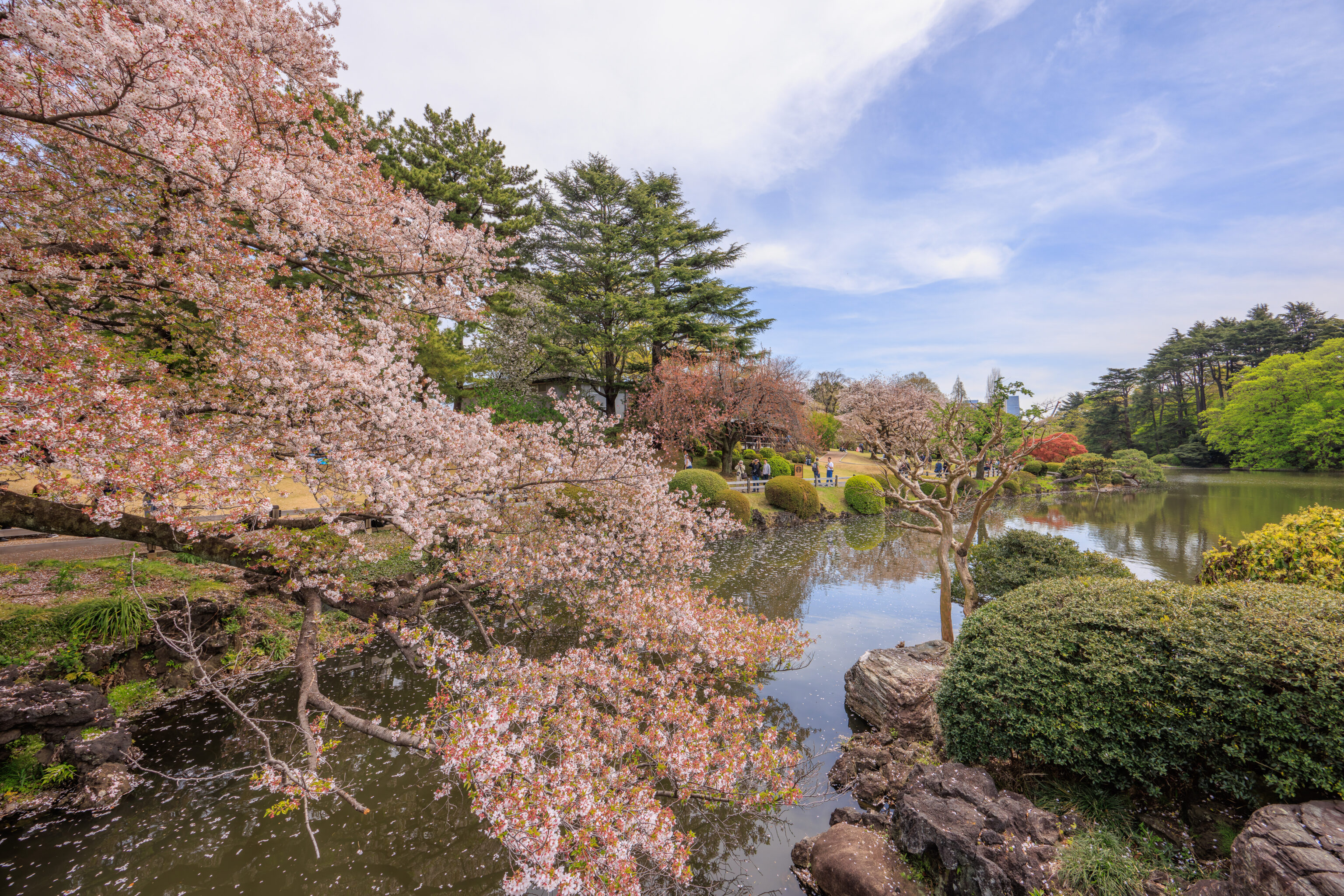
We turned to the south to head to the Cherry Tree Area, passing by some well past peak trees.
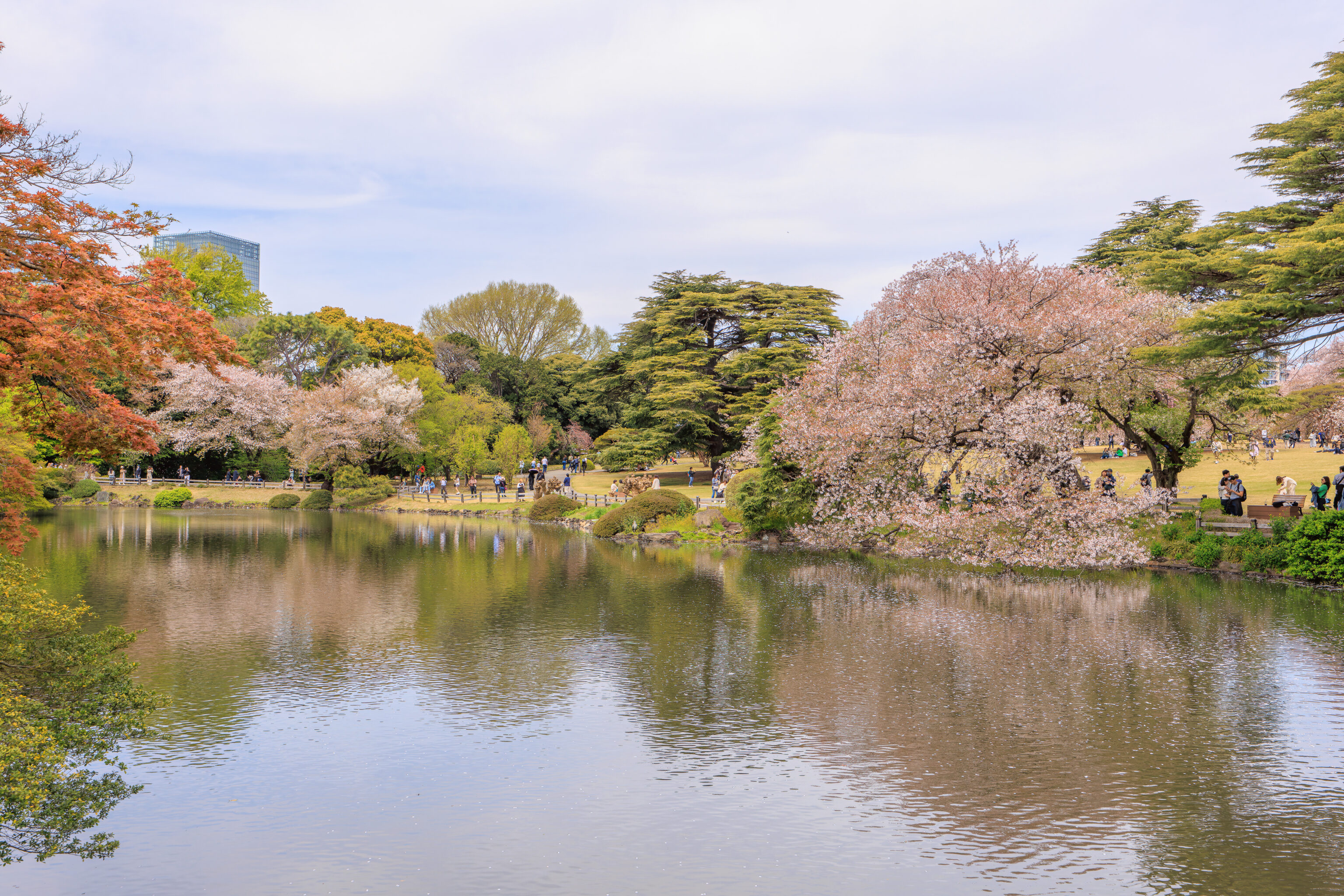
The view to the northwest as we passed between ponds.
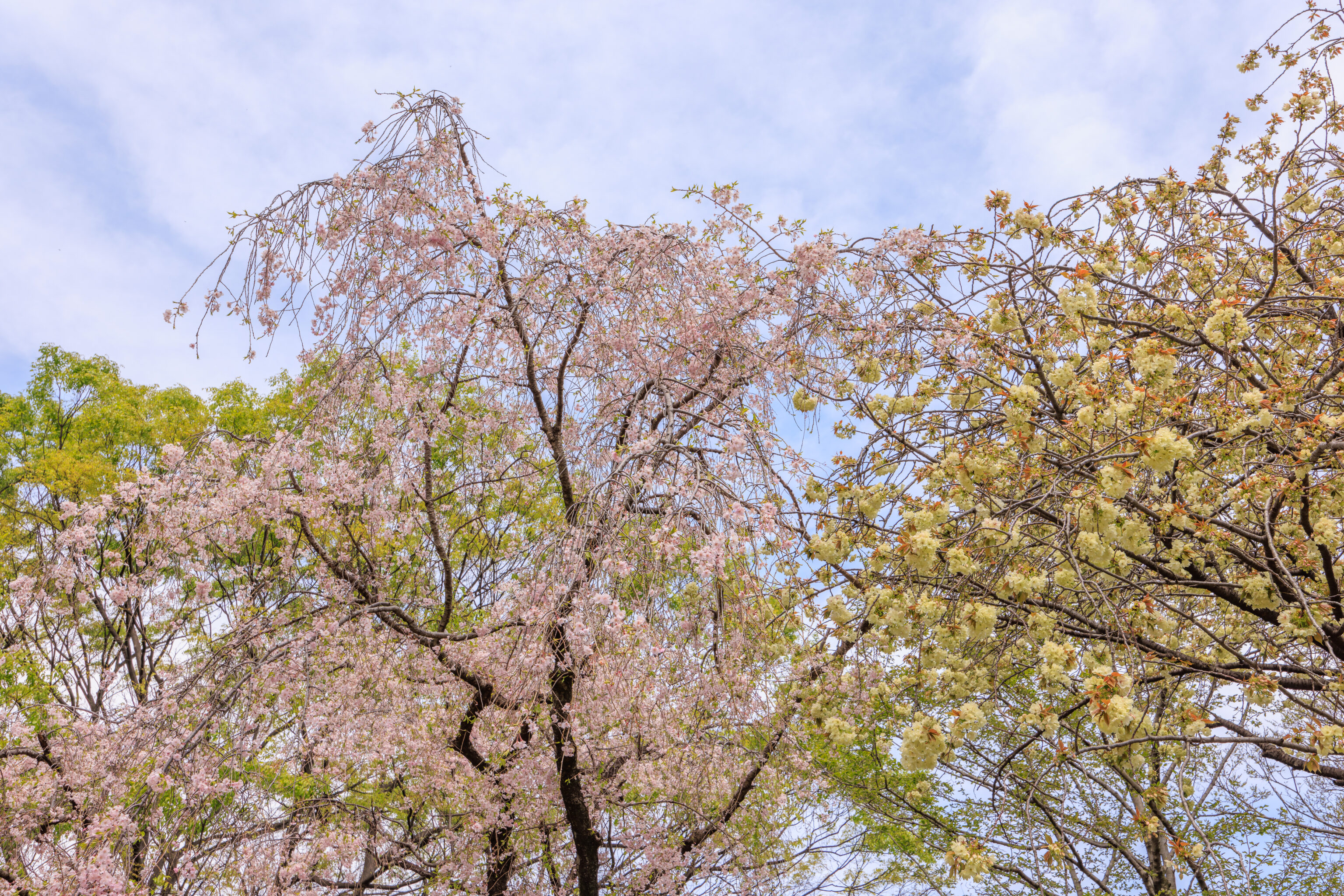
We passed by a variety of sakura, including one that had greenish yellow flowers. It is definitely our first time seeing this variety!
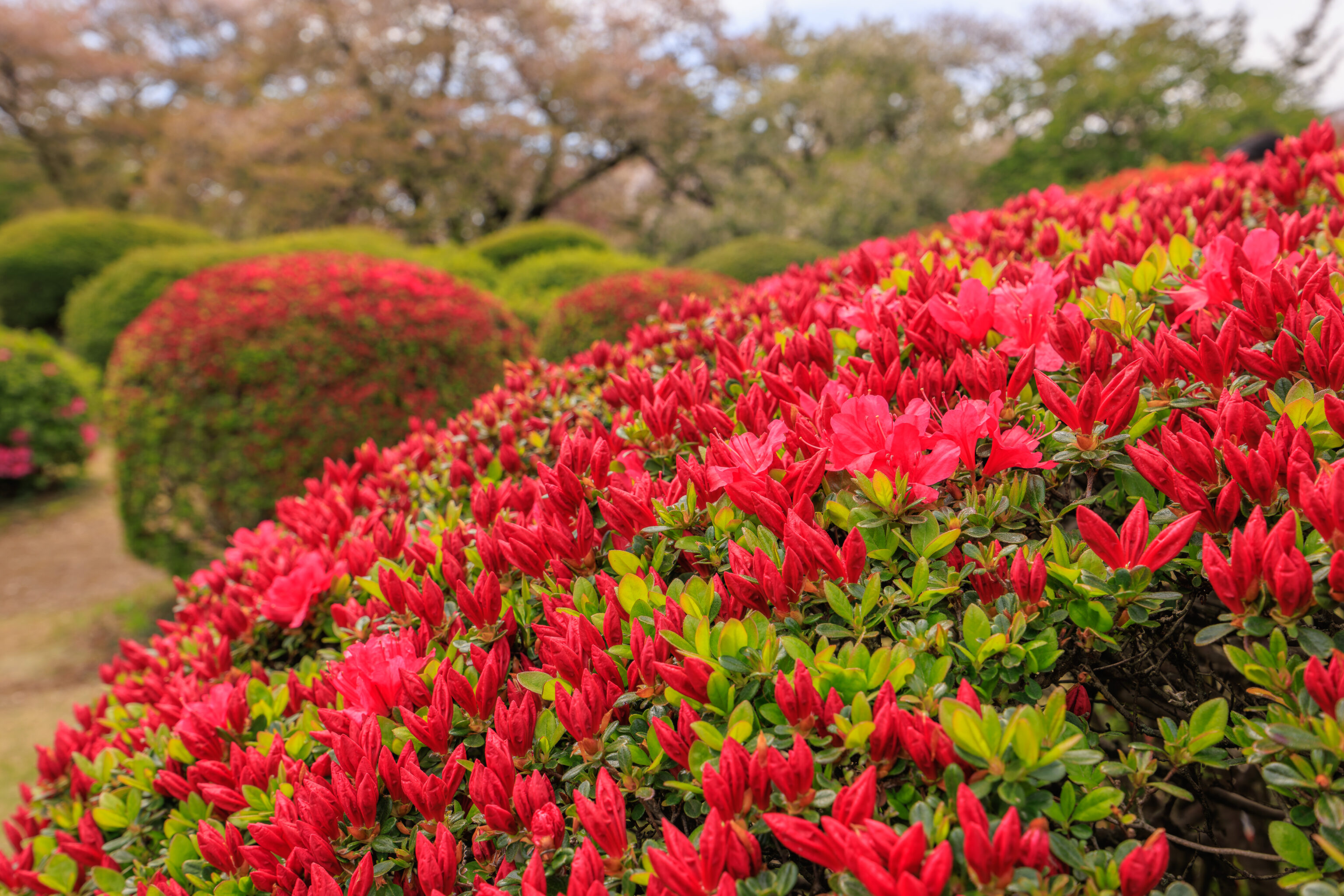
Some of the many well trimmed bushes in the Cherry Tree Area had red flowers!
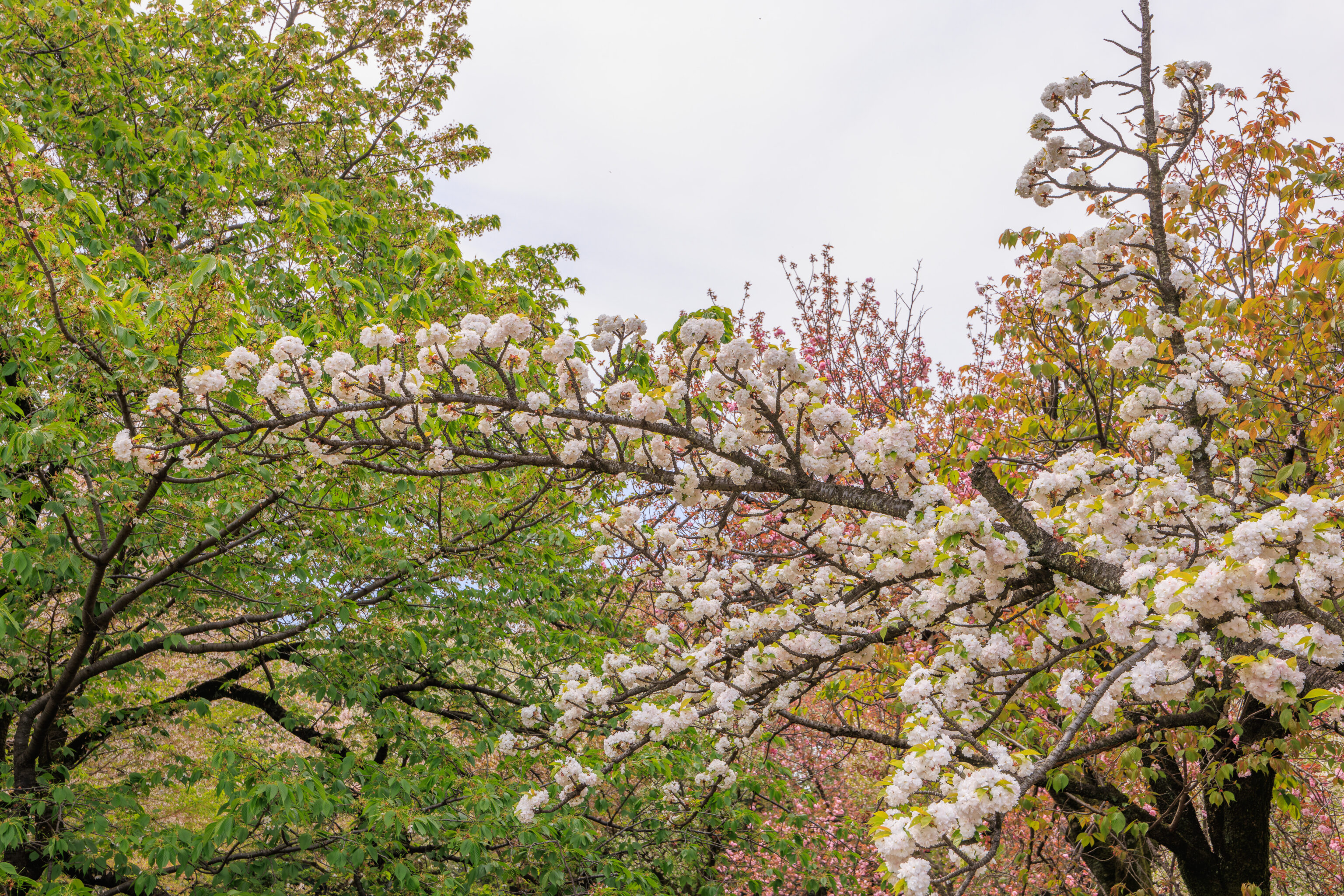
This tree, possibly a cherry tree, possibly not, had cotton-like clumps of sakura-like flowers!
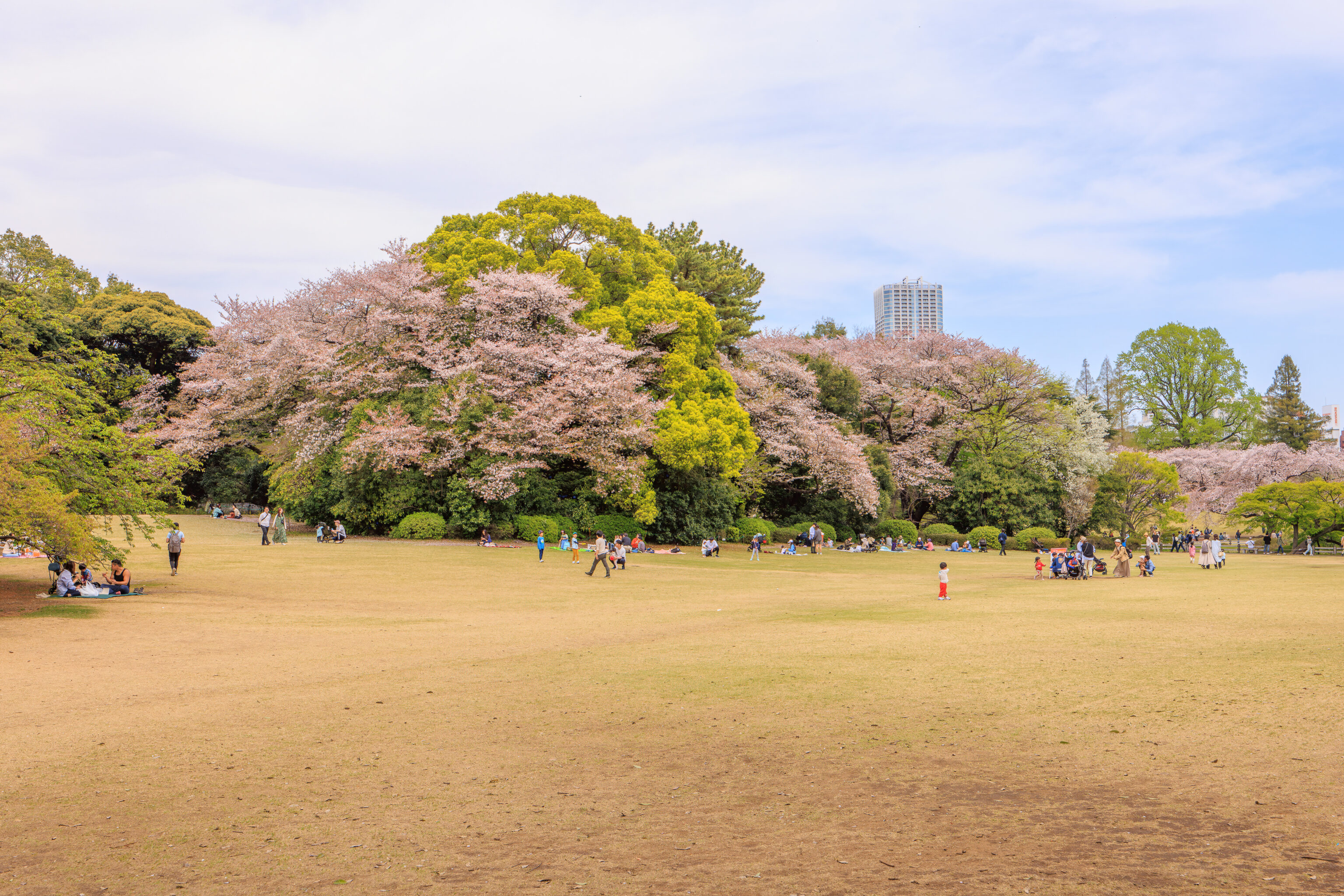
We continued on to exit via the Sendagaya Gate, passing by the Kids Area on our way out.
Afternoon
From there, we entered the JR 千駄ケ谷駅 Sendagaya Station to take the 中央線 Chuo Line east to 東京駅 Tokyo Station. Once there, we met up with a second cousin and his family.
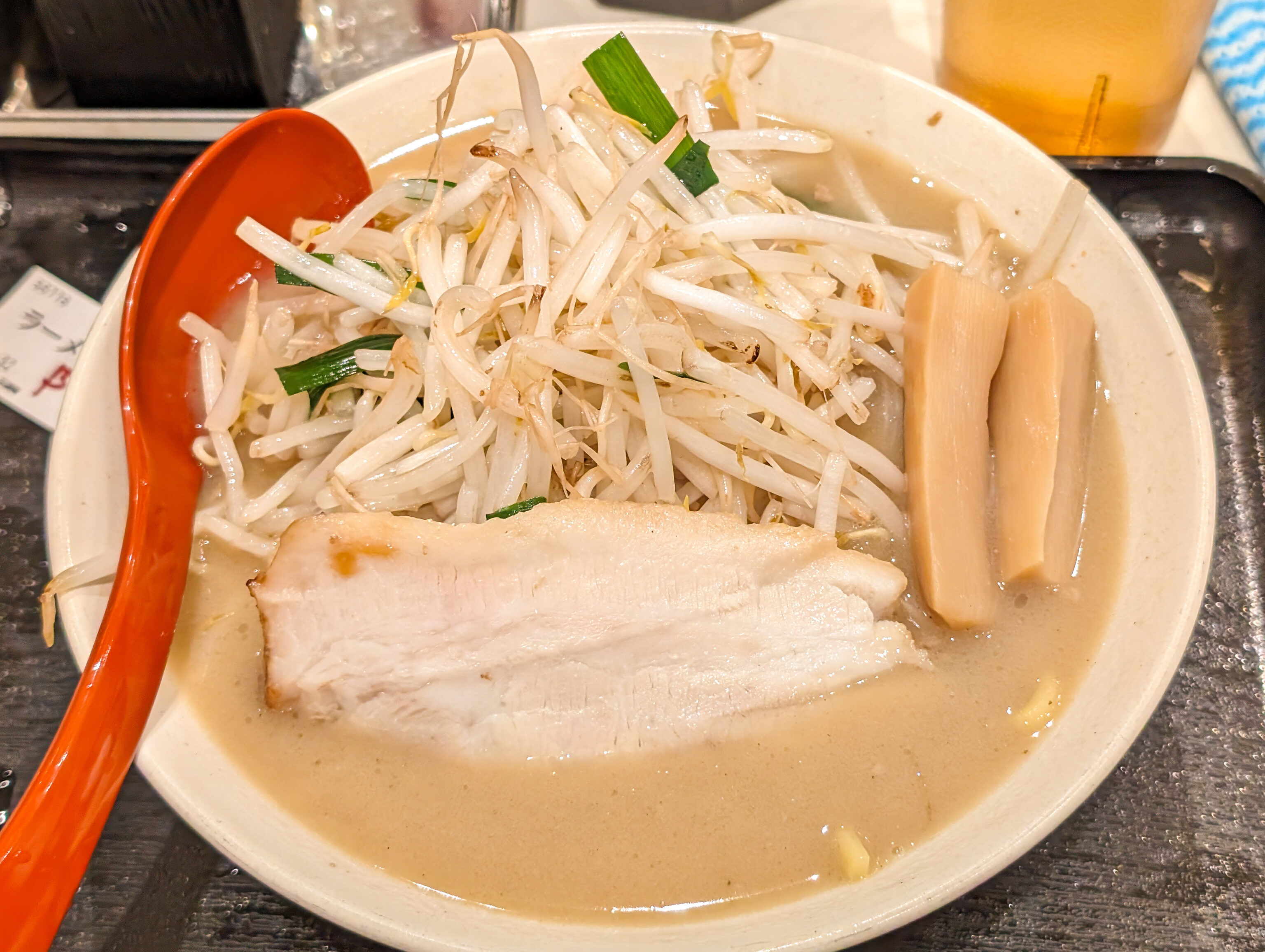
We had lunch at the Tokyo Ramen Street at Tokyo Station. The last time we were here, we visited one of the restaurants that specializes in tsukemen. This time, we visited Hanamichian, a restaurant that specializes in miso ramen. Interestingly, they have a restaurant in Sendayaga, not too far from where we got on the train after leaving Shinjuku Gyoen!
After, we ended up at the Pokemon Center in Shibuya. It is at the top of the Parco department store. It was ridiculously crowded! We’re apparently old as we didn’t really know what goes on at a Pokemon Center. We saw one in Taipei this past winter at the Shin Kong Mitsukoshi in Taipei’s Xinyi district and wondered what it was all about. Apparently, it is a shop where you can buy Pokemon related things and is super popular, at least in Japan.
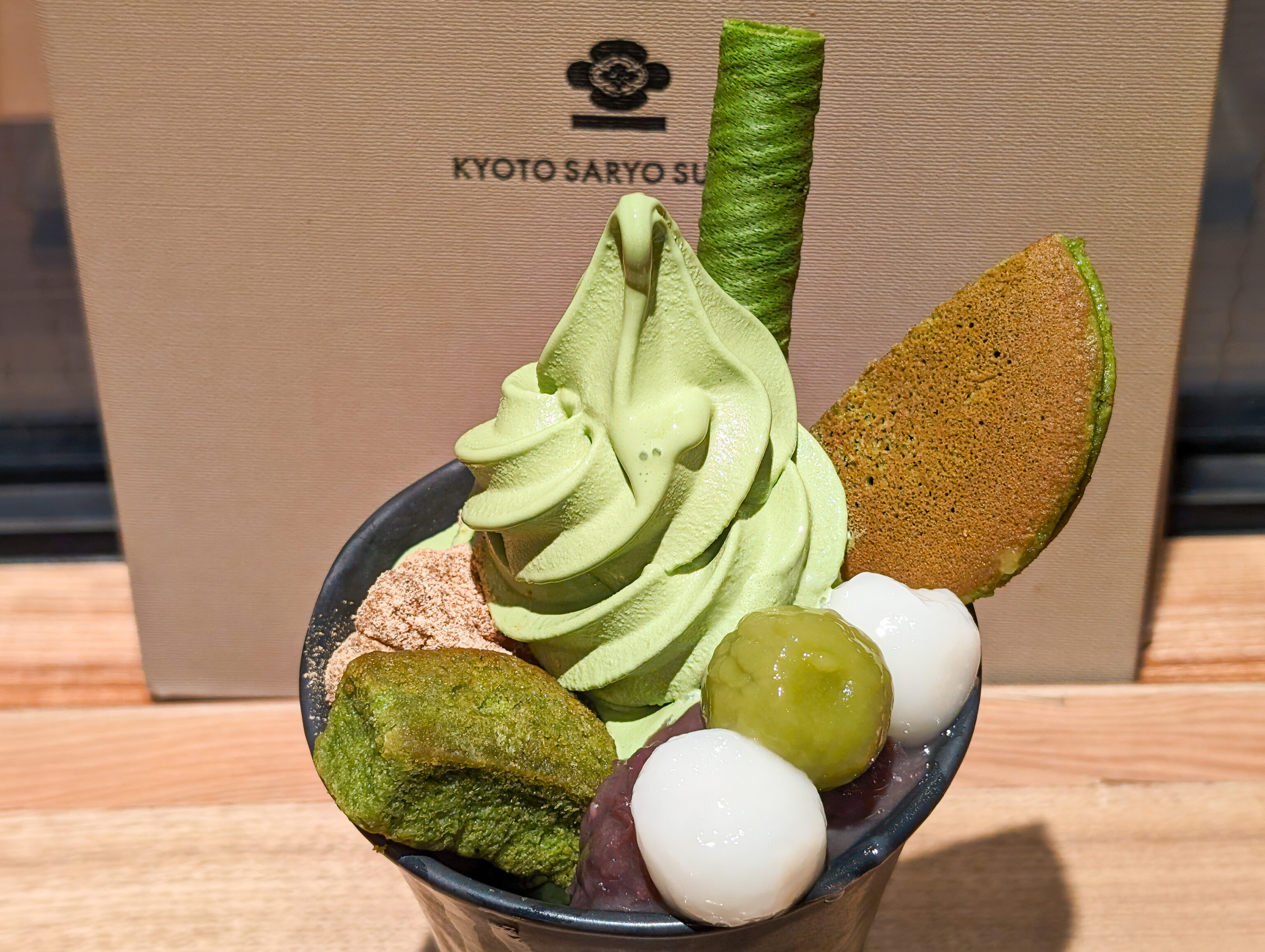
After, we went down into the basement to queue for a snack at 京都茶寮翠泉 Kyoto Saryo Suisen. We had to queue for a long time as the small shop seemed to understaffed, taking a long time to prepare orders and clear tables.
Of course, we had to get a matcha parfait!
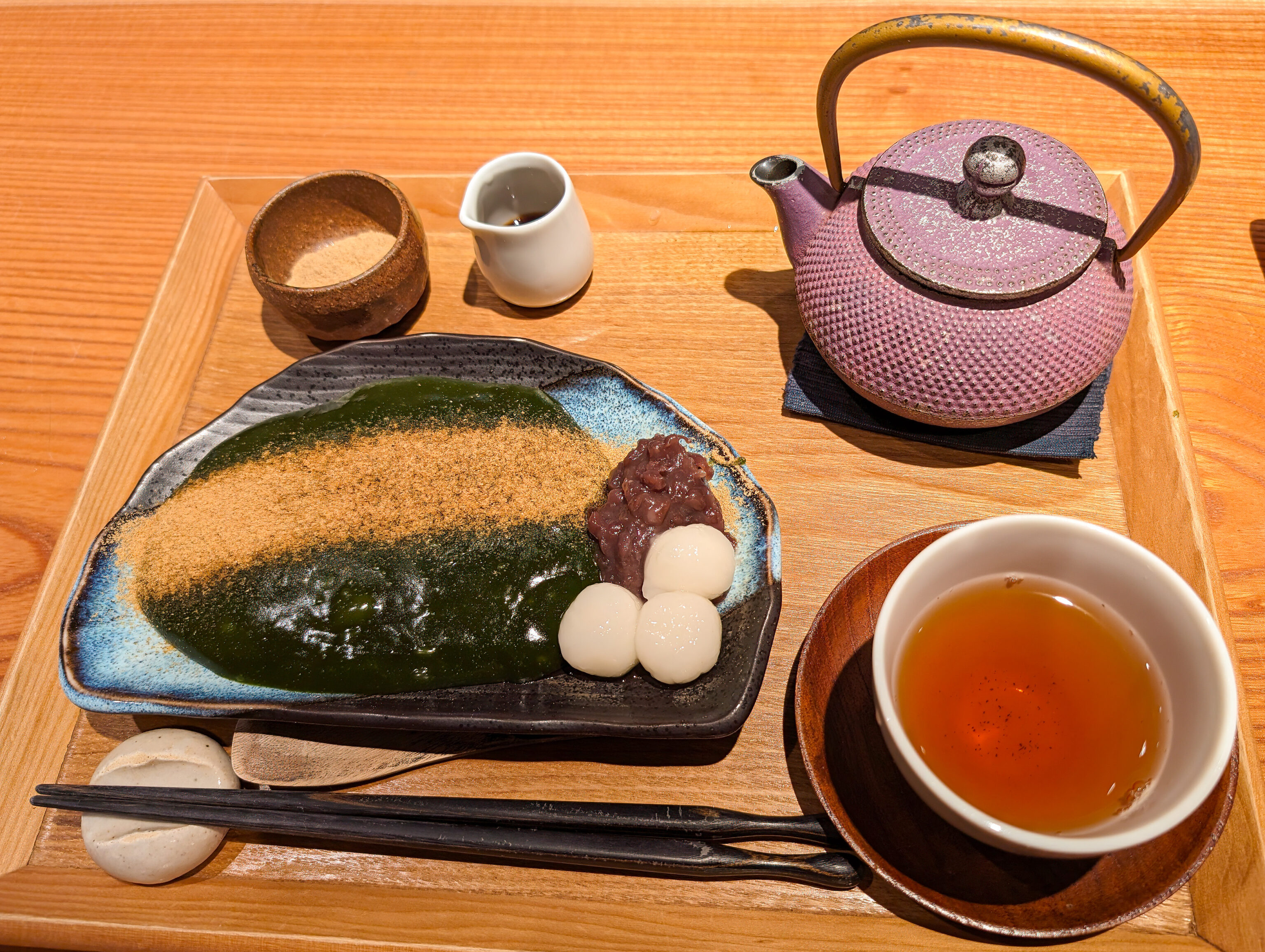
We also had a matcha warabi mochi. While it was a nice snack, it was even nicer just to be able to sit down and rest our tired feet!
Dinner
Later in the evening, we had dinner at 焼肉ホルモンうしごろ Yakiniku Hormone Ushigoro. We all had the same course.
The captions for the dishes below are all based on the restaurant’s PDF menu and are our best guess at exactly what we had.
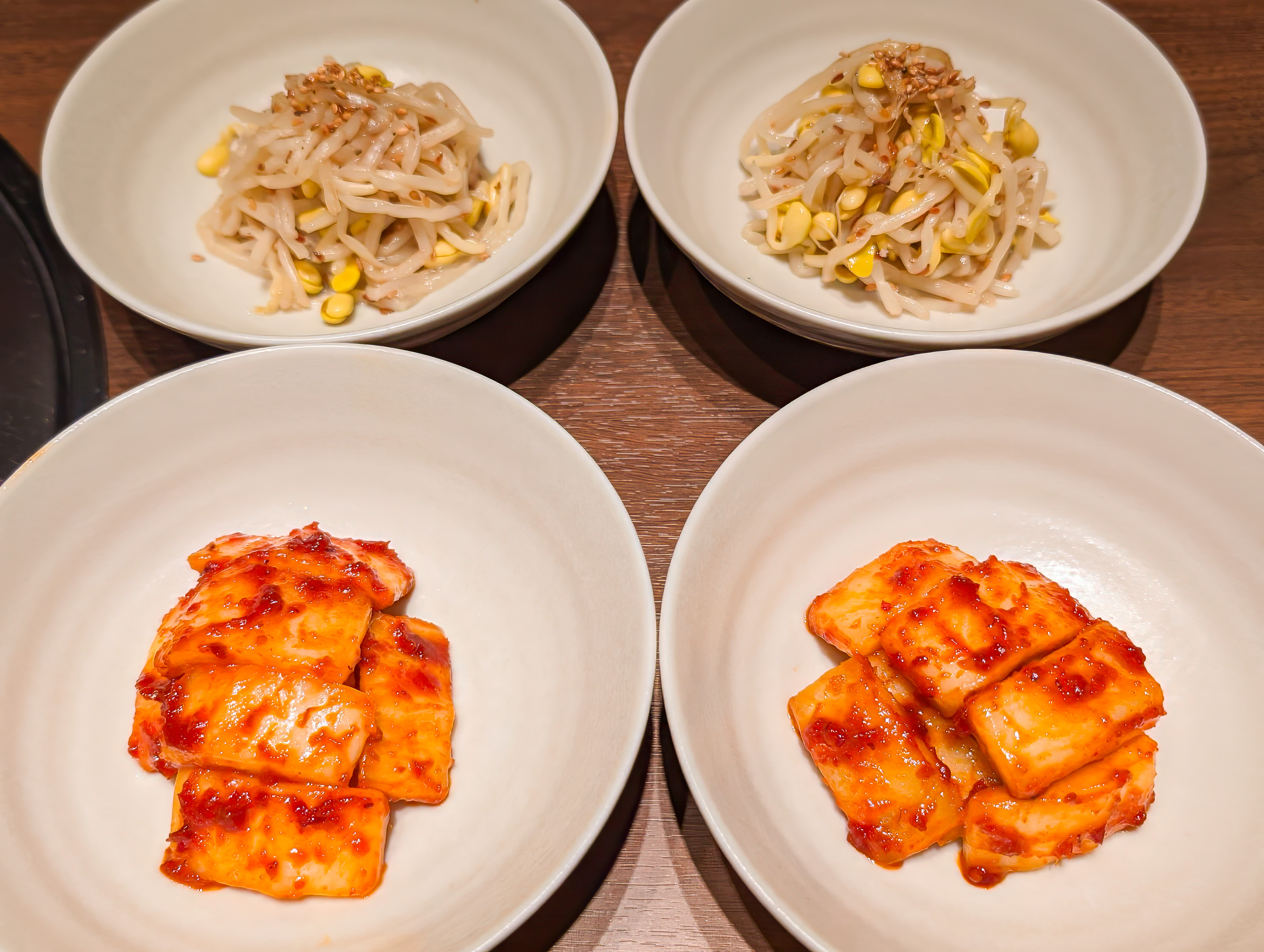
While yakiniku generically just means grilled meat, the modern meaning of this term is used to refer to Japanese grilling based upon Korean BBQ. We started the meal off with two different banchan.
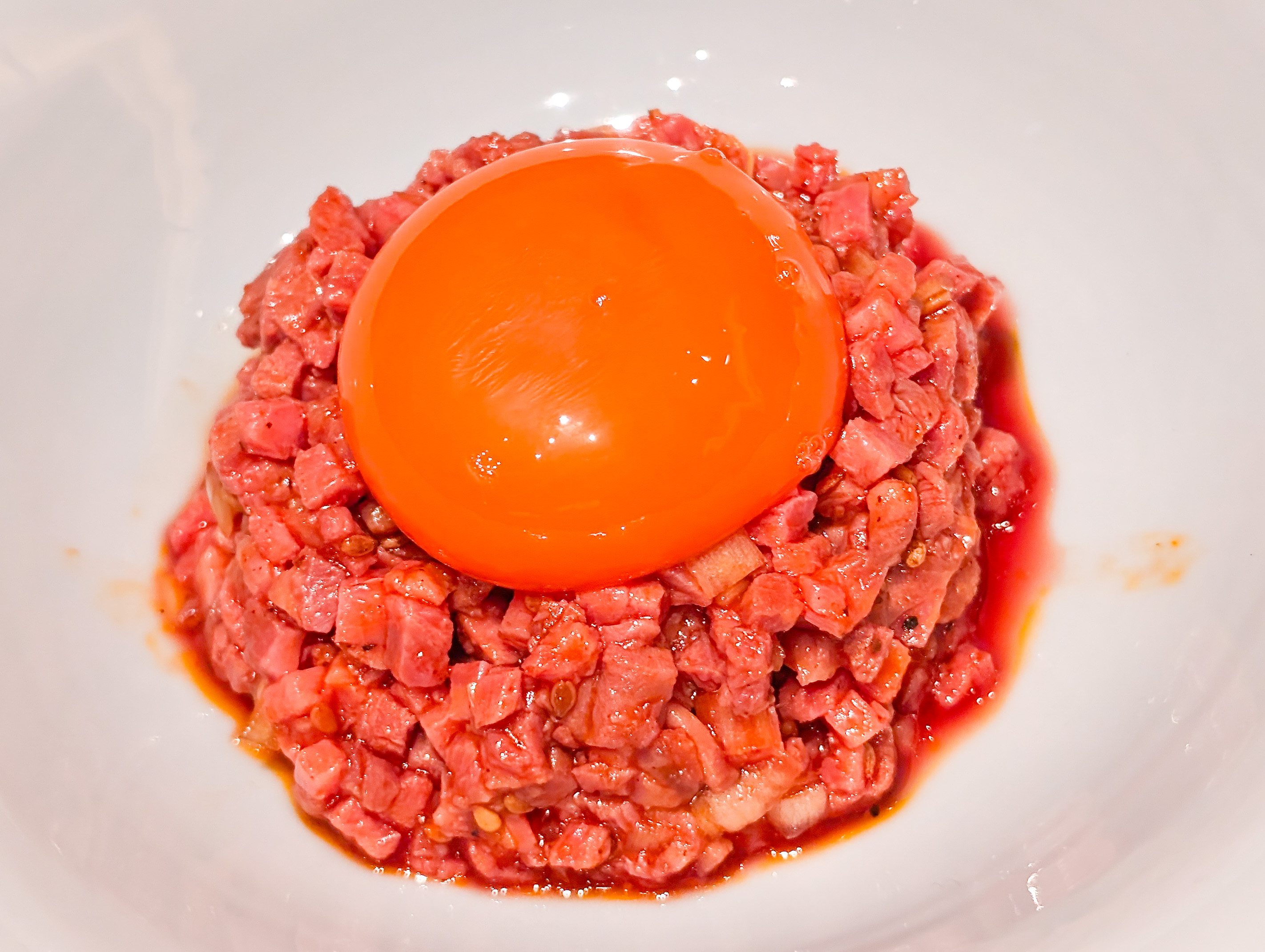
Then, some raw beef with egg was presented. This style of presentation, which is pretty standard, always reminds me of cat food but it was quite good!
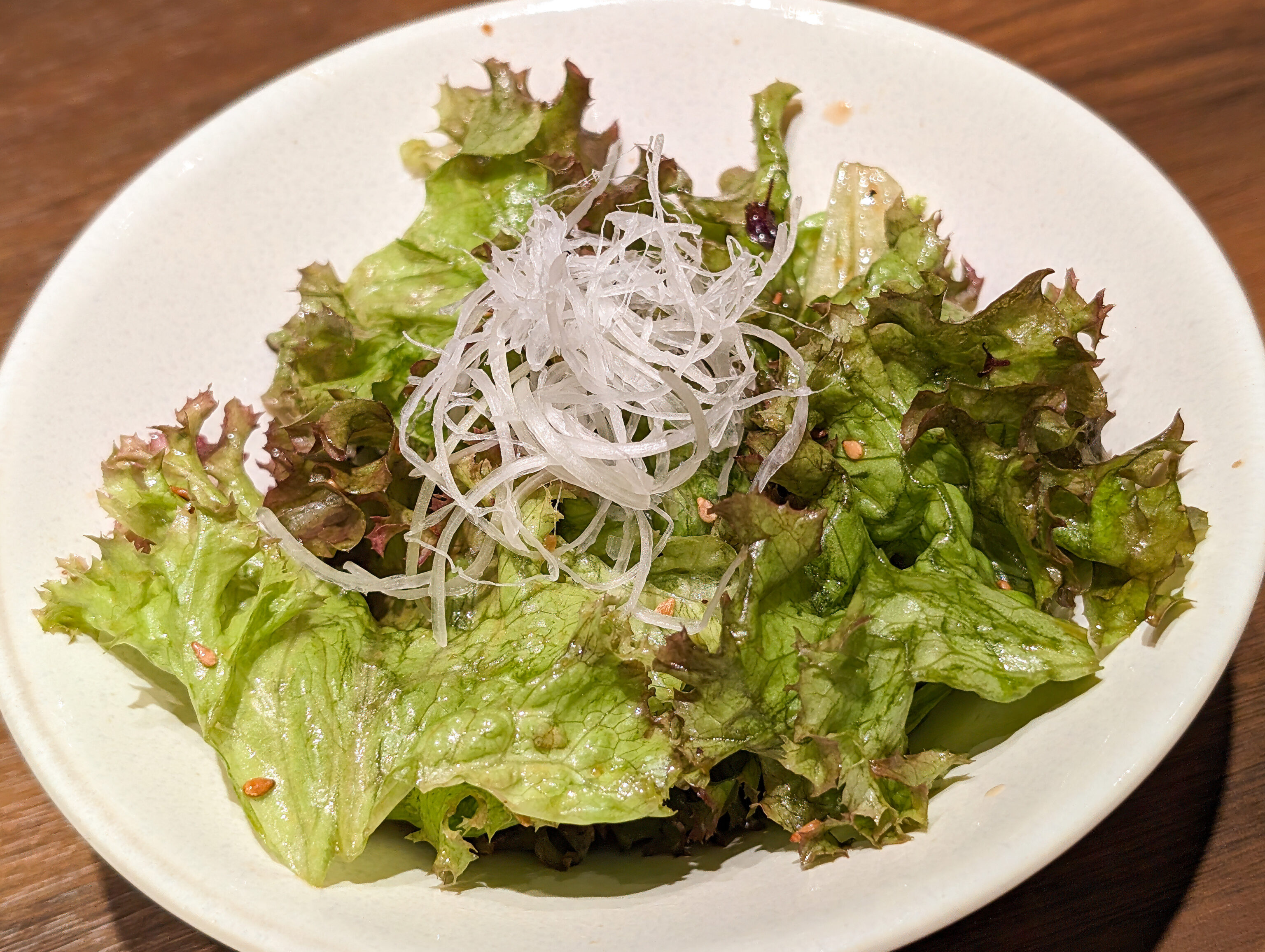
A little bit of salad followed.
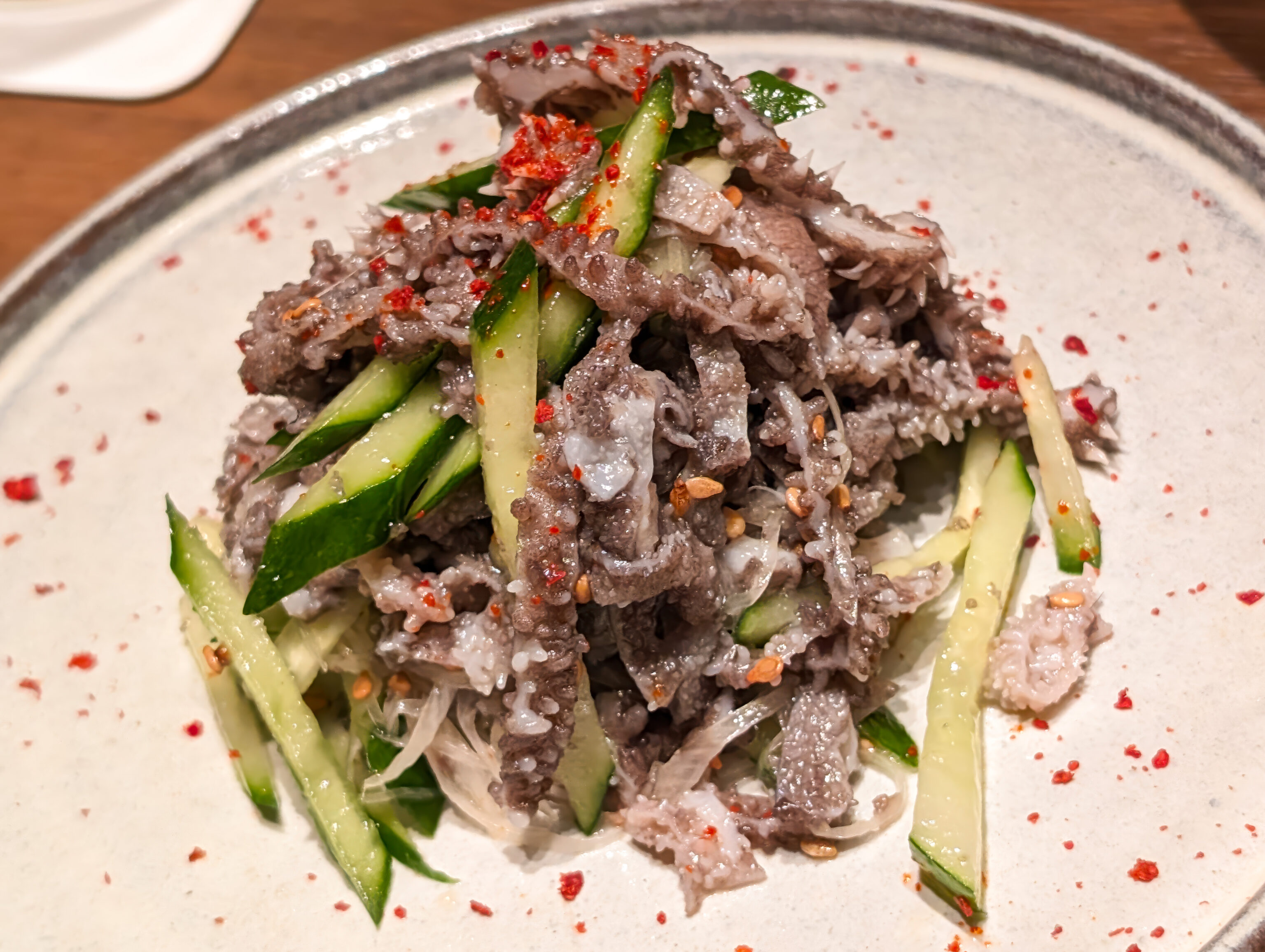
This plate had tripe along with other items. I’ve never been a tripe fan.
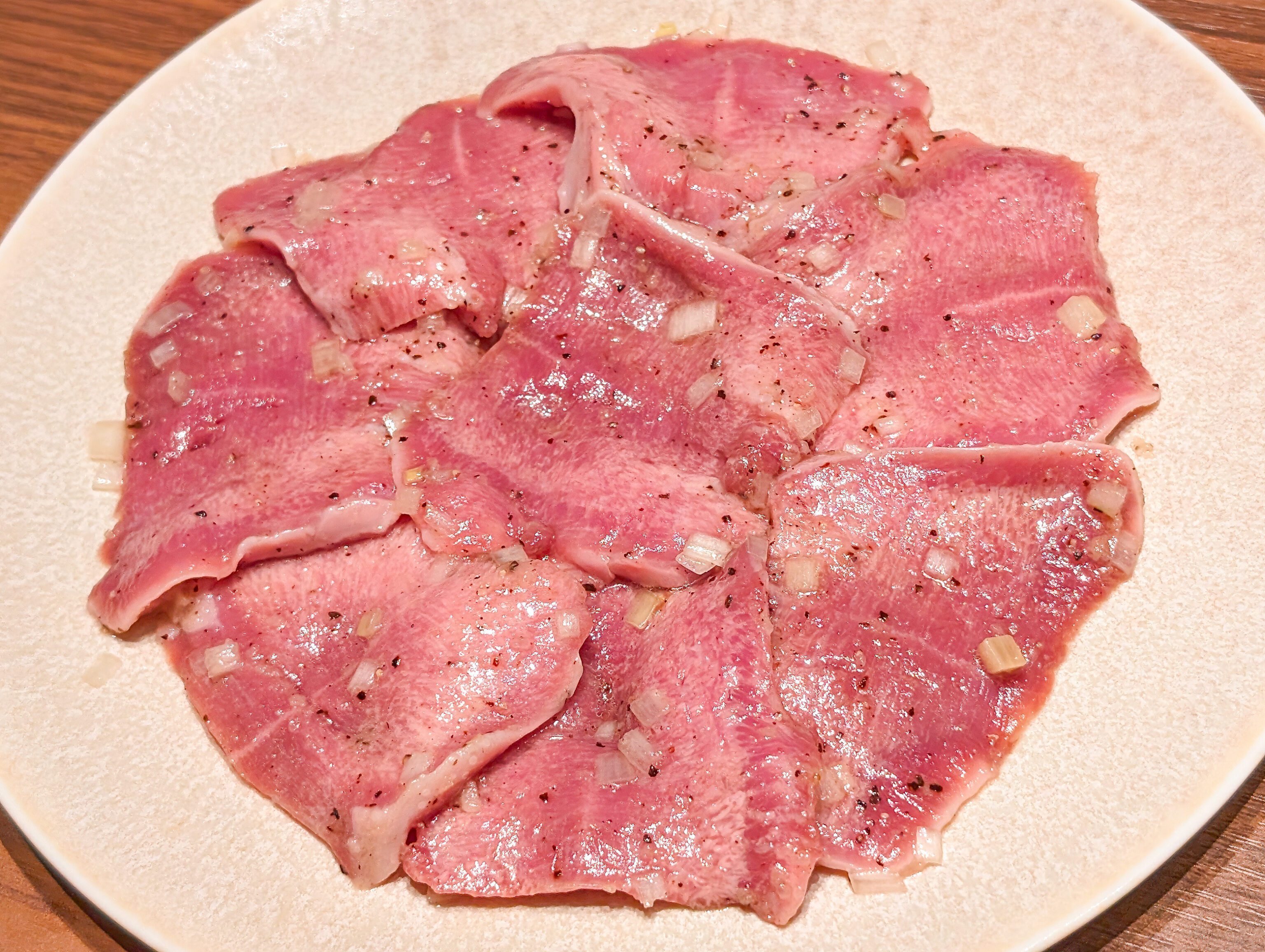
Next, we had pork tongue. All the meats from here on are cooked, though we didn’t actually photograph any of the end products. Oops!
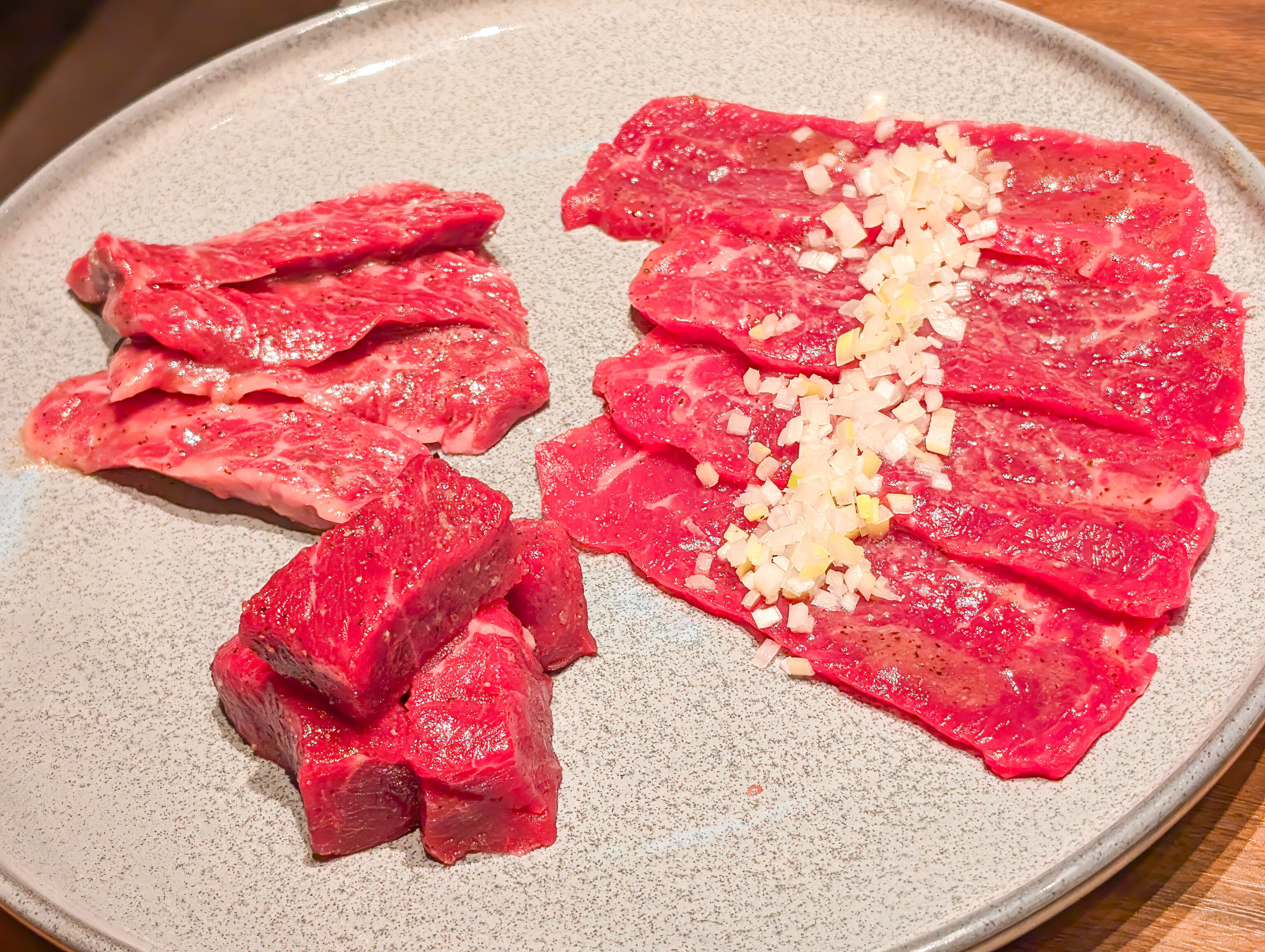
The next plate had three different cuts of meat. We’re guessing a bit at the exact ingredients, trying to match them up with a PDF menu which may not be exactly correct.
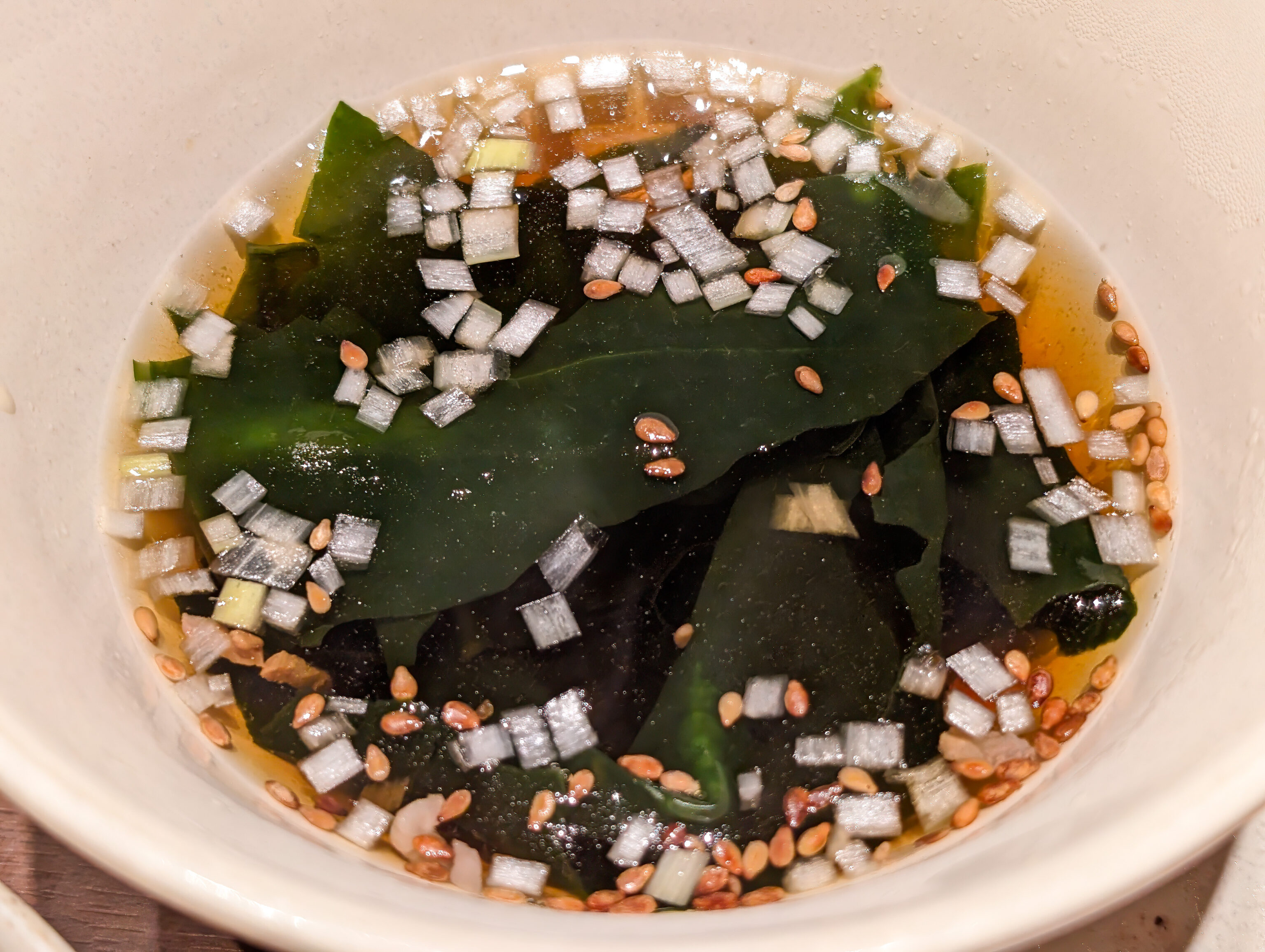
A small bowl of soup arrived next.
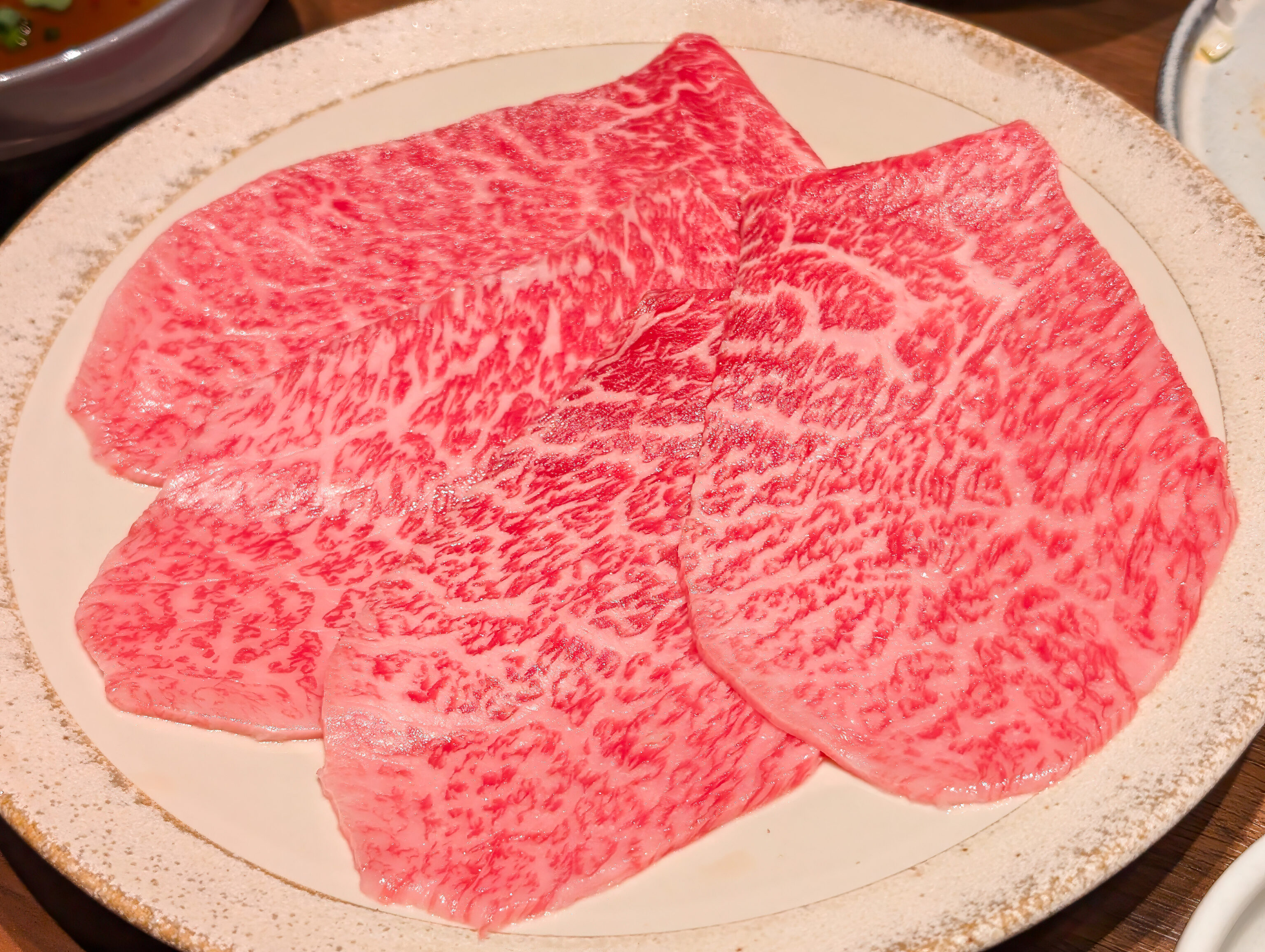
Next, we had a bit of shabu shabu.
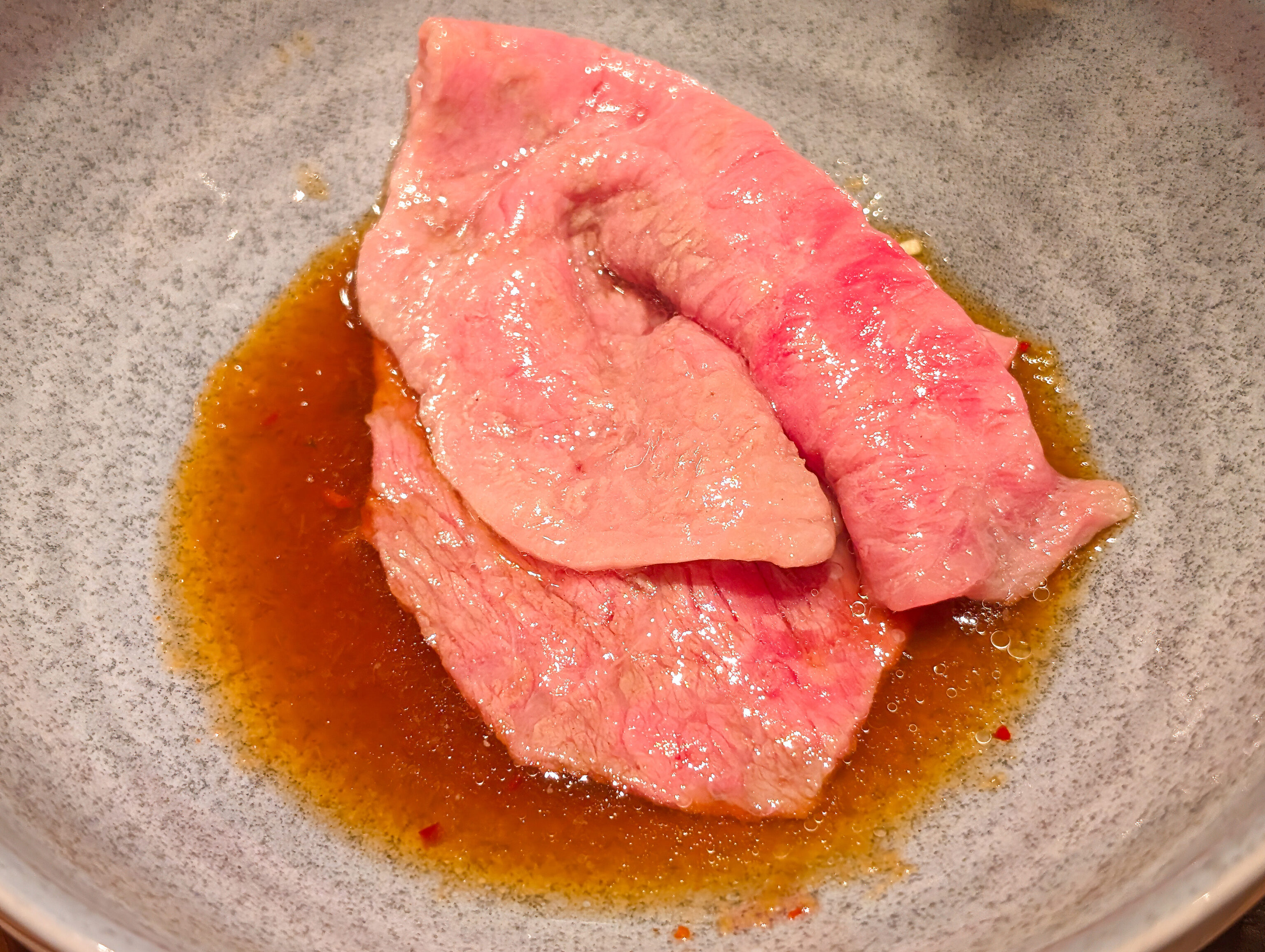
This might be “Melty Loin”?
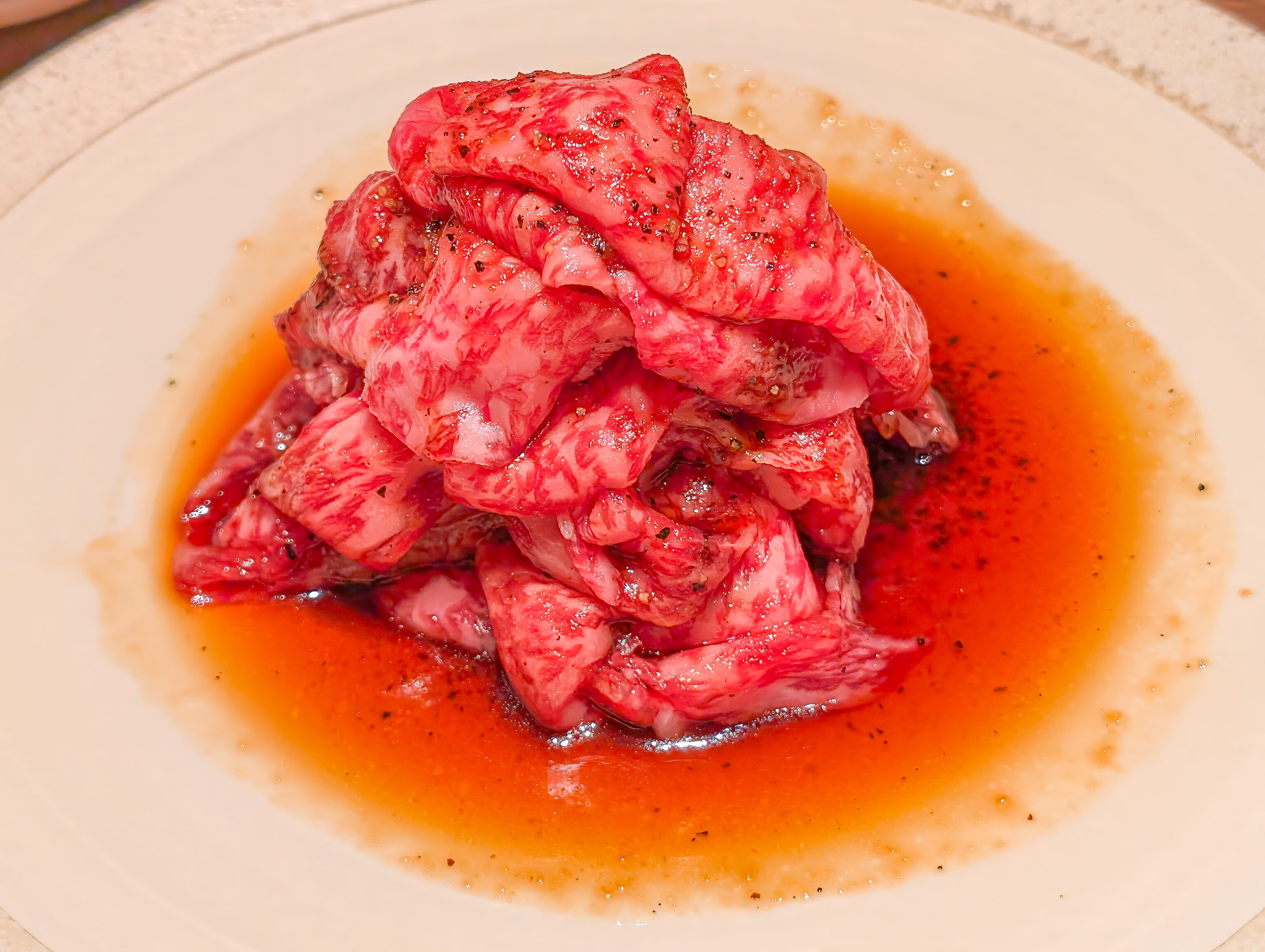
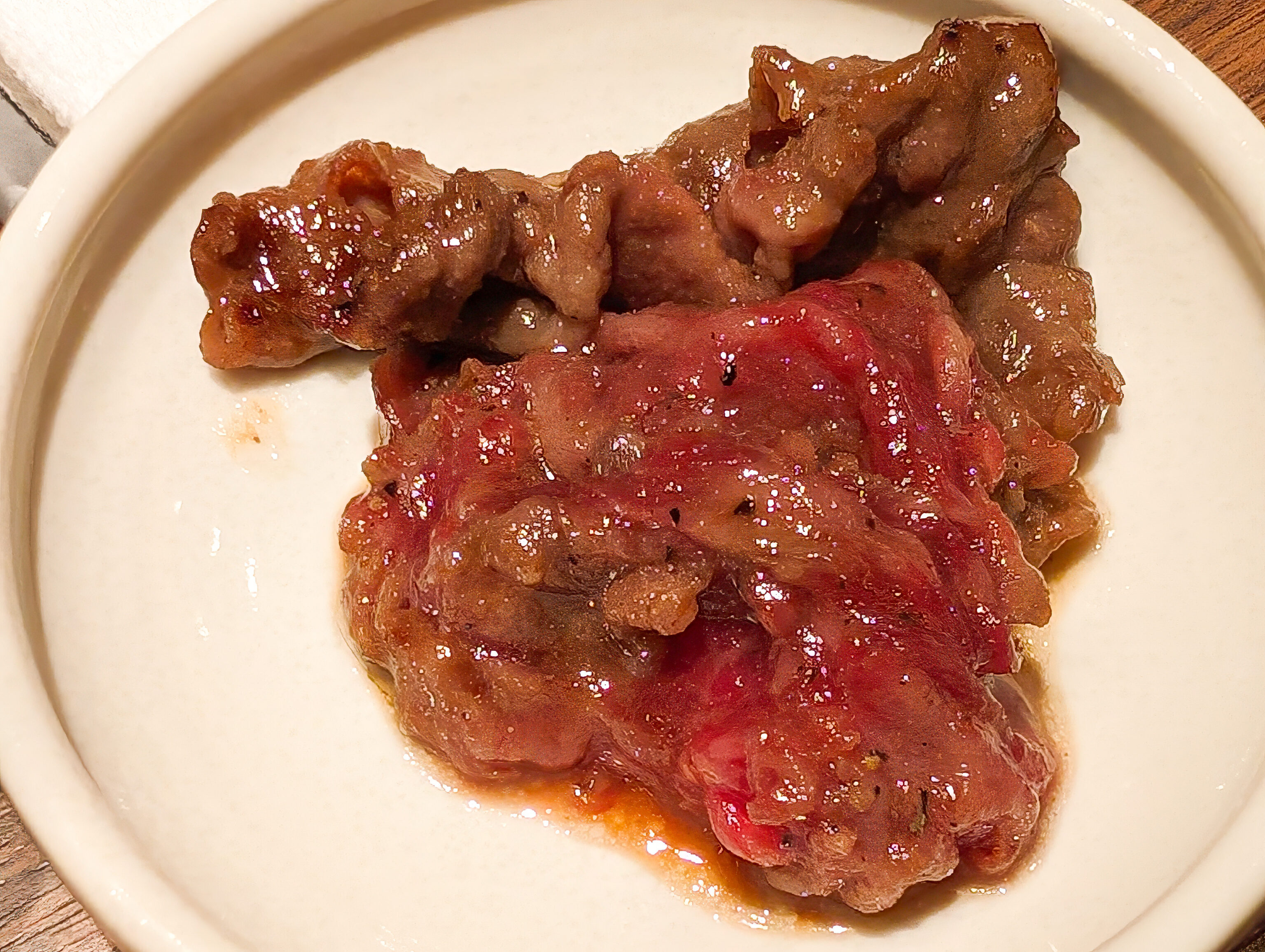
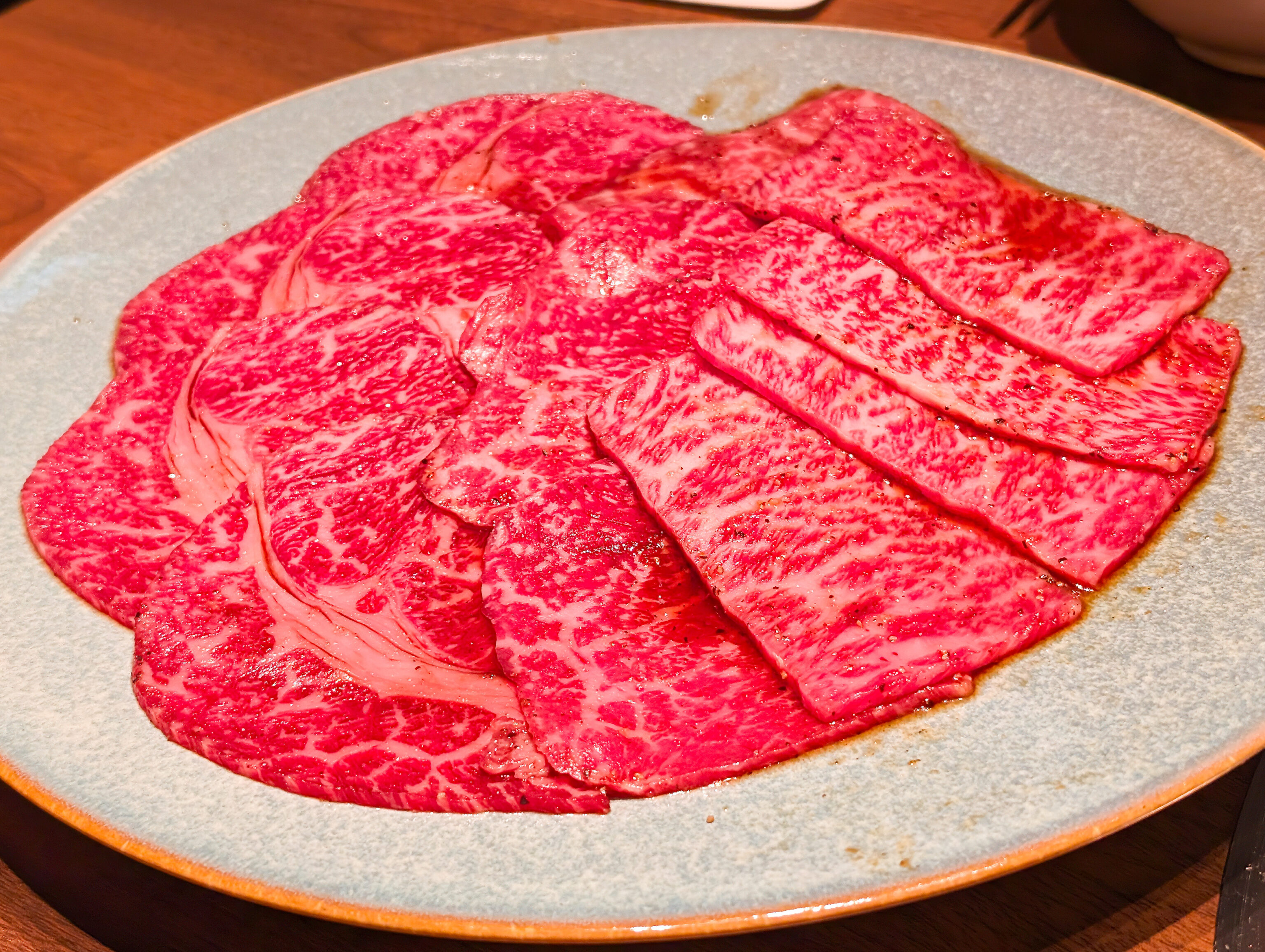
The menu states, “Three Kinds of Selected A5 Wagyu.” That is possibly these three plates?
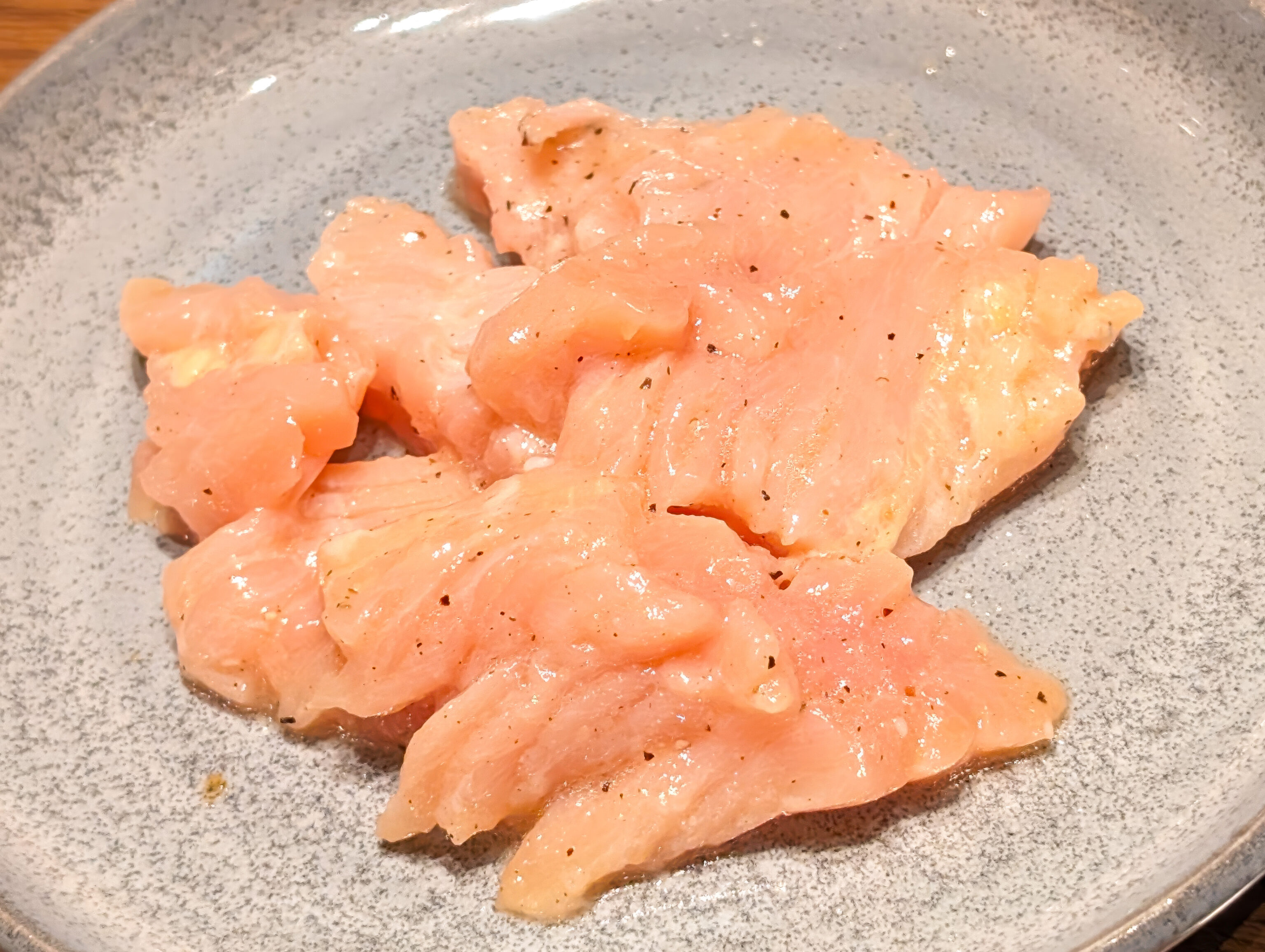
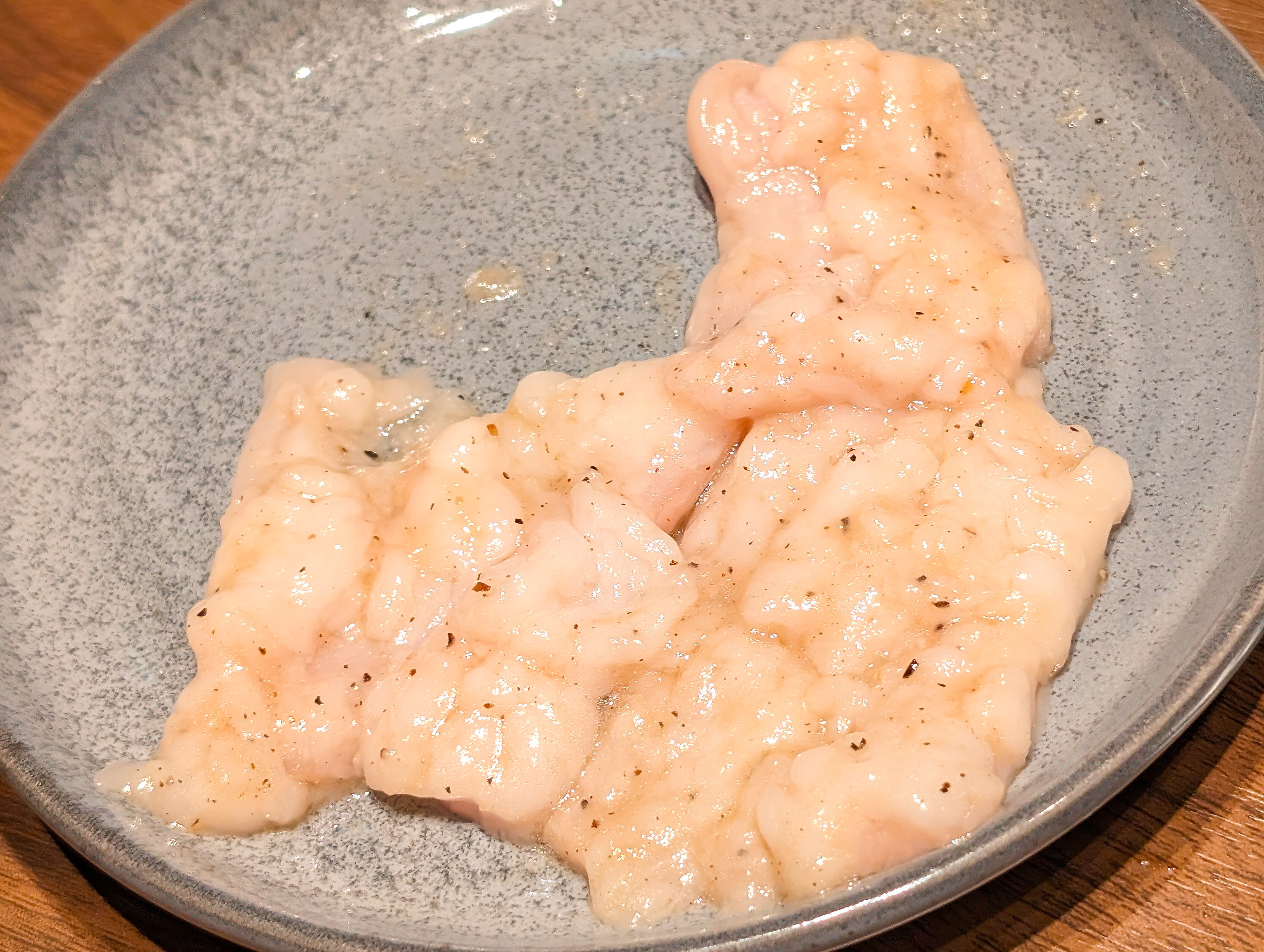
The ホルモン Horumon in this restaurant’s name translates to the English word hormone. However, in Japanese, there is an alternate definition provided by Google Translate:
牛・豚などの臓物。
「―焼き」
Offal of cows, pigs, etc.
"-Grilled"
As this restaurant’s specialty is offal meat, so we decided to try a little bit. We’re generally not into offal but it was prepared in a way that made it more or less like regular meat.
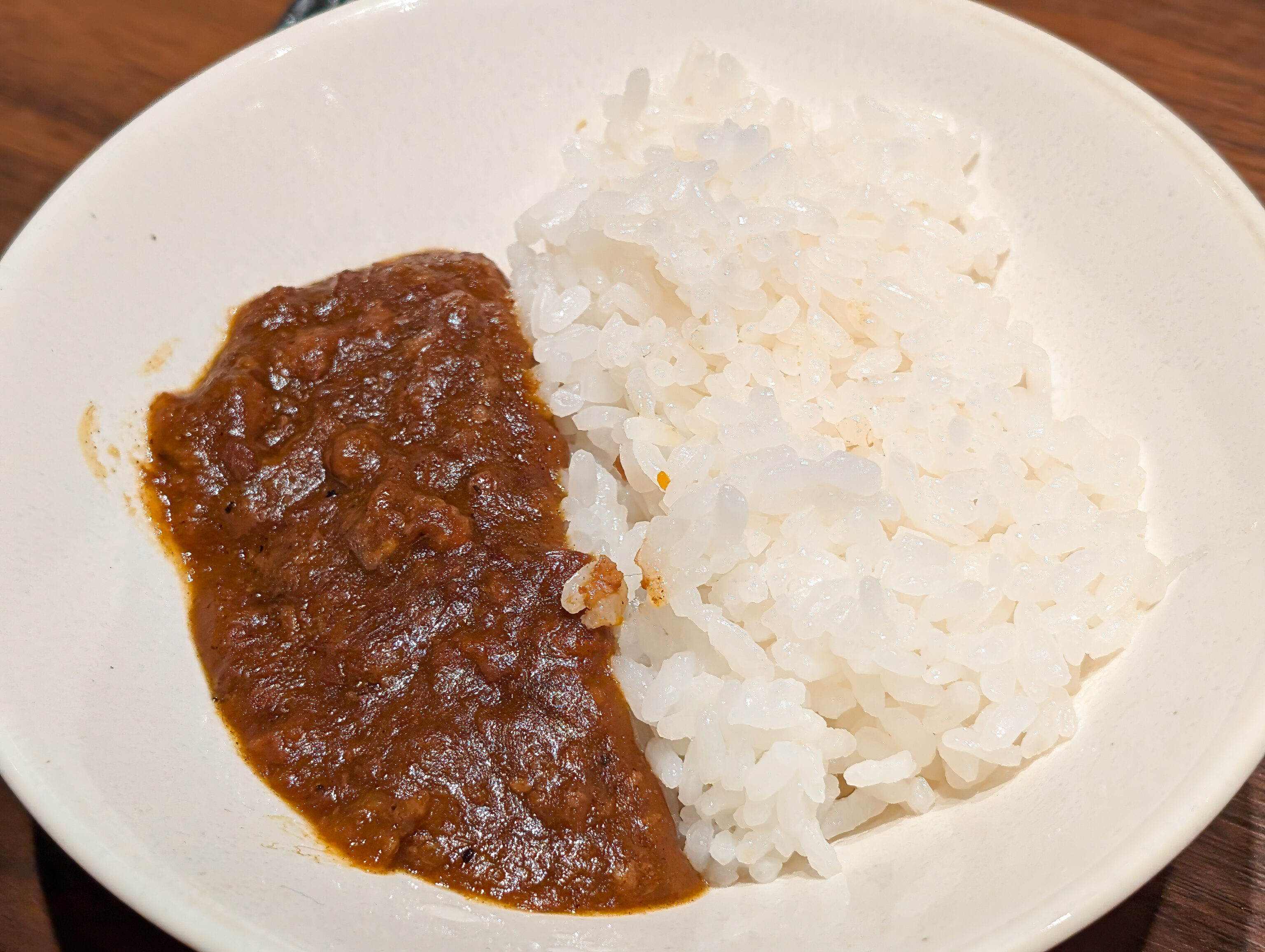
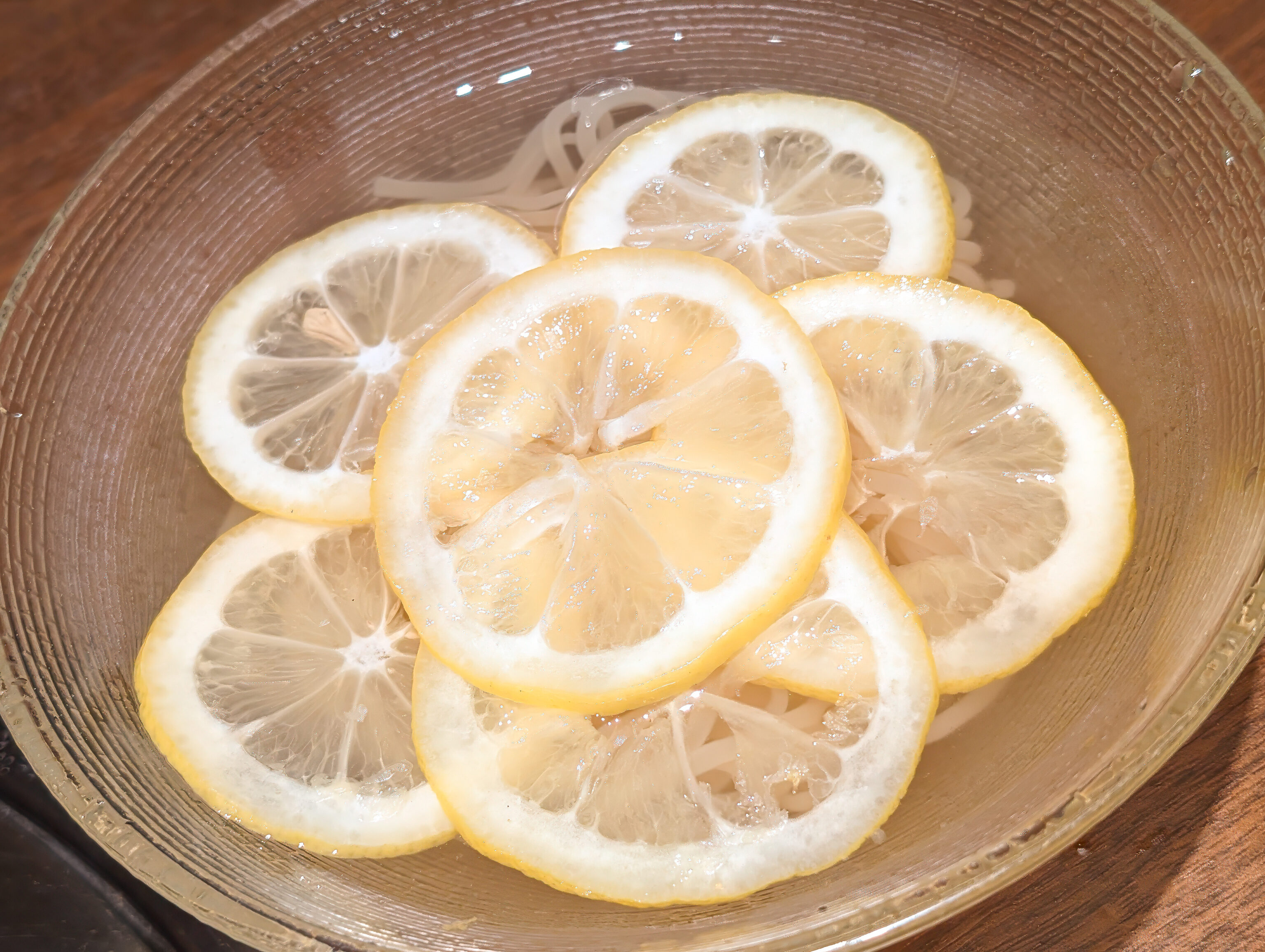
The course comes with a choice from the Noodle and Rice portion of the menu. We ended up getting some curry and cold noodles.
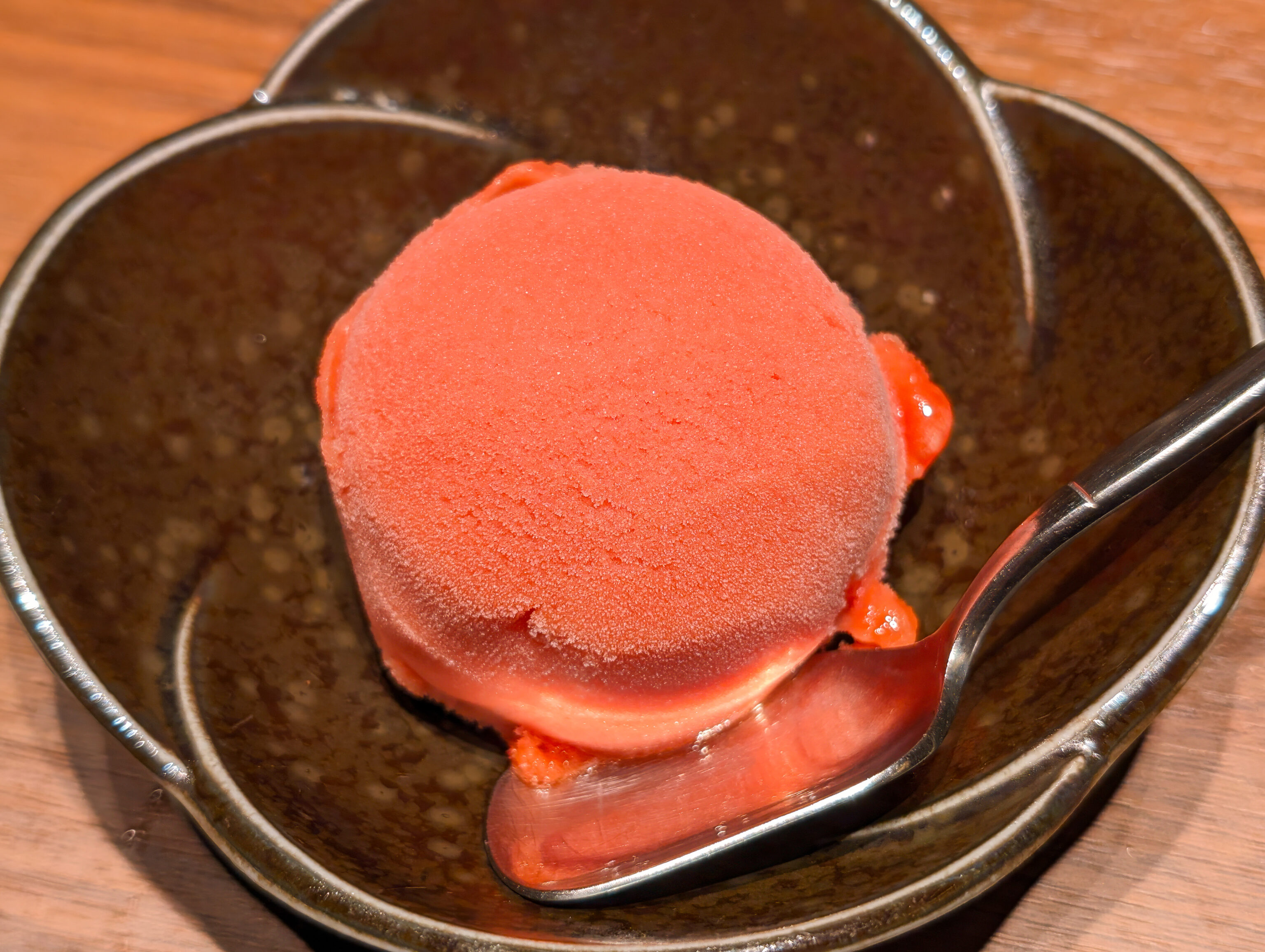
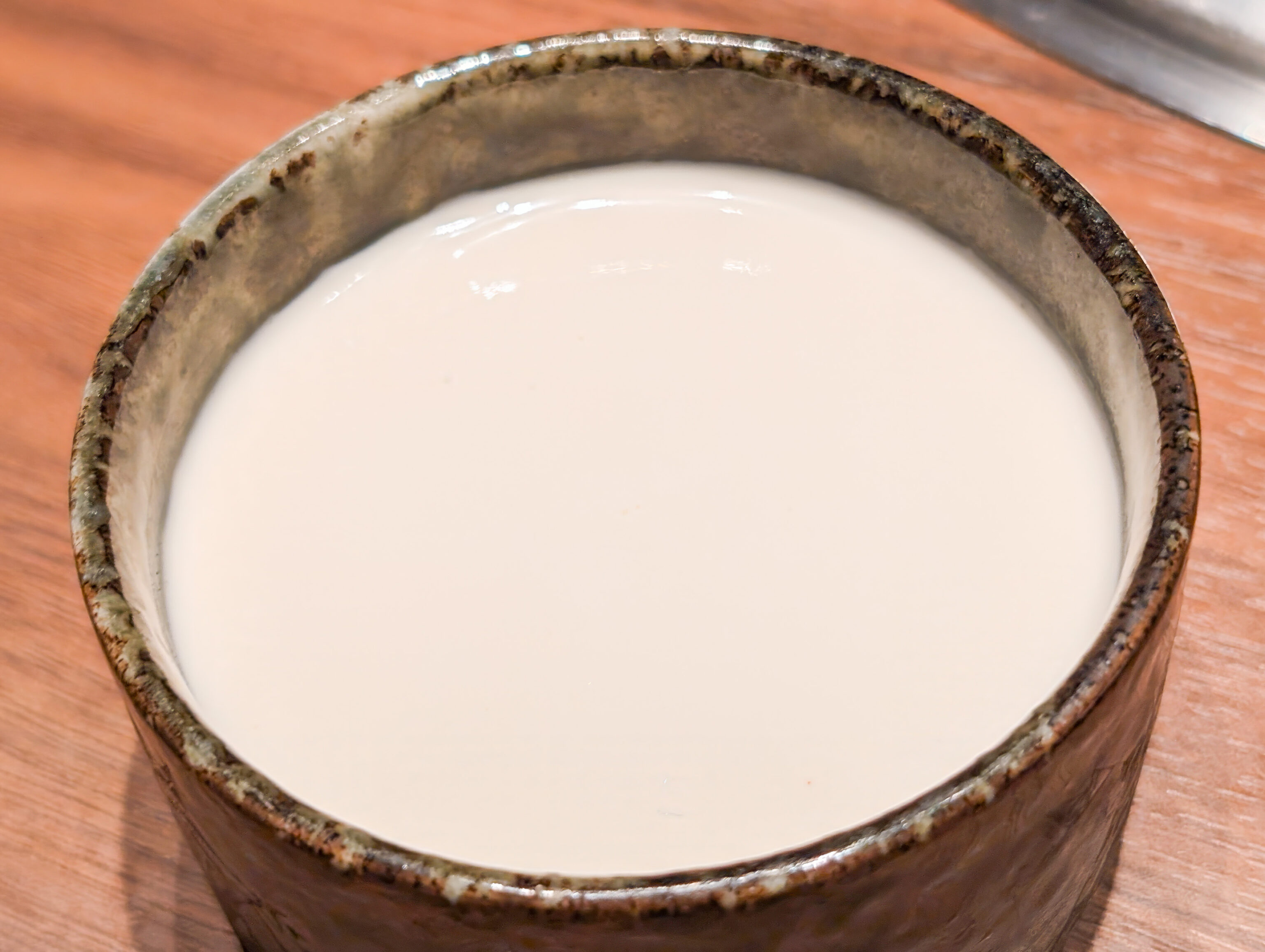
There was also a choice of desserts. We got ice cream and a coffee flavored Blancmange.
Overall, it was a fantastic dinner! Definitely some items we haven’t had before and rather different from other yakiniku restaurants that we’ve been to in Japan.
After, we ended up taking the Ginza line back to Shimbashi Station. From there, we decided to see if we could figure out the right way to walk back to the Conrad via the elevated pedestrian walkways near the station. It ended up being extremely simple, just go to the Yurikamome Line entrance, go up to the level below the platforms, and keep walking! We walked to a junction, turned right, and ended up near the Conrad.


